

Country’s stock in recovery mode

Latest numbers survey shows a rise in New Zealand’s flock and cattle herd, signalling improvements in the sector. P6


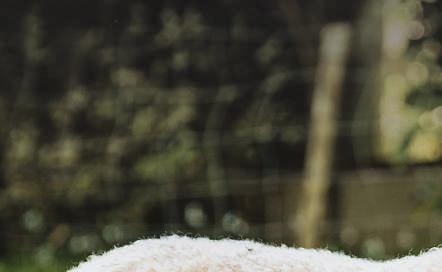

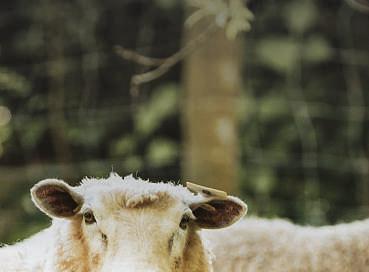

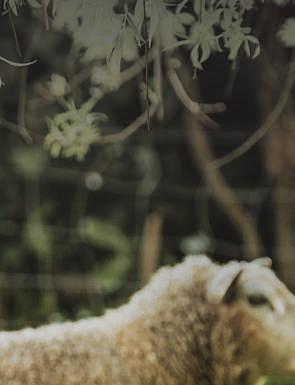
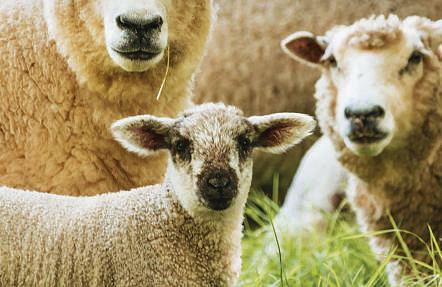
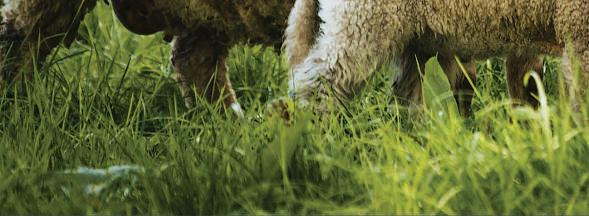
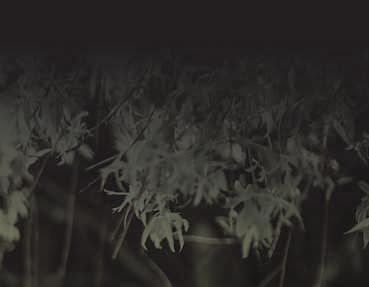
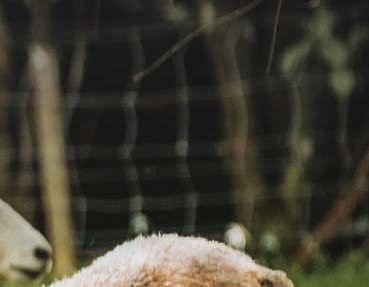
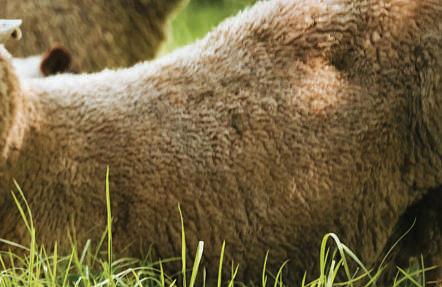
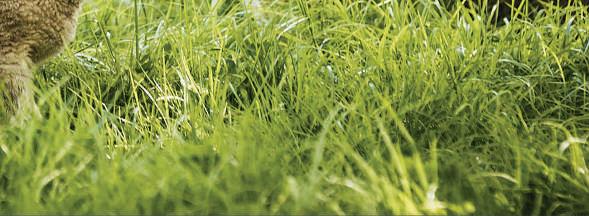


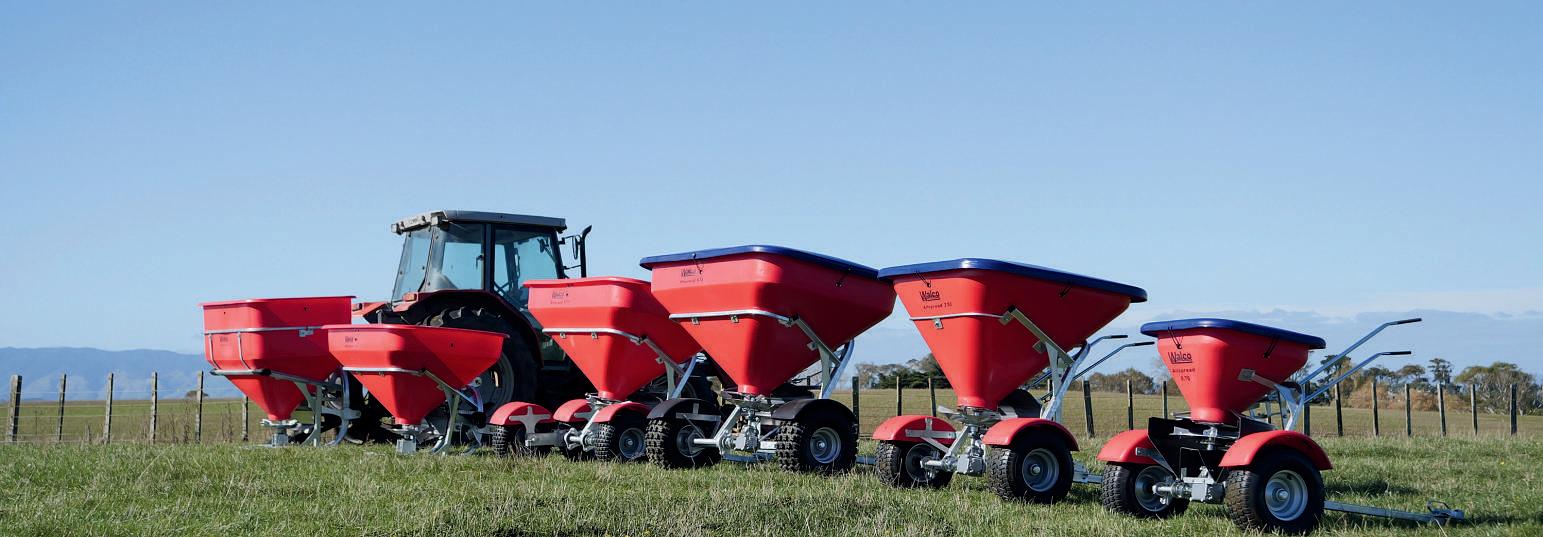


ELEVATE YOUR DREAMRIVER CRUISE

WELCOME TO ANEW WAVE IN RIVER CRUISING
Discoveraworld wherethe widestviews,award-winning suites, elevateddining offerings and authentic excursions redefine rivercruising. You’ll neverlook back...

Proposed ETS changes miss mark
Industry leaders are saying the government proposal won’t work, with productive farmland still lost to forestry.
By Sonita Chandar.
Industry leaders have been left scratching their heads at the Government’s proposed changes to the Emissions Trading Scheme (ETS) and say they won’t work.
A bill, announced in December 2024, was introduced to Parliament in June 2025 proposing a temporary restriction on converting productive farmland to forestry but Beef + Lamb New Zealand chairperson Kate Acland says the proposed changes leave the door wide open for the continued wholesale conversion of productive sheep and beef farmland into carbon farms.
“While the Environment Select Committee has proposed tightening the temporary exemptions that would allow land converted after December 4, 2024, to enter the ETS, it has not fixed the land use class rules – the very section driving most conversions,” Acland says.
“There was widespread feedback from the farming community during the select committee process that the proposed restrictions did not go far enough and it is incredibly disappointing that these concerns have not been listened to.”
The Government’s proposal is to cap the amount of farmland that can be registered in the ETS at 25%. But that limit applies only to land use capability (LUC) classes 1 to 5 – the land least likely to be targeted for carbon farming in the first place.
“The legislation will stop LUC 1-5 land from entering the ETS and cap new registrations on LUC 6 land, but this doesn’t address where the bulk of damage is being done.”
Acland says 89% of whole farm conversions have occurred on LUC 6-8 land. “This land is highly productive and vital to our sector. Without extending the moratorium to all land classes,
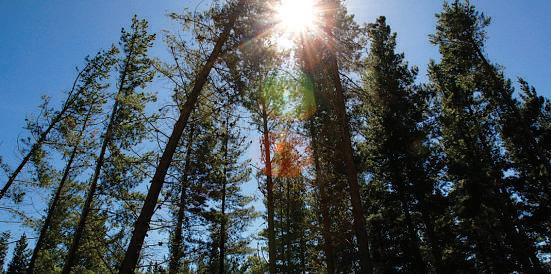
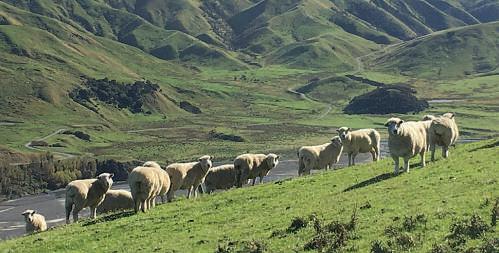
productive sheep and beef farms will keep disappearing into carbon farming or be sold to foreign multinationals. The Government must listen to farmers and extend the moratorium on whole farm conversions to all land classes, not just LUC 1-5.
According to the latest B+LNZ Stock Numbers Survey, the total area of whole sheep and beef farms sold since January 1, 2017, for conversion into forestry is now more than 300,000 hectares.
B+LNZ’s conservative estimate is that more than 2.6 million stock units have been lost to afforestation since 2017
Another 50,000 hectares is expected to be sold to forestry interests before the rules take effect.
“Without fixing these gaps, we will likely lose a million hectares by 2050, slashing stock numbers by more than 20%, and rural towns across the country will be hollowed out.”
B+LNZ analysis suggests afforestation is responsible for 78% of the reduction in sheep and beef numbers since 2017
New Zealand is one of only two
the proposed rules.
“Red meat is a cornerstone of our export economy, bringing in around $12 billion annually,” Dawkins says. “With strong prices and advances in genetics, pasture management and technology, we should be focused on improving productivity and lifting output – not losing ground.”
Dean Rabbidge, a fifth-generation farmer near Wyndham, Southland, says he has watched prime sheep and beef land disappear under pine trees.

“It’s pretty heartbreaking what we’re seeing in Southland. There are some fantastic properties that have been acquired by forestry companies and planted out in pine trees,” Rabbidge says.
“This isn’t marginal land at all –they’re clean, fertile, high-performing farms that would be in huge demand if they were in Canterbury.
“These farms underpin our red meat sector and once they’re gone, they’re gone.”He agrees the rules won’t work and rural communities will suffer further.
countries in the world – alongside Kazakhstan – that allows unlimited forestry offsets in its ETS.
“We’re not against forestry,” Acland says. “Our proposals don’t stop planting for harvest, they simply prevent the ETS from distorting land-use decisions in ways that undermine food production and rural communities.”
Federated Farmers says the proposed rule changes to limit whole-farm conversions to carbon forestry are too weak to stop damage being done to rural New Zealand.
“The draft rules have completely missed the mark,” Federated Farmers forestry spokesperson Richard Dawkins says.
“As they’re currently drafted, the proposed regulations will barely make a dent in the number of whole-farm conversions to carbon forestry.
“Unless Minister Todd McClay steps in and makes urgent changes, we’ll continue to see our productive hill country swallowed up by permanent pine forests at an alarming rate.”
He says the Government’s goal of doubling exports by 2030 is at risk under
Rural communities, particularly those reliant on sheep and beef farming, are already feeling the fallout of rampant carbon forestry. It is thought the ripple effect will go through the community as work dries up, businesses will feel the pinch and as more farming families are displaced, rural schools, services, sports teams and volunteer groups come under threat of closures.
Federated Farmers is calling for urgent changes to the draft legislation and wants the 25% ETS cap extended to all land classes, including 6 and 7, and for the Government to stop allowing companies to offset 100% of their emissions through carbon farming.
“Our national values, our future as a food-producing nation, and the resilience of our rural communities are all on the line,” Rabbidge says.
“We’re not anti-forestry and we’re not anti-property rights. But we’ve got to be honest about what’s driving this – it’s not about timber, it’s about carbon credits.
“Big emitters in the cities are paying their way out of reducing emissions, and rural New Zealand is footing the bill.”





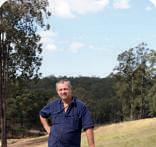
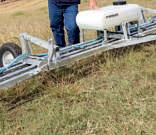


Left: The Government’s proposed changes to the Emissions Trading Scheme cap the amount of farmland that can be registered in the scheme at 25%.
EMMA ALLEN/ MARLBOROUGH EXPRESS
Federated Farmers forestry spokesperson Richard Dawkins
Right: More than 300,000 hectares of productive sheep and beef farmland has been converted to forestry since 2017.
After
Northland
Long
As
26 For sale sign is up Fonterra strikes a $3 billion deal to sell iconic brands
30 New visas welcomed
Two new visas for short-term seasonal workers have pleased agricultural leaders
NZ FARMER EDITOR
Sonita Chandar 027 446 6221
sonita.chandar@stuff.co.nz
DESIGN
Kwok Yi Lee
Nina Weil Sam Davenport

Forestry conversion of productive land must stop
Sonita Chandar Editor
As I sat down to write this, I had a feeling of deja vu. I wrote something similar about this last year and here we go again. Obviously, it is not an issue that is going away just yet and, according to industry leaders, the Government is doing little to help.
Sheep and beef is a sector that needs more than a Band-Aid to fix some of the challenges it faces.
But the latest Beef + Lamb New Zealand Stock Numbers Survey shines a more positive light on the sector’s recovery.
One of the biggest challenges for the sector is the wholesale conversion of productive farmland into forestry, which is putting the squeeze on farmers.
I have nothing against forestry, particularly on marginal farmland where steep gullies and hillsides are impractical to graze. But I do not wish to see forestry take over good, productive farmland that produces food and fibre for the domestic and global markets
Once that land is converted, it is gone, putting our export trade at risk. It’s easy to convert and plant trees, but it might not be quite so easy to go back to pastoral farming.
And there starts the snowball.
So how do we stop this from happening? Well, the Government’s proposed changes to the Emissions Trading Scheme (ETS) just don’t cut it; more and more productive farmland will be lost to forestry.
The government proposal is to cap the amount of farmland that can be registered in the ETS at 25%, but it applies only to Land Use Classes 1-5 – the land least likely to be targeted for carbon farming. It doesn’t address the highly productive and most vital land to the red meat sector, LUC 6-8.
Urgent adjustments need to be made to the ETS now before these changes take effect in October.
The Government has the chance to fix it, prove it is really listening and do the right thing. Contents
Kate Boreham 021 279 5361 kate.boreham@stuff.co.nz
Reported lower stock numbers in the South Island were due to drought, and on the East Coast Cyclone Gabrielle was the main culprit. Talk about two extremes –hot and dry in one, and cold and rather wet in the other.
The good news is that some regions are reporting higher stock numbers as farmers rebuild their flocks and herds and plan for future supply.
The sheep and beef sector is our second largest goods export earner, but in recent years, there has been a downturn in the red meat sector. It has been widely reported that many farmers will make a loss this season.
The impact on rural communities will be immense, as populations in these areas are likely to decline due to forestry blocks requiring fewer workers than sheep farms.
As jobs dry up, farming families are displaced, which has the flow-on effect of decreasing services in areas that are already struggling.
Rural GPs, health services, schools, sports teams and other community groups are at risk of closing and disappearing.
Services such as bank branches close or are reduced and businesses shut up shop as they can no longer be financially sustainable, in turn leaving those rural communities feeling even more isolated

I do not wish to see forestry take over good productive farmland that produces food and fibre domestically and globally.

KELLY HODEL/ WAIKATO TIMES
Constant change is simply business as usual for farming
Soil scientist Doug Edmeades says there have been numerous advances across all aspects of farming that keep the industry’s wheels turning.
Change upon change is the title of a poem by Elizabeth Browning, written in 1846 This fragment has been on my mind recently as I have tried to put my grandfather’s early farming experience into its historical context.
He went farming in 1920 when he purchased 100 acres (40 hectares) of fern and heather-covered land on the edge of the volcanic plateau in the South Waikato (near Putāruru).
Only about 30% of the farm was regarded as developed. The transaction included 18 cows, with nine being in-calf
He milked his small herd by hand until 1924 when a milking machine was introduced. Initially, he was paid 2 shillings and 6 pence per pound of butterfat, but this came down to 6p when the economic depression took hold in the early 1930s.

To make ends meet, he applied his skills as a ticketed plumber during the day and his son – my father – left school aged 14 to help him on the farm.
The New Zealand Co-operative Dairy Company celebrated its 50th anniversary in 1936 and reported that the average dairy herd at this time was about 50 to 60 cows, which was regarded as the economic number It was noted, however, that some farmers were succeeding with 20 acres, running 15 to 20 cows.
During my formative years (the 1960s), I can recall two men were required to milk 80 cows in a walk-through cowshed. One neighbour milked a staggering 100-odd cows. We were most impressed. I had five brothers and we were all pressed into service when we were old enough to handle a man’s task in the milking shed.
A herringbone shed was built in 1964. Some years later while still at school, I reached my farming zenith when I milked all 80 cows by myself – I felt very proud. What a man!
This farm has now been amalgamated with neighbouring farms and has expanded to 188ha, with 515 cows milked through a rotary cowshed utilising three staff and producing 230,000 kilograms of milk solids per annum. This is very similar to that national average of 162ha and milking 448 cows. The milk value is currently about $10/kg of milk solids.
One hundred and five years have elapsed since my grandfather started farming. Over that time, there has been nothing but change upon change. Walkthrough, herringbone and rotary are the milking sheds now.
We have gone from horses to tractors and manual muscle work to machinery work. We used manure; now we deploy fertilisers and do soil testing. Day-night paddocks have evolved to rotational grazing, electric fences and controlled
grazing. We once used only bulls; now we also use artificial insemination. Native grasses have changed to improved pasture cultivars, weedicides and pesticides The list could go on and on.
And apparently, we have only just started – automatic milking, fenceless farms and artificial intelligence are coming our way.
This is but one local example in one industry of the consequences of the intellectual and cultural movement called The Enlightenment – also known as the Age of Reason – that commenced in the 18th century. As expressed by Google’s AI overview: “This period saw significant advancements in science, philosophy, society and politics, challenging long-held beliefs and promoting ideals like liberty, progress and tolerance.”
I repeat this because Steven Pinker, in his recent excellent book Enlightenment Now, suggests that this movement needs a vigorous defence against all those “cultural pessimists who insist that civilisation is in terminal decline”.
The point is, it could decline unless the enlightenment values – reason, science and humanism – are continually asserted.
Given this progressive history, I wonder why there are those – greenies and others – who insist that our current crop of problems in the dairy sector could be solved by going back and farming like Granddad. Really?
ADVERTISEMENT
TeamingUpfor BetterFarming
For AndyHawkings, running a240-hectare dairyfarmnear Hamilton with 600 cows is allabout striking theright balance between preparationand adaptation.
With peatsoiland aclimate prone to dryspellsand droughts, Andyrelies on trustedpartnersto help himkeep hisfarm productiveand sustainable
Among thosepartners,Brett Wallace, aFarm Source Technical Sales Representative, hasbecomeinvaluable— not just forthe productsheprovides but forthe advice andlocal expertise that helpAndy make smarteron-farm decisions.
Tailored Advice That Makes a Difference
Dryperiods can be especially tough, and Andy knows theimportance of having pastures that perform even in tough conditions. That’s where his partnership with Bretthas proven essential.
“Brett brings greatvalue to our
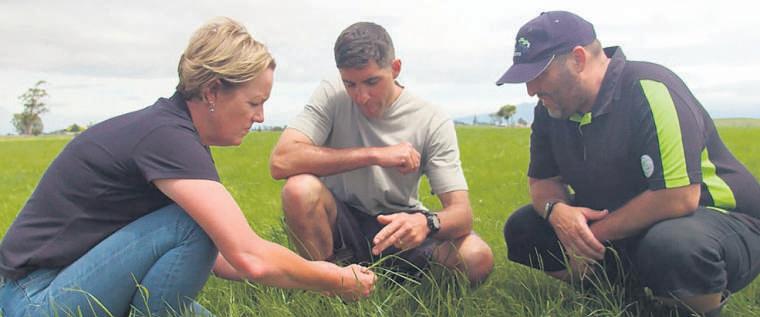
business,” says Andy. “Whenever I have problemsthat happen on farm, and Idon’t always have theanswers, I know Brett can bringhis knowledge to ourbusiness, and to me,that’s agreat support.”
Having someonelikeBrett in his corner givesAndy theconfidence to tackleissues knowing he doesn’thaveto comeupwith solutionsalone.Together they assessthe problem andworktoward long-term fixes rather than temporary band-aids.
Oneareawhere Andy andBrett’s collaboration shines is pasture renewal. Both recognise thatgood pasture management is key to maintaining productivity.Byworking together, they identified paddocks whereperformance could improveand introduced Array, aperennial ryegrassdeveloped by Barenbrug, into Andy’ssystem.
“Thisisthe second season of having
Array,”Brett explains.“We’vebeen abletolook at paddocksthat aren’t performing up to hishigh-performing paddocksand plug Arrayintothat system.”
Andy was impressedwith Array’s performance right away, particularly duringdry spells whereitoutperformed other pasture he hadtriedpreviously "Onthat first trialseason,I was really impressedwith it,”Andy notes. “Especially againthrough some drymonths, Inoticed it was really outperformingsomeofthese other pastures that we had previously.”
LocalKnowledge Backed by Relationships
Julie Gaukrodger, Area Managerfrom Barenbrug, worksalongside Brett through theFarmSource partnership to maximise results andshares insight into whyArray is such afitfor Andy’sfarm. “Array’s
beenbred to be easy to eat, it grows upright, and cows clean it up.” Julie’sseed expertise complements Brett’son-theground advice, creating atrustedcircleof support that ensuresfarmers like Andy have thetoolstheyneed to succeed.
For Andy, thestrength of Brett’s advicecomesfrom his localknowledge and therelationship they’ve built over time. Brett doesn’t just talkabout farmingconcepts; he’sout therewalking paddocks, understandingchallenges and opportunities specific to Andy’sproperty. This personalised, hands-on approach means adviceisrelevant to Andy’sgoals “It’saboutknowing thefarm intimately,” Brett says, “sowecan bounce ideas back and forth.Andy and Ihave built areally good working relationship, and that shows in theresults.”
ForAndy Hawkings, successful farming isn’tjust about figuring everything out alone—it’s about working withthe right people whocan helphim solveproblems andfind better ways of doingthings. As Brett sums up, “Great pasture renewal at Andy’sdoesn’tjust happen—it’sa team approachtodeliver profitable, sustainableresults.”
Andy’sstory highlightsthe value of relationships based ontrust, tailored advice, and collaboration withlocal expertise.Whether it’sleveraging pasture solutions like Array, managingpaddocks better, or setting up thefarmfor success throughthe seasons, Andy’spartnership withFarm Source and Barenbrug demonstrates thereal impact of working together. ■
Soil scientist Doug Edmeades
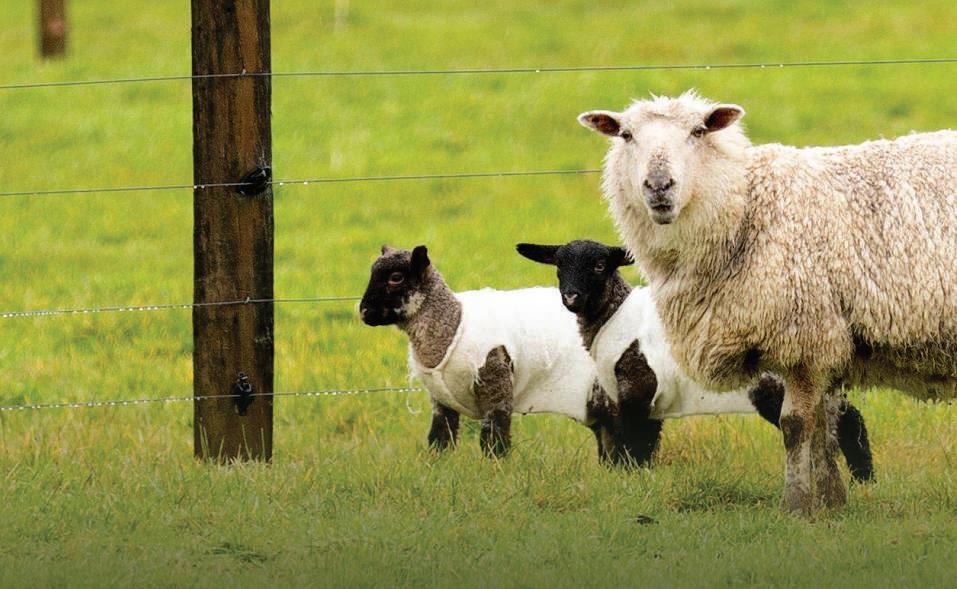



Recovery in numbers but challenges remain
The recently released Beef + Lamb New Zealand Stock Numbers Survey shows farmers are rebuilding their flocks and herds following a tough few years.
By Sonita Chandar.
Sheep and beef numbers are on the rise indicating recovery in the national sheep flock and the national beef cattle herd Beef + Lamb New Zealand (B+LNZ) recently released its annual B+LNZ Stock Number Survey, which provides an assessment of the stock numbers between June 20, 2024, and June 30, 2025.
The report summarises the results from a survey carried out to estimate the number of sheep and beef cattle on hand at June 30 and provides estimates for the change in livestock numbers four months before provisional figures are available from the Statistics New Zealand Agricultural Production Survey.
The survey shows New Zealand’s total sheep numbers fell modestly by 1%, in contrast to sharp falls in recent years, while beef cattle numbers rose 4.4%.
B+LNZ chairperson Kate Acland said the survey shows there are reasons for optimism in the sheep and beef sector given recent strong prices, although significant challenges remain.
“We’re seeing rebuilding of stock numbers in several regions after drought and other adverse weather events led to sharper reductions in the last two years Farmers are getting much better prices and are feeling more confident about shorter-term prospects.”
Several areas such as TaranakiManawatū and Northland-Waikato and Bay of Plenty recorded above the average reductions due to a combination of dry conditions and land-use change. Regions like East Coast and MarlboroughCanterbury showed signs of active flock rebuilding and growth in trading
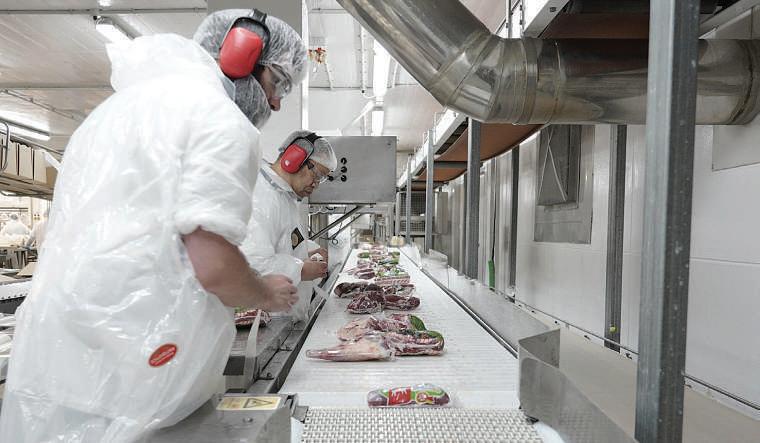
hogget numbers as they rebuild from Cyclone Gabrielle and drought last year. This recovery has been supported by strong continued prices for beef and a turnaround in sheep prices in the last nine months.
The decline in total sheep numbers is modest as there were more trading hoggets on hand due to the late season.
Total hogget numbers increased 1.7% to an estimated 8.36 million. Total sheep numbers decreased to 23.36 million (-1.0%) with fewer breeding ewes in most regions of the country, largely because of ongoing land-use change and periodic feed shortages. The decrease in breeding ewes is down by 1.9% to 14.28 million and is the indicator to watch for the direction of production.
“Worryingly, however, the number of breeding ewes continues to decline, down 1.9%, and the lamb crop is forecast to be 0.6% lower this season – that’s nearly 120,000 head fewer, on top of a 1.2 million reduction in lambs last year
This will only exacerbate already tight supply, Acland said.”
Meat processors struggled this year with low lamb supply and will likely again this coming year The potential lamb crop and calving outlook for spring 2025 is based on condition of breeding livestock and available pregnancy scanning results.
Productivity and results of pregnancy scanning were shaped by climatic factors, including a dry autumn and facial eczema, along with pasture growth limitations affecting overall sheep performance.
The spring 2025 lamb crop, estimated at 19.29 million head, is 120,000 lower than last season. This decrease is on top of a significant 1.5 million fewer lambs born last season. However, an improvement in ewe lambing percentage is expected on last season but weather conditions at lambing and calving will be critical.
Beef cattle numbers increased 4.4% to 3.84 million head. Growth was strongest in Marlborough-Canterbury, which is up 9.5%, and the East Coast, which is up 5.3%.
This growth was driven by strong cattle prices, improved feed conditions, a rebuild in herds following drought in the South Island last year and Cyclone Gabrielle (2023) in the north, and a shift within farming systems from sheep to beef cattle as cattle prices have been consistently high.
Strong farm-gate prices gave farmers an incentive to shift focus towards beef cattle due to lower labour requirements and strong beef cattle farm-gate prices. This was despite the uptick in farm-gate prices for sheep.
Breeding cows and heifers mated increased by 2.8% to an estimated

JONATHAN ABPLANALP/TARANAKI
1.02 million head at June 30, 2025. This means about 28,000 more cows were mated. The highest increase in the number of cattle was seen in Marlborough-Canterbury and East Coast, with an estimated 9400 and 10,000 head respectively. Survey farmers indicated they were planning for future supply.
Total weaner beef cattle numbers also increased by 4.1% to an estimated 1.18 million head. Beef weaner cattle numbers were steady in NorthlandWaikato-Bay of Plenty (-0.3%) and plenty of feed in the northern and central parts of the South Island allowed for more weaner cattle than last year.
The number of beef calves born in spring is expected to increase 2.8% to an estimated 871,000 head due to more breeding cows and the increase in heifer number mated.
Good conception rates were recorded due to cows being in better condition than last season. However, higher empty rates and trace mineral (selenium) deficiencies emerged as management challenges in Taranaki-Manawatū, but the broader outlook for calving and herd rebuilding remains positive.
Despite the increase in the national flock and national cattle herd, challenges remain to the sector and in particular conversions to forestry remains a major concern for farmers and the sector overall.
“However, the rebuild could have been stronger if we hadn’t continued to lose land to forestry. This is creating ongoing concerns about our sector’s longer-term viability,” Acland said.
Independent analysis by Orme Associates showed the total area of whole sheep and beef farms sold since January 1, 2017, for conversion into forestry is now more than 300,000 hectares.
“Our conservative estimate is that 2.6 million stock units have been lost to afforestation since 2017, and afforestation is responsible for 78% of the total reduction in sheep and beef stock numbers since 2017
The land-use change into forestry also has an impact on rural and regional communities and economies. Where there are fewer sheep and beef farms, in particular where forestry has displaced livestock, jobs disappear and
number
the
The annual B+LNZ Stock Number Survey shows sheep and cattle numbers in the national flock and herd are rising.
DAILY NEWS
Meat processors struggled last year with low lamb supply and will likely again this coming year.
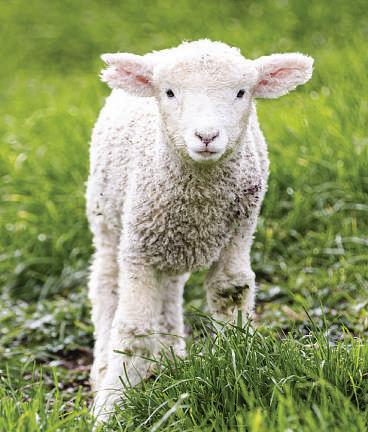
of people in those communities reduces, which has a flow-on effect for schools, hospitals, local businesses and social infrastructure.
The impact on those people directly servicing the farms, such as transport firms, shearing contractors, veterinarians, aerial services, fertiliser co-operatives, agri-equipment services, meat processors and more is being keenly felt in regional economies.
And when business are feeling the pinch, they may close up shop or move elsewhere, leaving those rural communities with none or limited services.
With families moving away for work, schools and medical centres may lose funding or close entirely, leaving communities feeling isolated which makes it difficult to attract people into the area.
The Government has set a goal of doubling exports by 2034 and Acland said
“
Our farmers pride themselves on delivering high-quality, sustainable, nutritious red meat.
Kate Acland

sheep and beef farmers will be essential to achieving that goal. Currently, nearly 20% of New Zealand’s export earnings
$10.4 billion in 2024
come from the red meat sector
“But we can’t double exports if we’ve planted our best farmland in pine trees. We’re calling on the Government to do more to restrict whole-farm sales for entry into the ETS.”
The Government has introduced legislation to place some restrictions on whole farms being able to be entered into the ETS, but B+LNZ is concerned these restrictions do not go far enough.

B+LNZ analysis indicates a further 700,000 hectares of productive farmland could still be converted into forestry and entered into the ETS under the proposed new rules, which would see one million hectares converted into forestry between 2017 and 2050.
Other challenges include US-imposed tariffs, which have been raised to 15%, which has come as extremely disappointing news to red meat sector
New Zealand’s red meat sector is deeply disappointed by the United States decision to increase tariffs on New Zealand exports.
“This move places our farmers and exporters at a clear competitive disadvantage in one of our most valuable
VANESSA LAURIE/ TARANAKI DAILY NEWS
Left: Beef cattle numbers increased 4.4% to 3.84 million head as farmers rebuild their hereds and plan for future supply
markets,” Acland said. “New Zealand now faces higher additional tariffs than many of our competitors in the US market, including Australia. Only Brazil and Nicaragua face higher additional tariff levels now.
“The increase undermines the level playing field and risks diverting trade flows away from New Zealand, despite extremely strong demand for our products.
“Our farmers pride themselves on delivering highquality, sustainable, nutritious red meat. These additional tariffs make it harder for our farmers to receive fair returns for their products.”
Nathan Guy, chairperson of the Meat Industry Association, said the US was New Zealand’s largest market for red meat in the year to June so the increase in tariffs would likely have implications for the global beef market
“While New Zealand has a robust trade strategy with well-established positive relationships across more than 100 markets, this decision is a setback to our red meat exporters.
“Tariffs distort trade and reduce market efficiency, ultimately forcing exporters and producers to accept lower prices while leaving consumers with fewer choices and higher costs.
Guy said the US beef herd is at historically low levels with record domestic beef consumption, so they were optimistic the demand from the US for
Long-term trend in sheep and cattle numbers
Total sheep numbers have decreased 45% since 2000-01.
Over 25 years from 2000-01 to 202526, total sheep numbers declined by almost 19 million head (-45%) from 42.26 million to an estimated 23.36 million. In 2025-26, beef cattle numbers were 8.4% lower than in 2000-01, down from 4.20 million to an estimated 3.84 million (-351,200 head), having fluctuated since 2000-01 with growth in total beef cattle numbers since 2022-23.
In the early 2000s there was a significant conversion of sheep and beef farms into dairy – driven by strong milk returns. In the last seven years a primary driver has been the conversion of sheep, beef, and deer farms into forestry driven by the artificially high returns that can be gained from carbon farming.
Other factors that have seen reductions in the area of sheep and beef farmland have been retired tussock country, environmental policy with farmers reverting grazed pasture into woody vegetation, and urban encroachment onto farmland –especially lifestyle blocks near towns and cities. Viticulture and horticulture have also expanded onto grazed grassland areas to a lesser degree.
Pastoral grazing and cropping within sheep and beef farms averaged about 85% of the total sheep and beef farm area in 2024-25. The non-grazed 16% of farmland was largely native scrub and regenerating woody vegetation, mature bush, wetlands and shelter belts and exotic forest.
beef and lamb will remain, despite the tariff increase.
“We’re hopeful the New Zealand Government can seek a resolution that restores fair access for New Zealand’s red meat exports to the US.
“The New Zealand red meat sector will continue to advocate for open, rulesbased trade that supports our farmers and ensures consumers around the world have access to high-quality, sustainably produced food.”
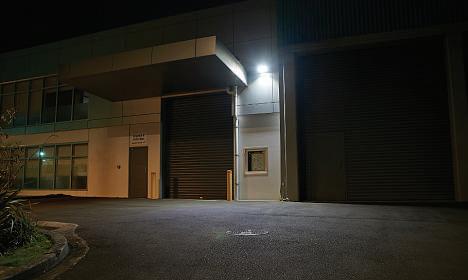




Far left: The spring 2025 lamb crop, estimated at 19.29 million head, is 120,000 lower than last season.
Meat Industry Association independent chairperson Nathan Guy
Age can be a positive rather than a liability
Business adviser Gordon
Stuart says age is not a barrier and people over retirement age have a lot to offer businesses.
A50-year-old man asked his doctor if he would live to 85. The doctor asked him three questions – Do you play golf? Do you drink? Do you party? The 50-year-old replied: “No, I do none of those.” The doctor retorted: “Well, why the f... would you want to live to 85?”
The past few decades (1993 to pre-Covid) have been coined “the great moderation” by economists. Good growth and low inflation/interest rates mostly contained volatility. Central banks came to the rescue whenever there was a problem. The experience of most people in the workforce has been built around the great moderation.
With geostrategic and geopolitical considerations more relevant around the globe, and the environment looking more like the 1950s, 60s, and 70s, people’s view of what is normal is being challenged The great moderation era has passed. Who has experience prior to the great moderation? We are also constantly reminded by economists of the growing percentage of the population aged over 65 and 85, and the rising cost of superannuation, which now costs more than education – and then there is health expenditure growing faster than the economy. Treasury forecast health expenditure to grow from circa 6% of GDP today to 10% of GDP by 2060. Government health spending, which was $20 billion in 2020, is now over $30b and is forecast to be $34b by 2027
While more people are working past the age of retirement, labour force participation will ease overall as the population ages, meaning slower economic growth on top of rising costs. The debate over New Zealand Super entitlement will intensify
A huge wealth transfer is also set to take place between generations, and already occurring in many instances via the bank of mum and dad for a first home.
The other day, I read a post on LinkedIn that really struck me. It said that once people hit 50 or 55, they start feeling like they’ve been thrown on the scrapheap. In fact, in the corporate world, skilled experienced grey hair can be exited before 50. Worse still, many people from around the world agreed.
And I have to say, I do, too.
Unfortunately, once you pass a certain age, it feels like the world is starting to look the other way. You’re not seen as experienced; you’re seen as past it. Not asked what you can still do, just quietly left out.
Some in the United States said they felt like they’d been put out to pasture. Others used words like invisible or irrelevant. Even in places known for being forward-thinking, the pattern was the same. People in their 50s and 60s felt like they were no longer needed, no longer wanted and no longer part of the team
Yet these are the same people society expects to keep working well into their mid-to-late-60s. That’s the part that makes no sense. On one hand, we’re told to plan for longer careers. On the other, many say they can’t even get interviews after a certain age. It’s as if you reach a point and suddenly your value drops off a cliff.
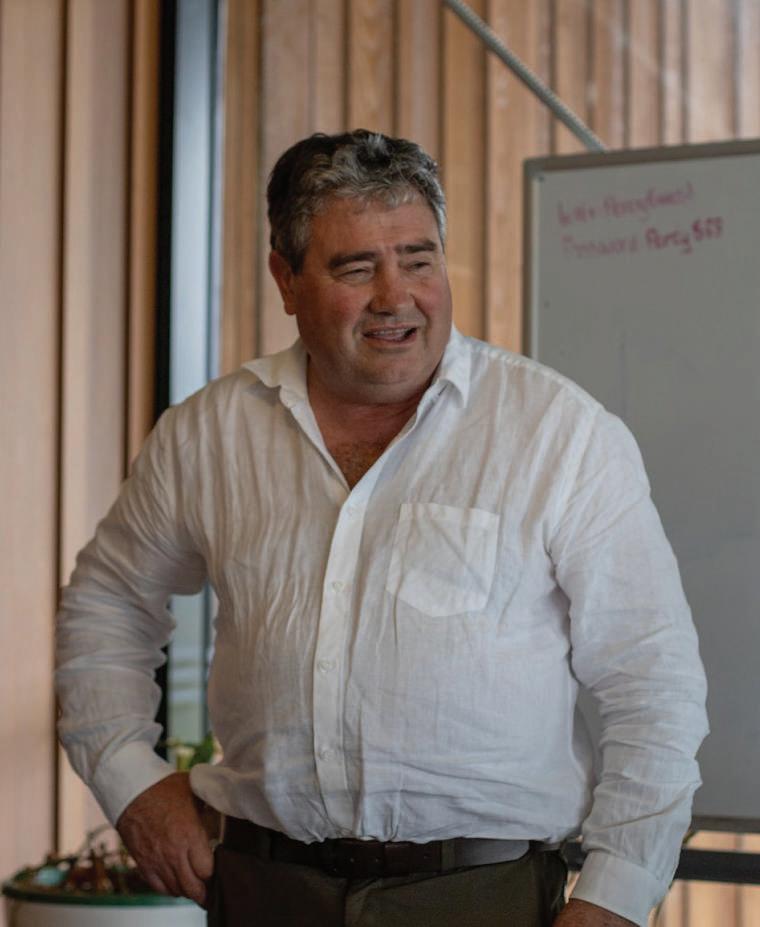
“
An old head with an outside perspective can challenge assumptions and unlock new ideas.
Doctors also say that retirement is a great step towards dementia. Unlike earlier generations, us oldies are living longer, staying healthier, and thinking about new ways to spend the second half of life. To do this, we need to keep our brains active.
So for the discarded, this means they/we become independent contractors, or are forced to start their/our own businesses to continue to pay the bills and support families. Alternatively, they often do charitable or community work, such as running sports clubs.
Economists who complain about the cost of looking after us also lament New Zealand’s low productivity and labour productivity. In my view, this growing group of 65-plus year olds is part of the answer. The opportunity for these talented people to solve problems, and teach others, even if it is for only 20 to 30 hours per week, is huge.
Fletcher Construction got in trouble because they exited the grey hairs. A few grey hairs show experience in managing risk. New Zealand is not good at managing risk.
Business can learn a lot from
What’s the big rush?
It has been interesting following the raft of ‘urgent’ bills flowing through Parliament recently, if one can keep up; many seem to have little public awareness, engagement or opportunity for submission. The urgency? It’s hard to see.
Notables have been the Gene Technologies Bill and the New Zealand Food Safety proposal to raise the maximum residue levels for glyphosate in cereal products (wheat, barley and oats).
I am scratching my head to think why the food safety agency would want to do this?
But then, of course, coupled with the Gene Technologies Bill, Round-up Ready crops can handle a good dollup of herbicide. This potentially raises at least two unintended consequences – ingestion by the consumer of more herbicide and development of superweeds through the hybridisation of GM herbicide-ready crops with ‘wild cousins’ (such as canola and wild radish).
The ability to contain genetically modified plants, insects, and animals in the environment is known to be impractical, as shown overseas. Just look at the containment of orchard and farm debris in the recent and on-going devastating floods of the Tasman district.
The risk and responsibility will not rest with the owners of the GM technology, nor even the users of the products. It will fall on the neighbour whose crops are inadvertently contaminated, the water and soil organisms that are polluted, and the tax or ratepayer on the hook for the attempts at clean-up and containment.
inter-generational farms – watch Country Calendar any week and invariably three, if not four, generations are working together to enhance productivity and leave the farm in a better state.
It was also refreshing to hear on the chairlift this week how the founder of one small public company finds having 20 to 75-year-olds works better for them.
Many farmers and small businesses would benefit from the power of a fresh perspective Sometimes you’re too close to see the solution.
That’s why an old head with an outside perspective can challenge assumptions and unlock new ideas. Everyone needs a sounding board. No judgment Just smart, honest feedback.
When was the last time someone gave you an insight that changed everything?
Most great coaches are older – because they have simply lived through children, teenagers, adult children, success and failure. Just because they’re not 35 doesn’t mean they’ve got nothing left to give.
In fact, I’d argue that people in their 60s and beyond have more to offer than ever. Not just in terms of experience, but also perspective, stability and care for others. They also provide candid honest feedback and are excellent at spotting Kiss Up and Kick Down management.
I’m not writing this because I have a quick fix. But I do think we need to challenge the story that says older people are done, past it, or no longer relevant They simply aren’t.
With the great moderation era beyond us, a greater appreciation of what it was like in the 1950s to 1970s is needed.
Recent Lincoln University work on genome sequencing and use of genomics has shown how science can support the long-term sustainability of key industries by understanding the genetic factors that improve disease resistance and fruit quality.
Using DNA identification and natural variation to breed better and more resilient plants using less chemicals is particularly needed in this era of swift climate change and increasing consumer discernment, and is an appropriate technology to develop.
The urgency for genetic editing, snipping and swapping as solutions to some of today’s producer issues reminds one of the haste to bring in stoats and weasels to contain that other disastrous introduction –rabbits. Great, so long as they only like the taste of rabbit and never develop a hankering for kiwi, chicks or eggs. That went well, didn’t it?
A pre-cautionary approach is the only sensible route while there is so much unknown and unpredictable in the gene-editing game.
New Zealand’s reputation and traditional expertise in genetic selection are too important to throw to the winds or, more cynically, to the feet of where the money trail leads.
Sincerely,
Trina Upperton Farmer, of Ohaeawai
Business adviser Gordon Stuart, from financial services company Chaperon, says people aged 65-plus are part of the solution to productivity and labour
Support your herd –and your community–with Prolaject
What if protecting your livestock could also help feed afamily in need?
This winter, Elanco is encouraging New Zealand farmers to do just that. By choosing Prolaject –atrusted vitamin B12supplement for sheep and cattle –farmers can simultaneously support herd health and give back to struggling families through a partnership with charity Meet theNeed.
Between July1 and September 30, 2025, every pack of Prolaject purchased will help Meetthe Need puttwo meals on the table for New Zealanders doing it tough this winter. Up to $50,000 worth of meals will be donated through the charity, arural initiative founded by farmers, for New Zealanders.It’s asimple and effective wayfor farmers to make ameaningful difference in their own communities.
Meet the Need delivers fresh, locally-produced food to over 130foodbanks and community organisations across the country. Since launching, it hasdistributed more than 2.3 million mince and milk ‘protein’ packs to New Zealand families –all thanks to the generosity of the rural sector. The charity enables farmers to donate livestock or milk, while others can contribute cash, ensuring foodbanks receiveconsistent supplies of nutritious food for those experiencing food scarcity.
Elanco is proud to be aPlatinum sponsor of Meet the Need, and this Prolajectcampaign extends that support to farmers whowanttogive back while looking after theirown animals.

Used on New Zealand farmssince 1987,Prolajectisashort-acting injectable supplement designed to combat cobalt deficiency– acommon challengedue to naturally low cobalt levels in some NewZealand soils. Vitamin B12isessential for the production and function of critical

enzymes, supporting appetite, energy, growth and immunity. Adequate cobalt is crucial for growth, for maintaining condition andreducingill thrift, particularly for young stockand also during key times like gestation, lambing/calving,lactation, and mating.
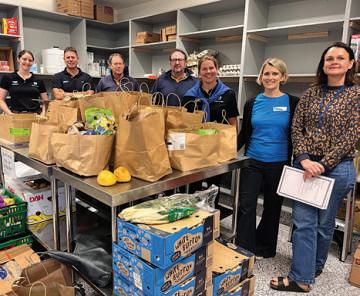
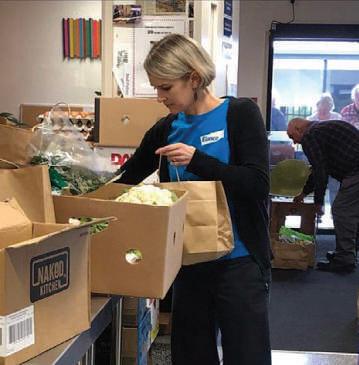
For nearly 40 years,farmers have chosen Prolaject to support animal health, thanks to its reliabilityand affordability –and now, thatsame product can help support their community too.
As risingliving costshit rural households hard, many families are facing food insecurity. At the same time, winter and springremain some of the most critical times for herd health. By choosing Prolaject this season, farmers can take care of their livestock while helpingfeed Kiwi families in need.
Elanco’s range of trace element products hasalways been about meeting the needs of livestock. Now, they’re meeting the needs of people too. Farmers know that asmall action on-farmcan create abig impact offfarm –and now aproduct they already trust can help rural families, too.
With Elanco’s broader purposeof enriching livesboth on and off farm, farmers are encouraged to choose Prolaject this season and do good for not only their herd –but also their community.




No silver bullet for banking
The long-awaited report from Parliament’s finance and expenditure select committee has been welcomed by the agricultural sector.
By Sonita Chandar.
What began as a probe into farmer discontent with banks by the primary production select committee, which is made up of MPs with rural constituencies and backgrounds, grew to a full-blown inquiry by Parliament’s finance and expenditure select committee.
Farmers had been asking serious questions about the levels of competition, profitability and transparency in rural lending for a long time. They felt banks were charging them too much for loans, compared with the price of home loans for city households, and that banks were quietly withdrawing lending from the agricultural sector
When farming lobby group Federated Farmers became involved, the Government decided to expand it into a full-blown inquiry by the higher-profile finance and expenditure select committee.
Concerns about banking have consistently topped the list of issues in Federated Farmers’ regular farm confidence survey.
It has taken 14 months, but the long-awaited report was finally released late last month and welcomed by farming groups. However, the report contains little new information, with proposed tweaks and support for measures already announced. What it did recommend is greater transparency and oversight of rural lending. The inquiry made 19 recommendations across bank capital requirements, barriers to banking, rural and business banking, and lending to Māori asset holders, organisations businesses and individuals.
Most of the recommendations relate to regulators and government, not the banks themselves.
Also included are independent reviews of the Reserve Bank’s performance and the bank has to appear annually before the primary production committee to discuss agricultural lending trends and policies, ensuring farmer-focused financial support.
The committee report, which came after an exhaustive Commerce Commission review into bank competition, says it knows the key information won’t be new to the finance sector.
“Our recommendations are also unlikely to be a silver bullet for competition, and it now falls to the various government agencies to determine how to implement and respond to our recommendations,” the report said.
Cameron Bagrie, from Bagrie Economics, described the report as “a pleasing outcome” for the rural sector and, in particular, the capital rules.
Capital rules determine how much money a bank needs to set aside in case a loan goes bad. Currently, the setting requires banks to hold enough capital to withstand a one-in-200-year event.
“We all want banks to be safe,” he says. “However, New Zealand went too far in the interest of making banks safe While the intent was admirable, ‘insuring’ against a one-in-200-year event was extreme.”
Bagrie says what we saw under the regime that lifted bank capital requirements was:
■ More mortgage lending at the expense

of lending into the productive part of the economy, including the rural sector
■ Banks continued to make huge profits despite the economy having a recession.
■ Banks making minimal losses.
“The last two bullet points seriously question the balance between the pricing of risk [margins] and the actual taking of risk.”
He says the OECD Economic Survey of New Zealand (2024) noted that “high levels of profitability are unlikely to be explained solely by the riskiness of conducting a banking business in a small market like New Zealand, as the standard deviation of pre-tax returns is relatively low, suggesting low risk-taking among banks”.
“The combination of a less conservative position on bank capital and potential changes to the risk weights banks use on lending has the potential to drive more money into the real productive part of the economy.”
Federated Farmers is calling the final report into banking competition a major step forward for rural New Zealand – and a vindication of the farming sector’s concerns.
“This is the most significant progress we’ve seen in a generation on rural banking issues,” Federated Farmers banking spokesperson Mark Hooper says.
“Federated Farmers fought hard to make this inquiry happen because we knew many farmers were getting a raw deal from their banks and felt greater scrutiny was needed.
“Throughout the process, we’ve raised firm questions and put forward constructive suggestions for how the banking system could be improved for all New Zealanders.
“Politicians have clearly listened, recognising that farmers have been facing an unfair playing field for too long – and now they’ve presented concrete changes to start fixing it.”
Federated Farmers had asked for changes to ensure regular and direct scrutiny of banking bosses. “This report has delivered just that,” Hooper says.
“Six-monthly appearances before the finance and expenditure committee
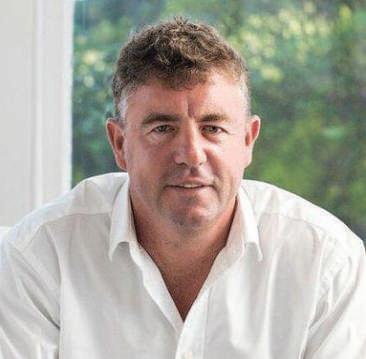

should keep the big banks honest, with significantly increased accountability and political oversight Also welcomed is the recommendation to immediately halt any
further increases in capital requirements for agricultural lending, which is currently costing farmers between $555 million and $714m each year.
Federated Farmers says the Reserve Bank’s decision to review bank capital rules is the first step towards lower interest rates and fairer access to finance for farmers
“These capital rules have a direct impact on rural livelihoods. The stricter the rules, the more capital banks need to hold – making lending more expensive for borrowers like farmers.’’
It is expected farmers will save thousands of dollars in unnecessary interest costs.
“Overly conservative capital-holding rules have only added additional and unnecessary costs on to farmers. They’ve also made it much harder for farmers to access capital to grow their businesses.
“Farmers need fair and affordable access to capital if they are to continue driving New Zealand’s export economy.”
The Reserve Bank will be required to review capital requirements for rural lending, with changes monitored and publicly reported.
The committee is also calling for more transparency from lenders, including a requirement to formally disclose how risk margins and loan pricing are calculated.
“This has been a real grey area for farmers, who have been asking fair questions about why they’re paying so much more interest than residential borrowers,” Hooper says.
“Making the banks explain those margins will give farmers much-needed visibility and clear information to secure fair financing.”
He says the report supports open banking and standardised credit information, which will make it easier for farmers to compare loan rate or switch banks. However, Federated Farmers says the committee could have been stronger on its climate lending rules. Its sixmonthly banking survey shows having to provide
data to their bank is a real pain-point for many farmers
“Farmers are very frustrated about
emissions
The report from Parliament’s finance and expenditure select committee made 19 recommendations across bank capital requirements, barriers to banking, rural and business banking, and lending to organisations, businesses and individuals BRUCE MACKAY/THE POST
Economist Cameron Bagrie says the report from the finance and expenditure select committee is a pleasing result for the farming sector
Farmers have been facing an unfair playing field for too long and welcome the banking inquiry report, Federated Farmers spokesperson Mark Hooper says.
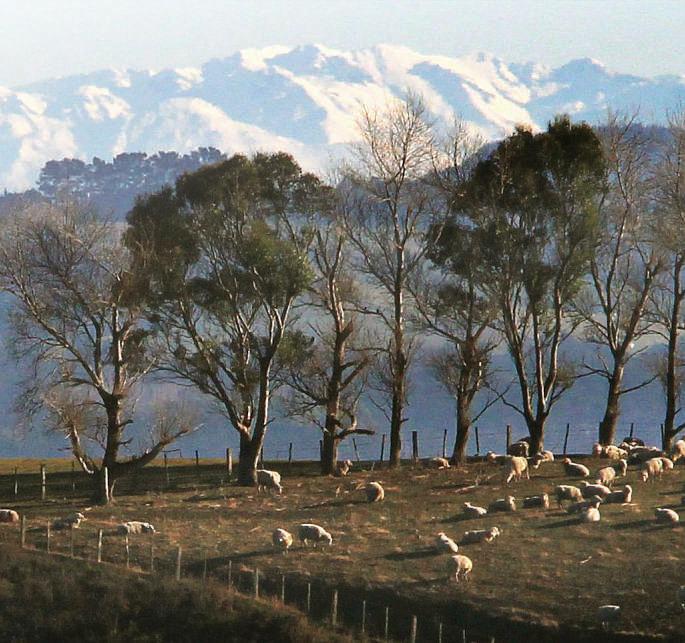
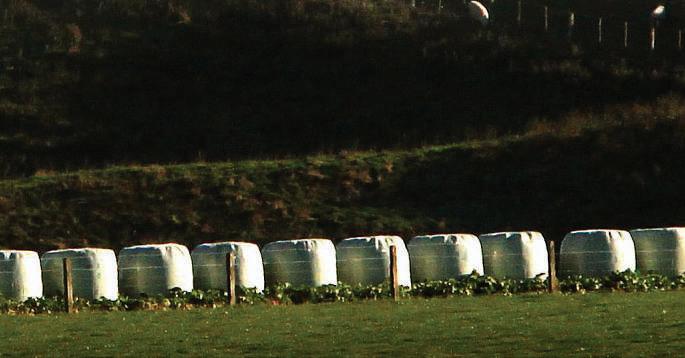
having to provide emissions data, and about inconsistent and confusing information requests. The report calls for clearer climate-related lending rules, standardising practices to balance environmental goals with practical lending.’’
But Hooper says it hasn’t gone far enough and MP Mark Cameron’s bill removing the requirement for banks to submit climate disclosures entirely would have been the better solution.

“At the heart of this inquiry has always been one simple ask – a fair deal for farmers. This report is a major step toward that If the Government and the Reserve Bank follow through, we’ll finally see a banking system that serves rural Kiwis with the transparency, competition and respect they deserve.”
Rural Women New Zealand also welcomes the report on banking competition and its acknowledgement of the challenges faced by rural communities in accessing banking services. Rural New Zealand has faced many challenges in recent years, with bank branches closing down and other services withdrawn from small communities as banking services moved online
“The committee has heard what we have been saying for years – branch closures and the loss of access to cash have a big impact on rural communities,” Rural Women NZ national president Sandra Matthews says.
“The loss of these services makes life difficult for rural people and businesses if they have to long distances to do simple bank tasks such as cash withdrawals and deposits, bank their business takings, or maintain a cash float.”
The committee noted that banks emphasise the availability of online services, but poor connectivity and digital exclusion in rural areas mean many people unable to use these vices.
“Older people, those with limited digital skills, and communities with patchy connectivity are being left behind,” Matthews says.
“For many rural families and businesses, which are dealing with the often complex and multifaceted intersection between personal and business finances, the opportunity to engage with bank staff face to face is also really important.”
Matthews says her organisation supports the Reserve Bank’s planned community cash service trials, due to begin this year, and agrees with the committee that access to cash must be safeguarded for rural communities. It also welcomed the recommendations that the Reserve Bank review rural lending requirements.
“High lending costs place huge pressure on farming families and rural businesses so anything that can be done to alleviate these would be welcome.”
The Government has 60 days to respond to the recommendations
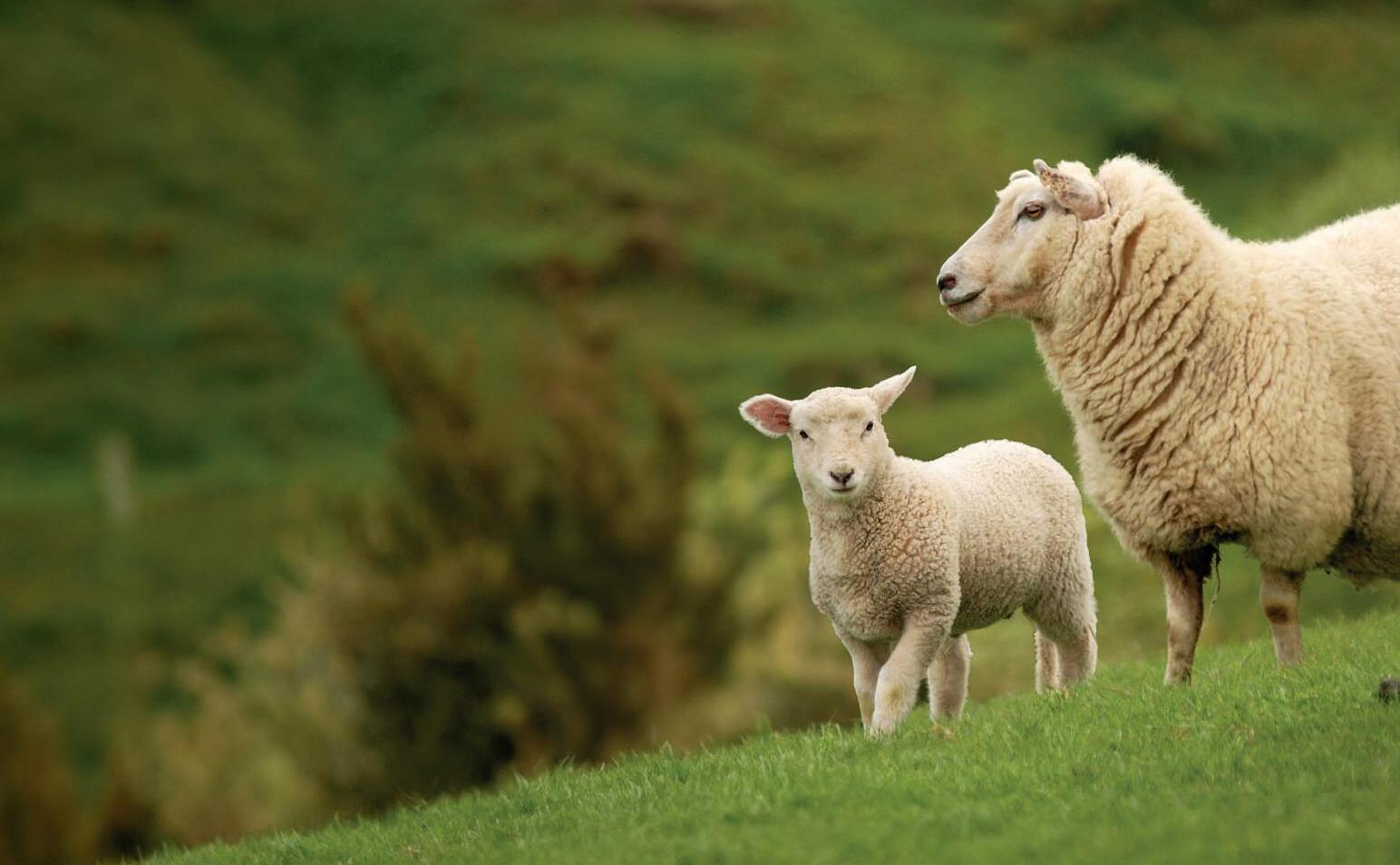








Doing what has to be done
Over the years, a Northland couple have made plenty of sacrifices to ensure their farming business is a success
By Steve Macmillan
Plenty of sacrifice is needed to make a success of farming and often it goes unseen, say a Northland couple who started out in the 1980s with just $10k to invest – the catalyst for a leap of faith into the agricultural sector.
Jo Crawford says looking back at a farming career with husband Geoff it is easy to underestimate the sacrifices couples make, particularly the time motherhood takes up amidst everything else going on.
Her impact on the operation has been immense. She has been the rock keeping home in order, running the books, ensuring budgets remain on track and keeping Geoff in check with his penchant for wanting to embark on the next business unit or project.
But equally, her vision has aligned with Geoff’s and they have more than achieved what they collectively agreed to strive for all those years ago.
Today, Crawford Farms is a 400ha Jordan Valley dairy unit near Hikurangi with a 60ha support block nearby, the 60ha home dairy unit in nearby Kauri, plus a 240ha dairy unit at Opuawhanga.
A 300ha Whananaki beef unit is on a lease to buy contract and will come into ownership in 2028, while two other smaller blocks are leased to help with grazing the 1200-odd calves reared on the dairy units
About 300 heifer calves are kept as replacements annually.
The dairy operations total 1400 friesian cows and produce about 590,000kg of milk solids, which is their main revenue. The beef model contributes the remaining 25% of the income.
While the Hikurangi swamp dairy farms are flood-prone, the high productivity in the good times more than makes up for the pain from the wet when dozens of paddocks can be hammered for weeks at a time over winter – and in tropical summer storms. That is when the couple’s farm managers are forced to wait for the excess water to drain away and flow to the Kaipara Harbour on the west coast of Northland.
Back in their early days together when they decided to start small, they were also dreaming bigger. It all started with money Geoff had saved and while they were not always sure how they were going to fully fund their debt, they were prepared to work hard, find a way and keep pushing on towards more consolidation, growth and success.
“All school holidays I would walk along the road to help farmers and I loved it,” he says.
“At 14 I got into a hay gang and saved towards my dream of buying a farm. I left Kamo High School at 15 and got a job on a farm but realised at $54 a week I was not going to buy a farm, so the farmer jacked up a job guy down the road doi weed spraying.
“After a couple of months, he asked me if I wanted to buy the business.”
That was the start of his then fledgling rural career.
With a Hilux ute, a weed spray unit on the back and one contract with a forestry company he got to work and by 17 he’d saved the magical

But with his representative rugby career taking shape, he realised working seven days a week couldn’t stack up, so he had to think smart
Within a year of buying the business, the couple bought their first house – a miner’s cottage – in Hikurangi Next they purchased an 80ha bare block covered in gorse.
It was sold 18 months later after it had been cleared and the couple purchased a 120ha block with a house on it They were on a roll but still conscious of their growing bank debt
“Because we had both come from

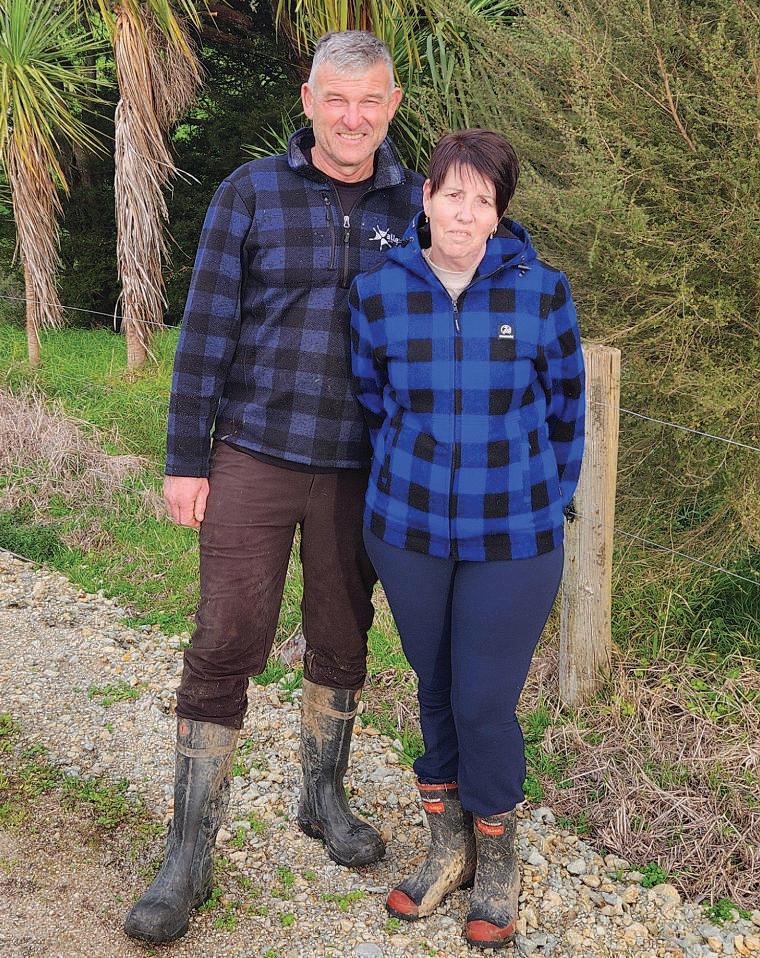
hing, we thought we young enough to go broke and start again,” the couple laugh.
That was the late 1980s, by which time they were married and they had employed Peter Thomas to help with the spraying operation, which was timely as Geoff was establishing himself as a no-nonsense lock in the North Auckland rugby team.
By the time children Tim, Adam and Kaitlin had arrived within the space of five years, he was a regular in the side and the couple were under way with their first dairy farm purchase in 1989
“That’s when we learnt this word leverage and the ASB were wanting to get into rural lending.
“I was 22 when we got that 120ha dairy unit at Akarama but the spraying business remained our main focus for many years.”
The three decades since have been nothing but full-on, as additional farms have been added to the mix thanks to the spraying business and a subsequent forestry company contributing to a financial model that helped fund those farm acquisitions.
Over the years, the Crawfords have won environmental awards in weed spraying, forestry and the 2022 Ballance Farm Environment Supreme award, at the same as time taking out the DairyNZ Sustainability and Stewardship Award and the Ballance Agri-Nutrients Soil Management Award; the WaterForce Wise with Water Award and Hill Laboratories Agri-Science Award.
One slip and his
Safety
Madeleine Powers
The sight of his severed leg, gumboot still on, spinning in a feed mixer is something Cory McKinnon will never forget.
The Cambridge man was just 23 when a farm accident in Dargaville changed his life forever. Now 35, he still remembers the morning in vivid detail.
It was winter milking season and McKinnon had finished the morning round on a 600-cow dairy farm.
He was loading silage into the feed-out wagon when a pile of feed built up on the platform. Climbing up to shift it, he slipped and fell inside.
As he tried to pull himself out, the mixer blade came around and struck his left leg.
“It was probably 10 to 15 seconds before I realised what had happened,” he says “At first it just felt like a whack. Then it registered in my brain.”
leg
The blade had cut his leg clean off below the knee.
“The scariest thing about it was watching my leg go around in my gumboot.”
McKinnon managed to haul himself out of the wagon, screaming for help.
The farm manager, passing nearby, heard him and raced over, shutting down the tractor and calling emergency services.
He lifted McKinnon into the tractor bucket, wrapped his leg in towels, and waited for help to arrive.
Firefighters came first, followed by ambulance staff and then a rescue helicopter.
McKinnon was flown to Whangārei Hospital, where surgeons amputated the leg just above the knee.
He spent a month in hospital before beginning a long recovery of medical appointments, prosthetic fittings
Cambridge man Cory McKinnon lost his leg in a farming accident in Dargaville. ACC
Nurturing the environment is important to Northland farmers Geoff and Jo Crawford, who own several farms totalling 760ha and lease three other blocks.
STEVE MACMILLAN
Adding a feed pad to the Jordon Valley dairy unit has been a great addition to Crawford Farms. Geoff with the herd on the feedpad before milking.
Stanley Brook residents left isolated and vulnerable without internet
Catherine Hubbard
Seven weeks since the second rain event hit Tasman District, Stanley Brook resident Trish Palmer still has no broadband and no landline.
And there’s no estimate as to when, or if, those copper services will be restored.
Palmer, a writer by trade, has been disconnected since July 11, when stormwaters ripped away the entrance to the bridge over the Stanley Brook, washing away the copper cable with it. Yet, in her communications with Spark, she said she had been asked to check her jack and modem three times, while in the meantime, the cable was dragging in the river
“You just want to scream when you’re sitting at this end of it,” she told the Nelson Mail
Palmer said she would jump at fibre if it was on offer, but without copper, which had always been reliable, she was left feeling isolated.
Satellite coverage was “dodgy” in the area where they were, she said.
“They’re creating a vulnerability, and that’s not OK.
“The reception’s dodgy enough, and if a cell tower goes out, then we really are toast. We need to have a reliable service that works.”
Palmer said she was also concerned that Spark and other providers didn’t seem to talk with each other, and didn’t appear to have a process for dealing with Civil Defence emergencies.
“Every time that there is a Civil Defence emergency, their call centre should automatically be flagged as anyone calling from that area, ‘let’s take them seriously’.”
Palmer’s days of using copper services could be over.
In an email sent to her from Chorus, the company said the damage to the cable was “extensive”, with multiple points of failure along its length, and Chorus was still assessing it before determining whether or what repair actions could be undertaken on the cable
Any repair work was “likely to take a long time”, and Chorus recommended “transition to an alternate technology“.
Chorus executive general manager network operations Marcus Wofinden said copper had a high fault rate, and was more at risk in flooding and severe weather events.
During the Auckland 2023 floods, the
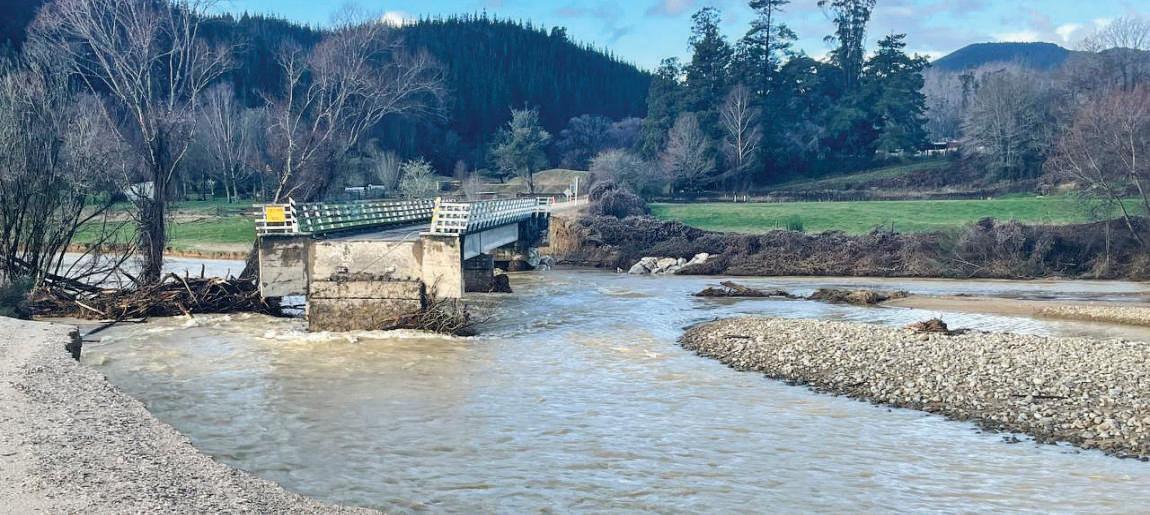
copper network had 10 times as many faults as fibre.
“As the copper network ages and degrades, it is increasingly difficult to resource and challenging to maintain or fix faults.”
Wofinden said Chorus appreciated the customer’s frustration with the situation, and wanted to be clear that the experience did not meet Chorus’ standards for timeliness and clarity of communications.
New Zealand Telecommunications Forum (NZTF) chief executive Paul Brislen acknowledged that the way Palmer had been treated by her provider was “hopeless”.
“We’ve all got mechanisms for dealing with these kinds of issues so that the customer is not bounced around from pillar to post
“It sounds like something’s gone astray on that front.”
However, Brislen said that in terms of emergency response, telcos “absolutely do all work together”.
NZTF worked with the National Emergency Management Agency and with local Civil Defence lifelines to get the networks up and running as quickly as possible, and to identify at-risk areas, he said
However, if customers were in rural areas where their comms went down,

satellite was the best way forward, Brislen said.
Maintaining connectivity has emerged as a major issue following Tasman’s twin floods, which hit the region two weeks apart
Cellphone coverage was disrupted during both rain events – on June 27, the Wakefield and Murchison cell towers went offline because of fibre cable damage and power supply washouts.
During the second flood, widespread power outages impacted numerous cell towers, with the longest outages
for
to be
weeks after the
affecting Dovedale, Pakawau, Mārahau and Tapawera.
When visiting after the floods, Prime Minister Christopher Luxon said the Government should “ask some quite searching questions” as to why it took so long for communications to be restored.
At a Tasman District Council meeting in July, mayor Tim King said conversations about communications would be “massive” and ongoing following the events, which had demonstrated how much people relied on the internet and cellphones.
was gone - worker urges: ‘Stop and think’
in Auckland, and rehabilitation in Whangārei.
Before the accident, he was active, often hunting or at the beach in his spare time.
Accepting the loss of his leg took years, and about the same time he lost both his father and grandfather
“It was a lot to process, both physically and mentally. I think it all hit me at once and I realised my leg, well, that was going to be me for the rest of my life.
“I could have continued down a dark path, but I had to move on and not dwell. My leg wasn’t coming back.”
With ACC support, McKinnon returned to farming a year later, working with automatic vehicles to reduce the physical strain
Getting back to work, he says, helped him regain independence and process his injury.
The demands of farming eventually
proved too much. In 2016, he moved to Tauranga where a friend was living, working in flooring for four years before relocating to the Waikato in 2020.
He now lives in Cambridge with his partner and children, and drives for Curin Contractors, a civil earthworks company.
McKinnon admits he still thinks about the accident.
“Of course, sometimes I still think ‘what if’.
“What if I wasn’t working up there? Accidents happen, especially on the farm, but there are things we can do to try and prevent them from happening in the first place.”
In 2024 ACC accepted more than 23,000 new farming injury claims nationwide, with recovery costs of about $120m The Waikato accounted for the highest share, with 4141 claims costing $20.7m.
Machinery can be your best friend or your worst enemy.
Cory McKinnon “
Spring calving is the busiest and most dangerous period In spring last year alone, ACC received more than 6000 new farm injury claims, costing $31.6 million.
ACC workplace safety manager Paula Wood says fatigue, lack of sleep, stress, isolation and the inability to take breaks all increase the risk of accidents.
An ACC-funded Farmstrong study found 58% of recently injured farmers linked their accidents to work stress, with a quarter saying it was a major factor.
McKinnon’s advice is blunt.
“Machinery can be your best friend, or your worst enemy.”
“If you have to do anything with a feed-out wagon, silage wagon, or any machinery, turn it off first.”
New Zealand’s relaxed “she’ll be right” attitude to safety needs to go, he says “We get stuck into it and think, she’ll be right. We have to get rid of that attitude and stop and think.”
Trish Palmer, of Stanley Brook, is still waiting
telecommunications services
restored several
devastating floods
BRADEN FASTIER/ NELSON MAIL
The Stanley Brook bridge approach was washed away during the July 11 deluge, taking a copper telecommunications cable with it After weeks of work, contractors have restored the road, and the bridge has been reopened – but the communications issue has not been resolved.
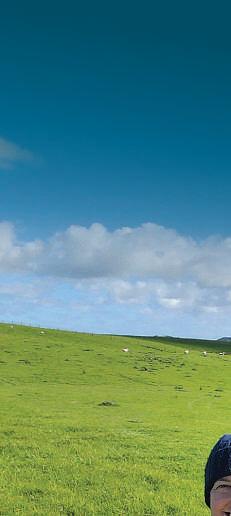

Keeping farming alive
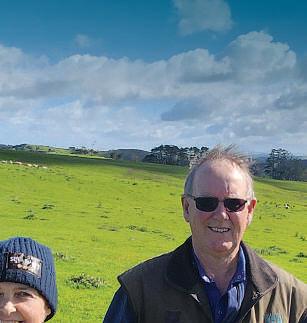
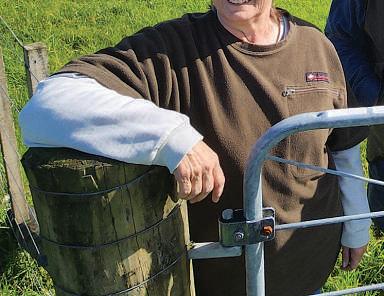
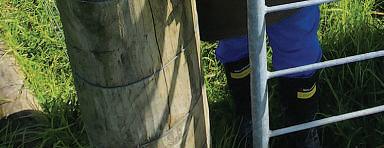
ADVERTORIAL


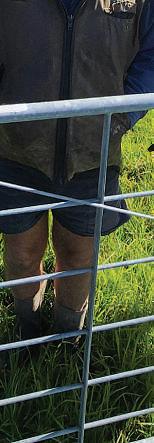
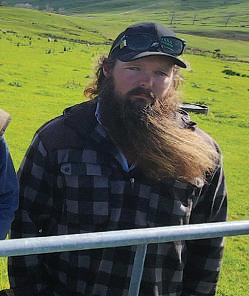
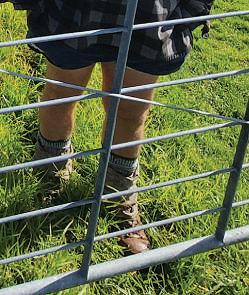


A Northland farming family have no desire to sell to forestry and are instead snapping up neighbouring properties to expand their operation. By
Steve Macmillan
.
As many Kaipara locals have been selling out to forestry, a traditional farming couple have been bucking the trend and beefing up their operation buying neighbouring properties.
While once productive tracts of Mititai Rd – midway between Waiotira and Tokatoka - have been swallowed by forestry plantations in recent years, John and Lurline Blackwell have held strong to their farming roots at ‘Clear Ridge’.
It was a farm John grew up on and he has never left.
“Dad died in 1978 and I had left school at 16 the year before to work on the farm which was a 204-hectare home farm as well as an adjoining rundown dairy farm of 143ha which Mum and Dad bought in 1977.
“They farmed this as a sheep and beef unit.
“Back then the farm was worth $187k and we had to pay $67k in death duties, so I had to sell quite a bit of the stock to cover that cost.
“Mum and I had no option but to plod along for a few years and we leased out
How CONVISOSMART is getting preciousfamilytimeback.
Just northofBurnham, Canterbury is Grange Road wheregrower Patrick Bell farms 250 hectares.
Theirinvestment into centre pivot irrigation has changed theirfarming efficiency and they can now grow agreater rangeofcrops with betteryields.
“InDad’sday,hewas drylandfarming.He eventually got to put RotaRainerson, but in thelast four years,we’ve put pivots on and that’sreally uppedour efficiency,” explainsPatrick.
Of course, with more irrigationcomemore challenges with weedcontrol,sowhen KWS approached Patrickin2020 about triallingtheir new CONVISO® SMARTSystem,(herbicide tolerant beet system)theywereall ears. Thefewer weeds,the betterthe yield. What attracted Patricktothe CONVISOSMART
System wasthe abilitytoput in acropof sugarbeet and knock broadleaves, thistles and grasses in one go.
“The fewer the weeds,the better theyield –there’sless competitionfor your crop. So, with CONVISO, there’sless spray applications. You’re not paying aspraying contractorand there’sless chemicals going on the paddock. It’s got to be good, doesn’tit?” says Patrick.
Patrick also likes thefact that he can get the CONVISO crop in theground earlier. Thesooner thecropcan come off,the sooner Patrick can get back into wheat
“CONVISO is saving us alot of time, which means more timefor otherstuff– like spending timewiththe family,which is important to me.”
Unleash thePower of Weed Control

60 hectares of the 141ha ex dairy farm for three years.”
John’s parents had originally moved on to the farm in the summer of 1958 with 143ha as a ballot Lands and Survey block but this proved too small, so it was extended to a total of 204ha in 1964.
By 1988 John and Lurline were married and moved to the back of the farm on Mititai Rd where they live today while raising children Pete, Kevin and Suzane.
In total, they are now running 748ha across four farms, of which 710ha is in pasture and 20ha in pines, with one radiata block in its second planning and another on its third rotation.
Combined, the land is carrying 825 ewes, which Pete is in charge of, plus 1038 cattle.
“We finish the bulk of the stock on the farm, with our bull beef going to Silver Fern Farms at 320kgs under 2 years old and the First Light Wagyu 2-year-old heifers at 270kgs and the Wagyu steers 340kgs at close to3 years old,” say the Blackwells
John jokes that Blackwells generally expire rather than retire so at 64, he plans
SCAN TO LEARNMORE ABOUT PATRICKBELL
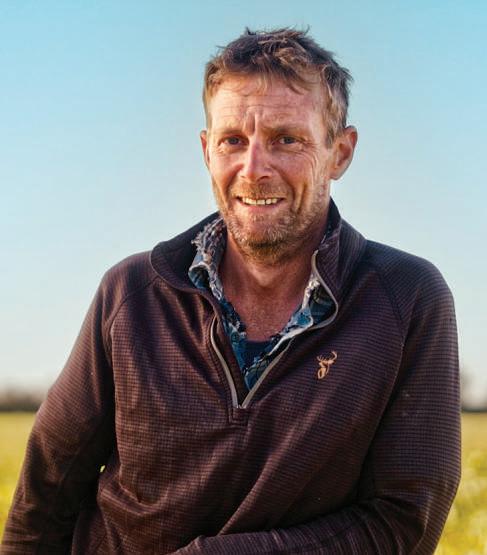


Northland farmers Lurline, John and Pete Blackwell, are bucking the trend of selling up land for forestry conversions and instead, are focused on expanding their farming operation.
PHOTOS: STEVE MACMILLAN
Patrick Bell, Grower-Burnham, Canterbury
John Blackwell’s parents originally moved on to the farm in 1958 with 143ha as a ballot Lands and Survey block, but this proved too small, so it was extended to a total of
“Dad died in 1978 and I had left school at 16 the year before to work on the ... 204-hectare home farm as well as an adjoining rundown dairy farm of 143ha.
John Blackwell

to keep on farming with the help of his son Pete, who oversees a 208ha block on nearby Tokatoka Rd.
Pete mixes managing 200 bull beef and wagyu steers and a flock of 800 coopworth ewes (with a touch of east friesian in the mix), on a farm that is home to a four-stand, raised board woolshed Thanks to a lambing percentage of 150% in the ewes and 120% in the ewe hoggets, up to 1200 lambs are generally sent to Wilson Hellaby and average 16-18kg carcase weight Rams have been sourced from the Ashgrove Coopworth stud.
Pete also runs a fencing business and believes if you grow too big you miss out on quality control something he is clearly not a fan of.
“I don’t like poor quality workmanship. So, my focus is mainly on rural fencing with a small amount of residential fencing. When you have money invested in machinery (a new tractor, post drivers and a bulldozer), you don’t want it sitting around, so in winter we can crack on with fencing on forestry units and fencing and stockyards on farmland,” he says.
He says he will always do something off the farm involving machinery, otherwise he will become a hermit He runs a shearing gang and has a landscaping business in addition to his 15-year-old fencing enterprise he kicked off at 21. He is also involved in the annual Northland Field Days in Dargaville.
“It’s two weeks absolutely full-on and splits up the year nicely. We have to water all the plants every morning and be gone by the time stallholders are there setting up for the day. It’s a bit of adrenalin, then we must remove everything – taking all the plants and bark away.”
Like his parents, he is a hard worker and is up at 4am most days to shift stock before meeting his fencing crew and aiming to be on-site for his day job by daybreak. Every day and every week his focus is on getting the work done to make progress.
While Pete likes to keep a low profile, John has done time in governance roles with Beef and Lamb Northland, Kaipara District Council, Northland Field Days treasurer, and is currently a Northland regional councillor representing the Kaipara Ward and Federated Farmers Northland Meat and Fibre vicepresident.
His rationale for serving the Northland community amid his hefty farming commitments is because he feels it is important to give back and support democratic processes.
“That’s why I was president of Federated Farmers Northland for five years and why I will always put my hand up to give back It is something I want to do. I want to be a voice of
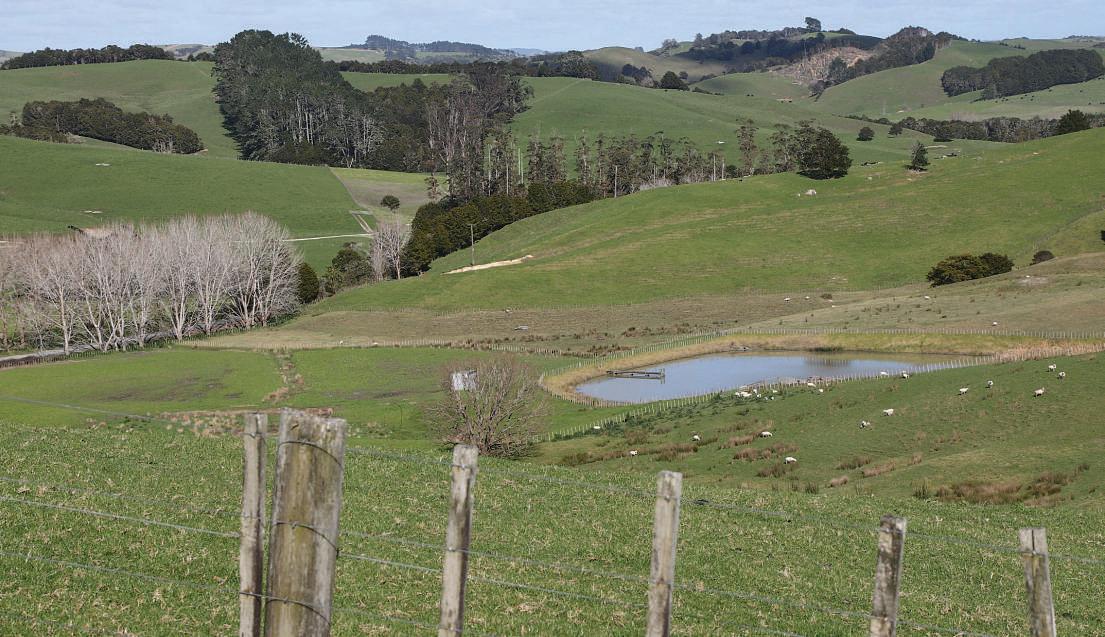

reason for farmers and for Northland.”
But John and Lurline have also remained focused on looking at opportunities to add to their income.
After remaining steadfast operating 350 ha for 25 years, they purchased the 207ha that Pete and his wife Sofie live on. In September 2024 they took the chance to buy a nearby 50ha former dairy farm with 27 paddocks all under 2ha.
“It is a good block for cattle and has a good water system.”
Then on July 1, 2025, an adjoining 143ha block was added to the mix.
They say it is substantial growth in quick succession and it was done because they are not interested in selling to forestry and because the beauty of that farm is that it also has brown rock quarries and a lime quarry, along with easy contour.
Both new blocks need a good dose of fertiliser, culverts, fencing, raceways and metal and will run at a loss for two years
By then the Blackwells reckon they will have dramatically lifted productivity on the rundown block and will slowly come into profit.
While farming is an expensive prospect for youngsters to consider, John believes the harder you work and the younger you get into it, the quicker you can pay off debt and make a go of it.
“Pete is proof of that and I was once –a long time ago.”
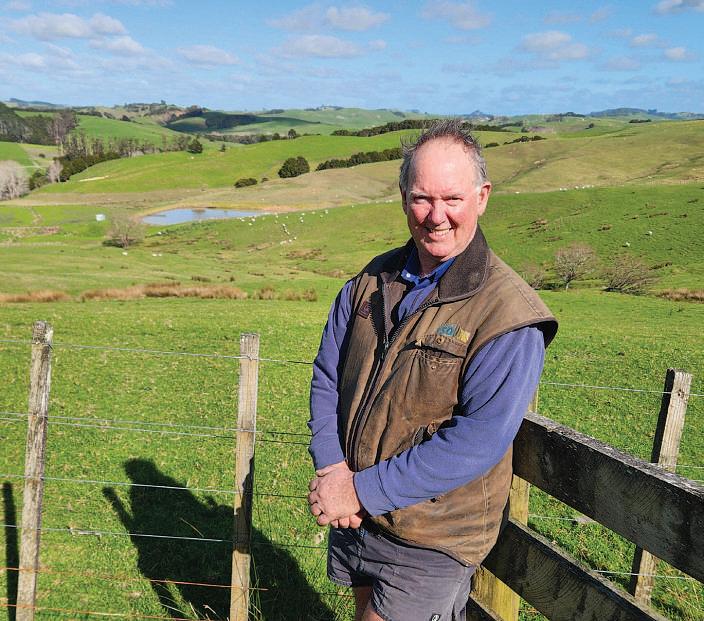
Northland sheep and beef farmer John Blackwell says he enjoys giving back to the community through various governance roles.
Right:
204ha in 1964.
The Blackwells run 825 ewes and 1038 cattle on 748 hectares across four farms. Pete, Lurline and John Blackwell with some of their First Light wagyu cattle.
Teamwork between farmers and a harbour restoration initiative has had huge benefits for the environment, writes Steve Macmillan.
ANorthland couple are passionate about caring for the land they farm at Ruatangata West, near Whangārei.
Rob and Mandy Pye run Mandy’s Kōkopu family farmland which consists of a 260-hectare beef unit (245ha effective) bordering the Mangere River and Wairua River, which both feed into the Kaipara Moana. In conjunction with a 75ha run-off, the couple finish 500-600 bulls and steers annually.
The couple met at university while both completing teaching degrees. Twenty years ago, Rob changed direction and went north to learn how to farm. He has not looked back
Partnering with Kaipara Moana
Remediation has taken their care and passion at Māngere Falls Farm to a new level as the couple strive to play their part in reducing sedimentation and siltation in the Kaipara Moana, while leaving a legacy for their children and others in the future.
They have raised their three children on their Kōkopu farm and the Mangere River has been part of this. They have swum, kayaked, played and fished it. And the health of the river and the waterways that feed into it are important to them.
Along the way they have fenced off 9.5km of steeper land, wet areas, drains and rivers to protect them from cattle, while planting more than 16,000 natives – also in partnership with KMR.
They have been working with KMR for many years now and Rob says what they enjoy most about partnering with KMR is knowing they are all in the journey together and are working towards achieving healthier waterways.
“It is exciting to see the difference we are contributing,” he says.
“We wouldn’t undo anything we have done. It has only enhanced non-effective land and contributed to the beauty and health of the environment around us. We have hosted two school planting days and enjoy encouraging the next generation to think likewise.”
Rob says it is important to the family to farm sustainably but with a strong environmental plan.
“We know the animals we produce have come off a farm with an environmental focus and this is a great story for the consumer.
“KMR are great to work with. They listen and work with the challenges we have. The connections they have with local nurseries and contractors make getting projects completed much easier. It is about starting and creating a plan, and I would urge other farmers to get on board because having funding from KMR reduces your spend and allows you to achieve a lot more and much faster than if you had to fund it yourself.
“KMR provides an opportunity to work with skilled people to help create the vision and, like I say, the funding is great. This work is about bringing back native biodiversity, protecting the land and reducing sediment loss.”
Before partnering with KMR, the couple had been fencing off waterways and planting natives for years.
Being involved in catchment groups previously – and having started their own personal fencing and native planting journey in 2016 – has made the process of fast-tracking progress with KMR seamless, Rob says.
The guidance and enthusiasm from KMR field adviser Debbie Johnson has been invaluable.
“Everything on the land needs to work together. We are doing this for water, river and Kaipara Harbour health while bringing
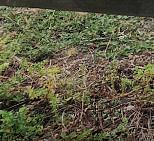
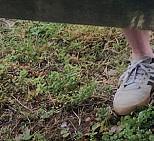


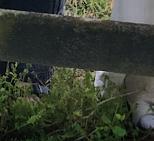
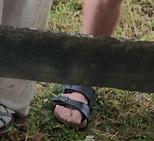
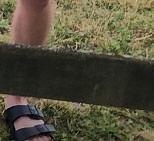
A deep passion
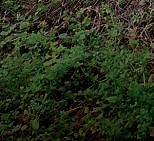
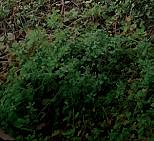
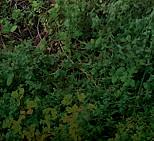
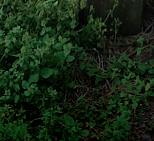
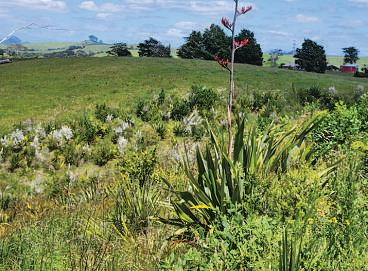
flourishing on the Pye family farm in Northland. Steep land, wet areas, drains and rivers have been fenced off and planted to protect them from cattle.

back the native bird life and we want to be offsetting our carbon emissions with what we do on the farm.”
Mandy continued her teaching career and now teaches at a local school
But she still gets to enjoy the changes on-farm and the family regularly help plant and maintain planted areas
“It’s exciting to see an area of planting finished, flourishing and plan for the next area to begin,” says Mandy
“It’s a great effort for a couple who started out with careers in teaching and with no plans to go farming.”
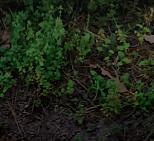
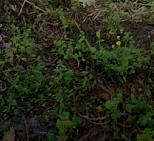


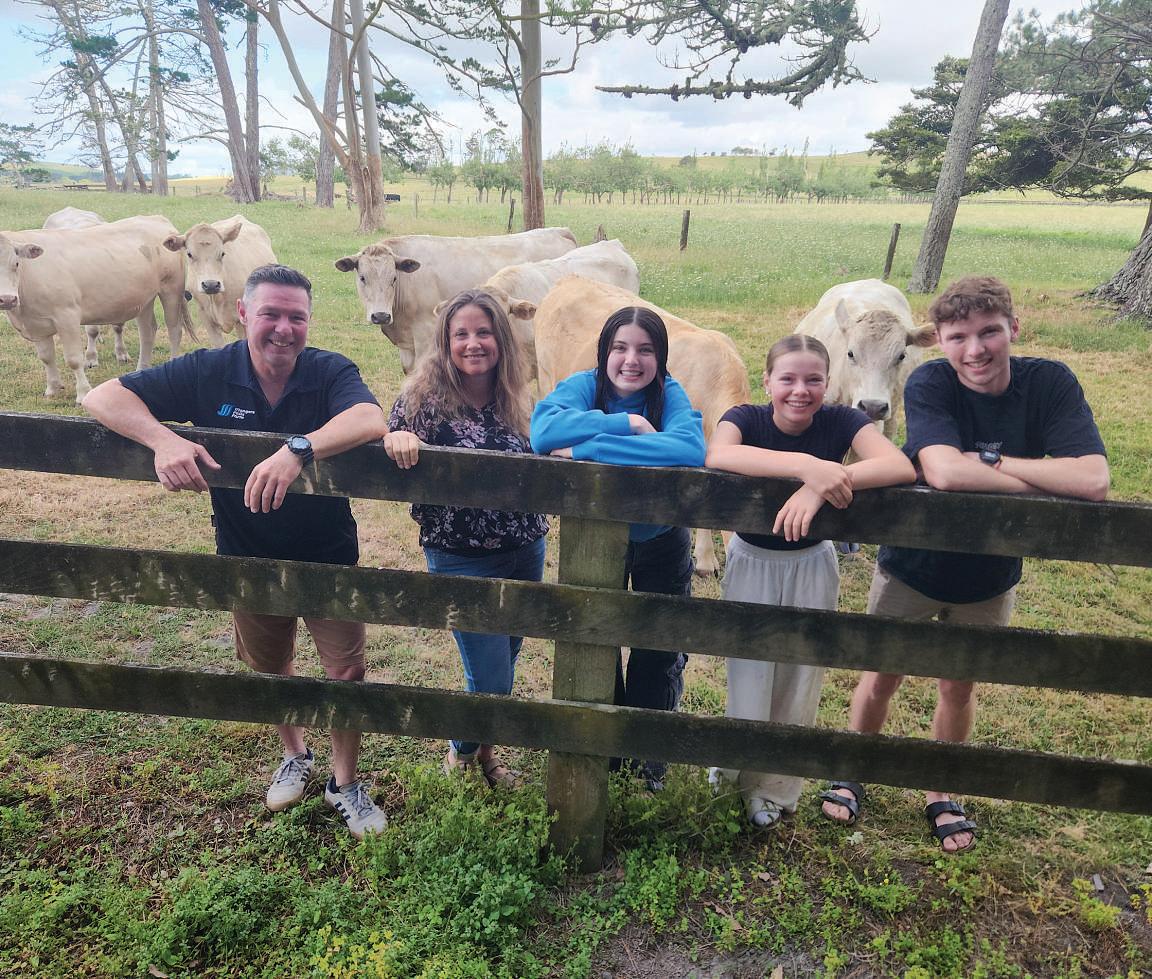
KMR nominated for 2025 Earthshot Prize
Kaipara Moana Remediation, which invests in projects to restore wetlands, fence off rivers and streams, plant trees and regenerate forest on erosion-prone land across Auckland and Northland, has been nominated for the 2025 Earthshot Prize.
KMR is New Zealand’s largest harbour restoration initiative, but it is also one of the largest catchment groups in the country. It has grown from working with 35 landowners and groups a little over 3¼ years ago to now working with 814 landowners and groups.
More than $24 million has so far been invested in KMR restoration projects across Northland and Auckland, with KMR grants supporting a wide range of project types.
While KMR’s focus is on reducing sediment, the projects it invests in – to restore wetlands, fence off rivers and streams, plant trees and regenerate forest on erosion-prone land – also bring wider benefits. These include helping valued species to thrive, reducing climate change risks and increasing resilience to storms and other extreme weather.
“Catchment groups are a critical part of New Zealand’s future.
“KMR has actively supported a number of other groups up and down the country with advice, practical support and open-access resources, and we look forward to continuing sharing our knowledge,” KMR pou tātaki Justine Daw says.
“KMR’s success relies in large part on the way we work as we focus on
making things easy for the many landowners and groups who would like to do the right thing but who need a hand to get started, or to focus on the actions that make the greatest environmental difference.
“To this end, I’d like to thank my staff for all their hard work supporting nature, working alongside local communities, and inspiring future generations.”
Daw says the work and quality advice of KMR’s field advisers, which is enabled by smart digital systems, has been instrumental in KMR being nominated for the globally prestigious 2025 Earthshot Prize.
The Earthshot Prize is an initiative inspired by President John F Kennedy’s ‘Moonshot’ challenge in 1962, which aimed to land a man on the Moon within a decade. Launched by Prince William in 2020, the Earthshot Prize aims to search for, and scale, the most innovative solutions to the world’s greatest environmental challenges.
The 10-year global initiative aims to identify and support programmes and initiatives that can accelerate and scale the environmental innovations needed to repair and regenerate our planet across five categories
Every year, the winners with the best chance of helping achieve the identified ‘Earthshots’ are awarded significant funding to scale their solutions, with all finalists receiving tailored support from a global alliance of partners.
The Earthshot Prize 2025 Awards ceremony will take place on November 5 in Rio de Janeiro, Brazil.
Natives
Kaipara Moana Remediation pou tātaki Justine Daw says KMR’s success relies on the way they work and focus on making things easy for the many landowners and groups needing a hand to get started.
The Pye family run a 260-hectare beef unit at Ruatangata West, near Whangārei. From left, Rob, Mandy, Morgan, Yvie and Daniel with some of their beef cattle.
STEVE MACMILLAN
Farming sector acts to save pasture
Across the upper North Island, from Northland through Waikato and Bay of Plenty, dairy and livestock farmers are confronting a growing threat: pastures, that once held strong, are becoming less persistent, threatening the industry’s profitability and sustainability.
DairyNZ data reveals a troubling trend: pasture harvest has declined by 0.5 to 1 tonne of dry matter per hectare per decade in Northland and Waikato, which in turn is driving increasing pasture renewal rates and escalating costs for farmers.
Pasture persistence (how long they last) is affected by climatic change – prolonged dry or wet conditions, more frequent extreme weather events and shifting patterns generally – and is felt keenly in farmers’ paddocks and pockets.
DairyNZ modelling and regional data show clear signs that as temperatures rise and weather becomes more erratic, pasture persistence will continue to diminish in the upper North Island. This not only threatens farm profitability, but also draws into question New Zealand’s identity as a world-leading pasture-based dairy producer
Pasture-based farming underpins productivity and environmental sustainability because of its low-cost and availability. It is central to our global competitive advantage, so its erosion puts at risk the economic foundations of the sector.
Homegrown feed: The profit and emissions double win
Addressing the pasture resilience challenge cannot ignore the broader farm-system context, especially the role of feed in both profitability and emissions.
DairyNZ’s Emissions and Profitability
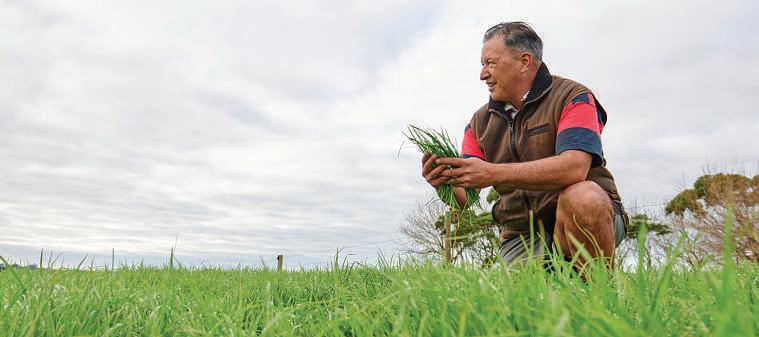
Project, a collaboration with Fonterra and LIC that analyses anonymised data from about 8000 farms, highlights a powerful insight: using more low-footprint, homegrown feed is key to achieving both high profit and low emissions intensity.
Keyfindings include:
■ There is no direct correlation between profit per hectare and emissions intensity, meaning farms can be both highly profitable and emissions efficient;
■ The farms that succeed on both fronts rely heavily on homegrown feed, utilising nitrogen efficiently and keeping emissions low, without relying excessively on purchased feed with higher embedded emissions.
The study quantifies the economic benefit: each extra tonne of homegrown feed eaten per hectare was associated with up to $428 in additional profit.
By strengthening pastures – making them more productive, resilient and long-lasting – we not only increase feed security, but also underpin economic and environmental
performance. A healthier, persistent pasture base means more homegrown feed, more profit and lower emissions.
Resilient Pastures: A sector-wide initiative backed by government Recognising the urgency of the pasture persistence challenge, in mid-2025 DairyNZ established the Resilient Pastures scheme – a seven-year, $17 million cross-sector research and extension initiative, jointly funded by the Government’s Primary Sector Growth Fund (PSGF), administered by the Ministry for Primary Industries.
Resilient Pastures has four goals:
■ Define current and future climate conditions and variability so farmers understand what they must adapt to;
■ Evaluate pasture species, mixtures, and management practices that improve resilience and persistence;
■ Design profitable and sustainable farm systems built around resilient pastures;
■ Promote adoption of these solutions through decision-support tools as

well as stakeholder collaboration.
Importantly, Resilient Pastures is grassroots, farmer-led research, grounded in real paddock conditions and farmer observations. Northland, already leading the trends in declining pasture persistence, is central to the research, ensuring solutions are region-specific and widely applicable. Partnerships span across the agriculture sector, including Beef + Lamb New Zealand, TR Ellett Agricultural Research Trust, Hine Rangi Trust, Northland Dairy Development Trust, Barenbrug, and Fonterra – reflecting a united approach to solving one of farming’s most pressing challenges
These collaborative research efforts weave together issues of climate risk, farm profitability and environmental responsibility. Declining pasture performance threatens feed security and farm economics. Yet, through the Emissions and Profitability Project’s research, DairyNZ shows homegrown feed is fundamental, bolstering profit and reducing emissions
Resilient Pastures harnesses this insight, investing in research to future-proof our pasture base and supporting farm systems. By working across the sector, blending industry, Māori, farmers, researchers and government, New Zealand’s pastoral sector is stepping forward with bold, pragmatic and future-focused initiatives. The message stands: to protect our pasture-based farming advantage, we must strengthen our pastures, support farmers,value homegrown feed and act boldly together.
Project resources
■ dairynz.co.nz/research/science-projects/ emissions-and-profitability/ ■ dairynz.co.nz/research/science-projects/ resilient-pastures-programme/




































Chappy McKenzie – a dairy farmer and Resilient Pastures partner in Northland’s Aratapu
What’s on
● Sept 3: Dairy Women’s Network
Understanding the Global Fertiliser Market and what this means for your business, Webinar
Join Ballance Agri-Nutrients for a live webinar to get the latest updates on the global fertiliser market – and what it all means for your business. Info at dwn.co.nz/events
● Sept 3-4: Te Arawa Arataua
Māori Agribusiness Summit 2025, Rotorua
Proudly sponsored by B+LNZ, this national two-day conference that brings together Whenua Māori and iwi authorities, industry and government to tackle the critical issues facing Māori in the primary sector.
Info at taps.org.nz/summit-2025
● Sept 4: B+LNZ
Mid Northern North Island Farm Showcase and Farmer Council
AGM, Waikato, Bay of Plenty
Join us for a unique on-farm event hosted by Stokman Angus at their sale barn, where innovation meets tradition.
Info at beeflambnz.com/events
● Sept 4: B+LNZ Farmer Forum with Andrew Hoggard
Join Beef + Lamb New Zealand for an afternoon session with Andrew Hoggard, Minister for Biosecurity and Associate Minister for Agriculture and the Environment.
Info at beeflambnz.com/events
● Sept 5: B+LNZ
Ladies’ Night Out, Manawatū-Whanganui
Join us for a heartwarming evening designed especially for the incredible women of our rural communities.
Info at beeflambnz.com/events
● Sept 9: AWDT
AWDT Next Level programme, Wellington
Is 2025 the year you embrace your leadership potential? Be one of more than 200 women who’ve grown their mindset, skills and courage to lead through change and achieved their goals with Next Level.
Info at awdt.org.nz
● Sept 11: Owl Farm
Owl Farm September Focus Day, Cambridge
Review the season to date and relevant seasonal topics Info at owlfarm.nz
● Sept 11, 18 and 25: B+LNZ
Trevor’s Top Tips, Webinars
Beyond the Drench: Breaking the worm cycle with better systems.
Info at beeflambnz.com/events
● Sept 16: SMASH
Stepping Back Successfully, seminar, Ngatea
Many people put off succession planning because they think it is too difficult or feel anxious about the future
This informative and interactive day will start you on the path to creating a succession plan that will work for you and your family.
Info at smallerherds.co.nz
● Sept 19: B+LNZ
Young Farmer Development Scholarship: applications open, Otago, South Canterbury Presented by the B+LNZ CSI Farmer Council. Are you a passionate young farmer in Otago or South Canterbury? This scholarship supports your growth in the sheep and beef sector through funding for training and development.
Info at beeflambnz.com/events
● Sept 22: B+LNZ Quad Safety Management Workshop, Manawatū-Whanganui/ WLG
Safety and awareness presentation for safe quadbike operation.
Info at beeflambnz.com/events
● Sept 24: B+LNZ Farmer Forum and NNI Farmer Council annual meeting, Northland Plates full, minds open farmer forum with keynote speaker Sam Johnson. Join us for a catered lunch and the chance to hear from two inspiring speakers.
Info at beeflambnz.com/events
● Sept 24: Dairy Women’s Network
Masks On. Toxins Gone, Webinar Beneath the daily routine of farming, there’s a growing concern – exposure to herbicides and pesticides is linked to Parkinson’s, a progressive neurological disorder that’s the second most common after Alzheimer’s and the fastest-growing worldwide. Info at dwn.co.nz/events
● Sept 25: B+LNZ
Sherlock Field Day, Waikato
This event is brought to you by B+LNZ, Halter and AgResearch. Join us for a dynamic and insightful field day hosted by Jon and Fiona Sherlock showcasing the evolution of traditional farming systems into a more cattle-focused approach, powered by Halter technology. Info at beeflambnz.com/events
● Sept 26: SMASH
Path into Farm Ownership with Amy and Steve Gillies, online Is farm ownership your goal?
Join us to hear how Amy and Steve Gillies, DIA Waikato Share Farmers of the Year 2018, turned their farmownership dream into reality in 2022. Info at smallerherds.co.nz
● Rural Support Trust: Brunch on Us,various dates and locations
Farmers, growers, beekeepers, rural contractors – this one’s for you. Rural Support Trust Bay of Plenty, together with our incredible sponsors, invites you to Brunch on Us – a relaxed, pan-sector event series for anyone working in our rural industries. These drop-in brunches are a chance to take a breather, share a cuppa and a bite, and connect with others who get the unique challenges of life on the land.
Info at rural-support.org.nz/events
Registration is essential for many events. Check out the various websites for more events.



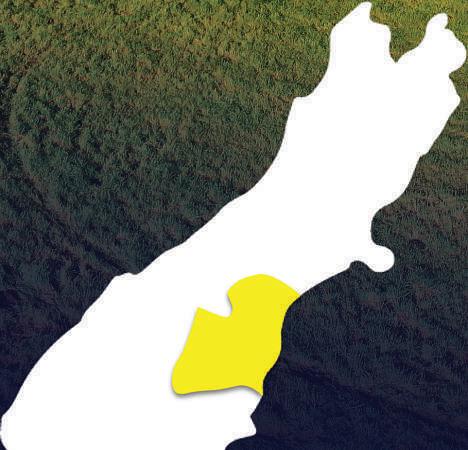

Kānuka: the quiet achiever for NZ farms
More than honey –a hardy native tree with big benefits for farmers.
By Scott Downs, general manager
of sales and marketing at PF Olsen.
Many New Zealand farmers will have seen the rapid expansion of mānuka plantations, driven by demand from beekeepers and investors.
But while mānuka has its merits, it is worth taking a fresh look at its close cousin, kānuka (Kunzea ericoides).
This species offers a wider range of benefits, particularly for landowners considering long-term value from their hillsides and marginal country.
Although mānuka and kānuka have a superficial similarity and are collectively known as ‘tea trees’, they are genetically very different.
Faster growth and greater longevity
Unlike mānuka, which is typically a short-lived shrub typically reaching 3–6 metres in height, kānuka is a true tree. It often grows 15m or more, with some specimens exceeding 25m in the right conditions.
Kānuka also lives longer, commonly 60–80 years and sometimes much more, compared with the 40 years typical of mānuka. This difference has important implications for both farm shelter and carbon sequestration.

Right: Next time you’re looking at what to plant on steep gullies or unproductive corners of the farm, think about kānuka – the quiet achiever that grows bigger, lasts longer and locks away more carbon than its famous honey cousin.
A stronger performer for carbon credits and future biodiversity credits
For farmers considering the Emissions Trading Scheme (ETS) or simply looking to offset emissions, kānuka is a standout option.
Its larger size and extended lifespan mean it locks away significantly more carbon than mānuka. Over a few decades, that adds up to a meaningful long-term income stream from carbon credits, especially on land that may not be contributing much to farm productivity. Kānuka is naturally hardy, well-adapted to a wide range of New Zealand conditions. It thrives on poor soils, steep hill country, and exposed ridges where other species may struggle. Its deep root system helps stabilise soil, making it useful for erosion

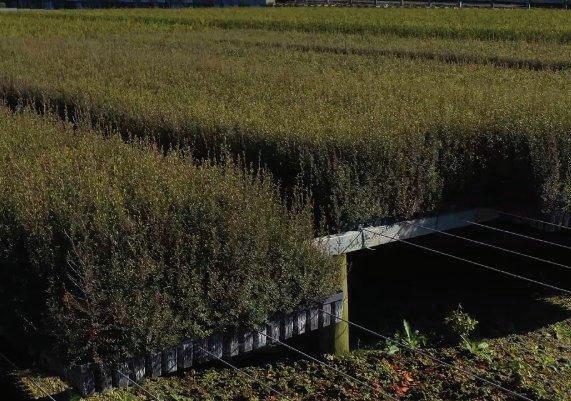
control. Unlike mānuka, kānuka also forms a denser canopy that suppresses weeds and allows natural regeneration of native understory plants.
In many areas, kānuka plays an important role as a “nursery tree”, creating the conditions for podocarps and broadleaves to establish underneath.
Kānuka are useful in restoration projects as they are not usually eaten by browsing animals like sheep, cattle and goats.
A valuable farm tree
While kānuka doesn’t produce the same high-value honey as mānuka, it still provides nectar for bees and contributes to honey blends. Its timber is strong and durable, historically used for tool handles, fence posts, and paddles etc.
As a farm tree, kānuka makes excellent shelterbelts and can help reduce wind exposure for stock and crops Its dense foliage and habitat value also support native bird and insect populations, boosting on-farm biodiversity.
Looking beyond the hype
The rush into mānuka planting has sometimes overshadowed the broader potential of our other indigenous species.
Kānuka deserves greater recognition for its role in carbon sequestration, soil conservation, shelter and ecological restoration. For farmers weighing up the best use of marginal land, kānuka offers a low-maintenance, resilient and economically sound option that delivers benefits well beyond honey production.
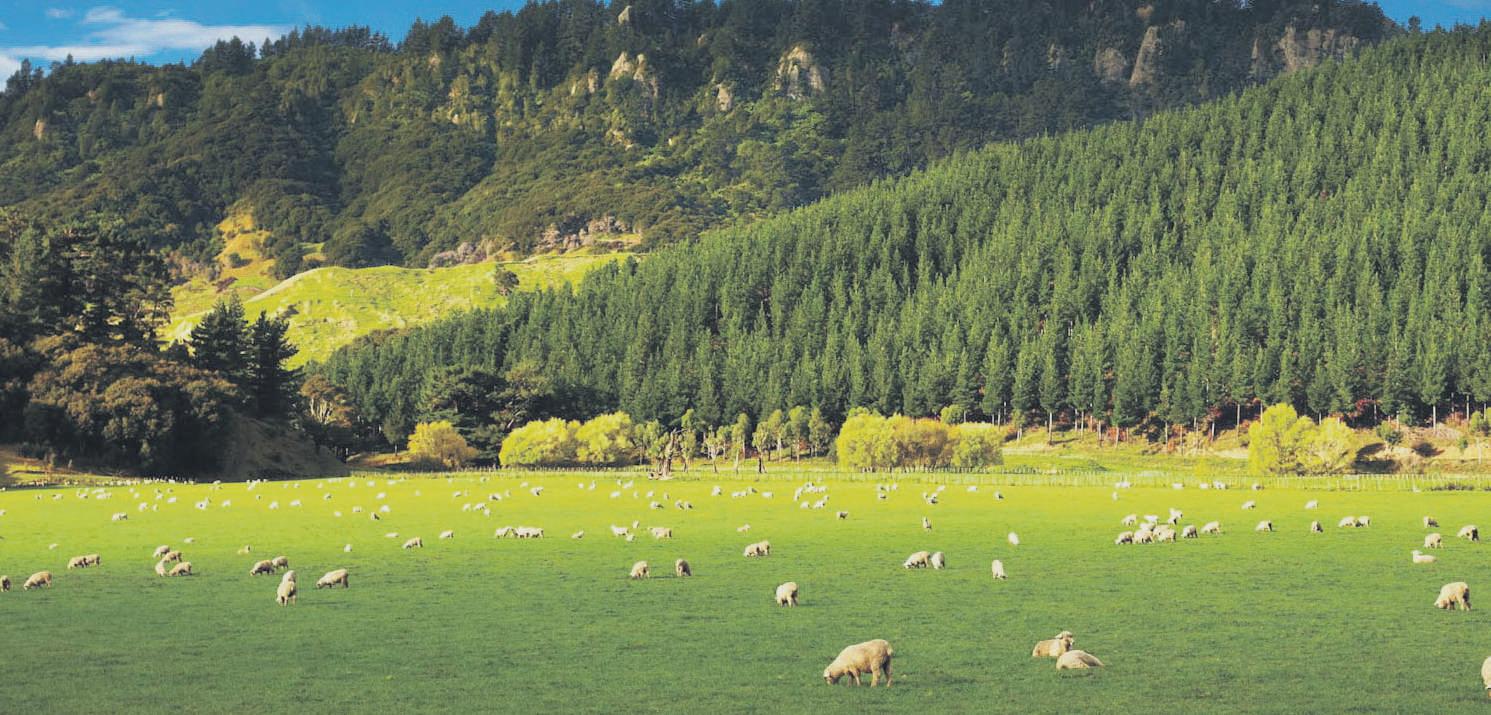




Left: Kānuka seedling produced at PF Olsen’s Waiuku Nursery.
PHOTOS PF OLSEN









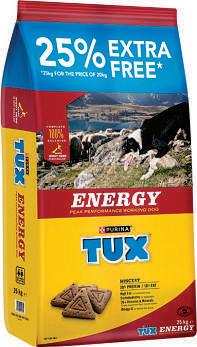
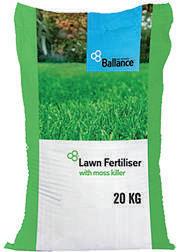


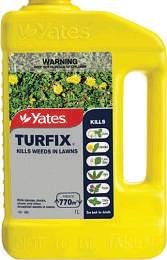





















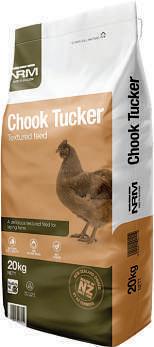





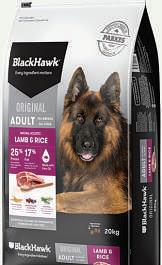

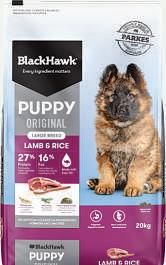


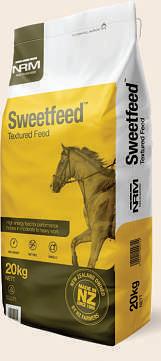



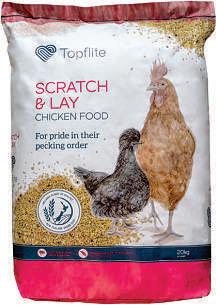
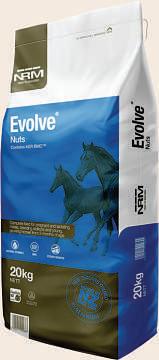

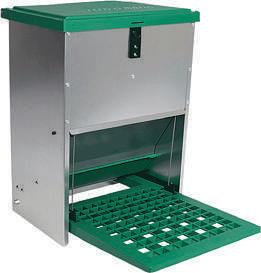


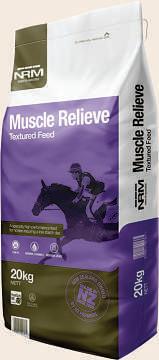
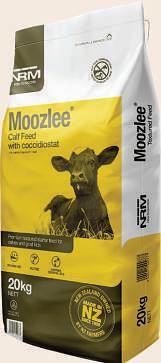


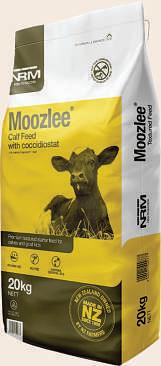




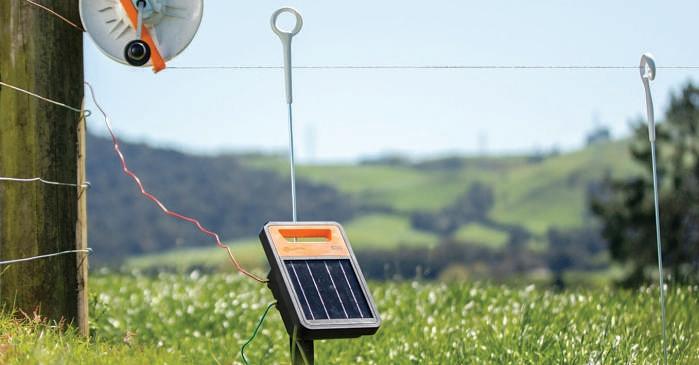
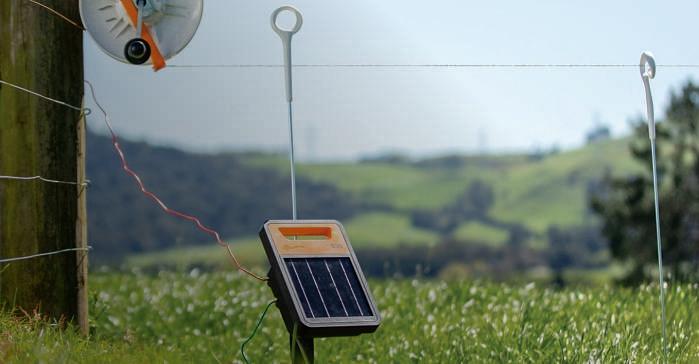
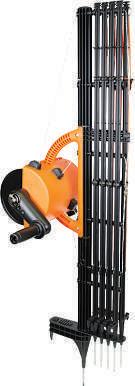



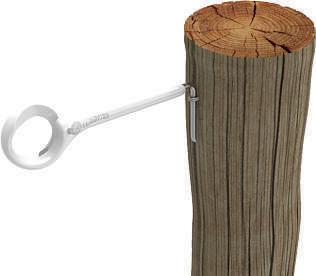
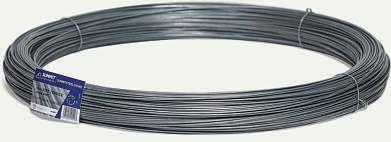



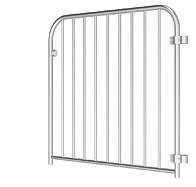



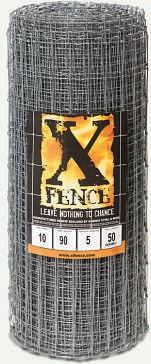














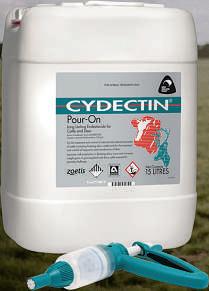

















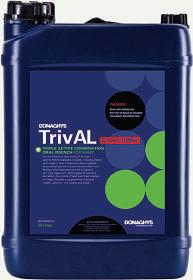



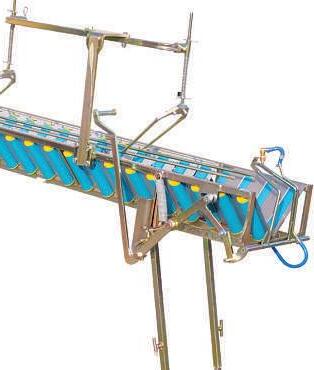








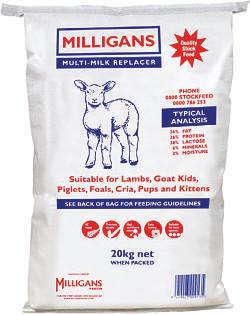
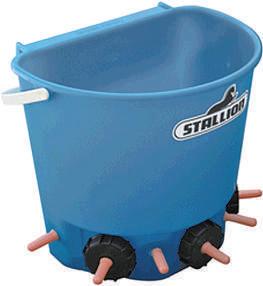
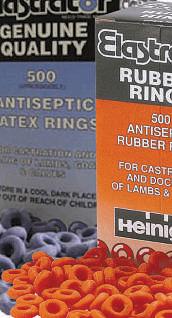







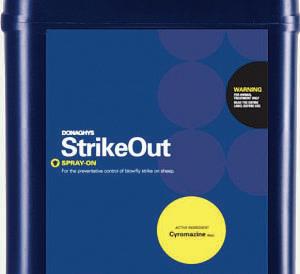

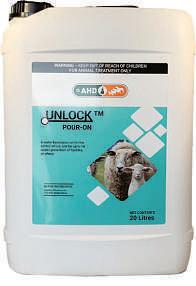


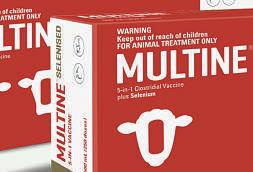
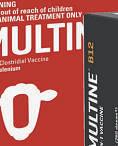

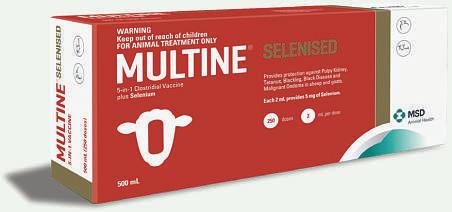

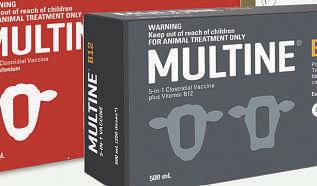

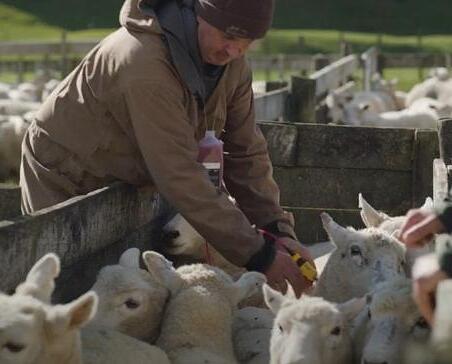




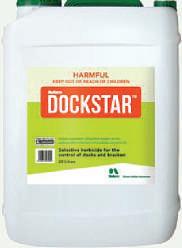


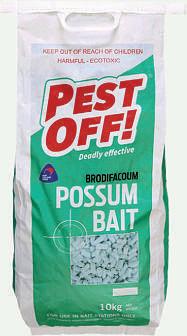






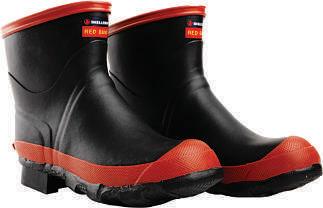



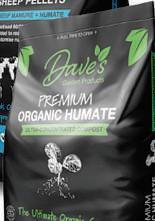

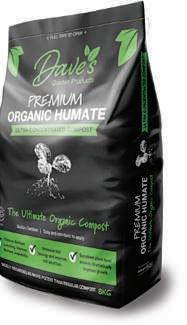
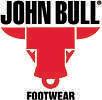




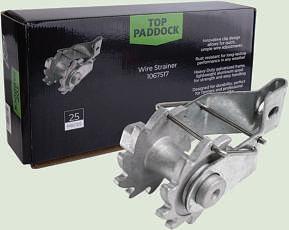
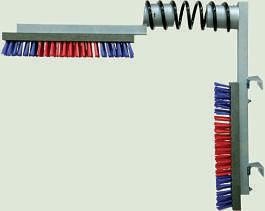













Fonterra sells consumer businesses for $3.8 billion
It was a ‘head versus heart’ decision for the farmers, Fonterra bosses say. Alka Prasad reports on the sale to Lactalis.
Fonterra’s decision to sell its global consumer businesses to French dairy giant Lactalis for $3.8 billion was backed by the co-operative’s farmers, but not without nostalgia at selling well-known household brands, according to the company’s executives
“There’s no-one more invested than farmers. So farmers’ heads will be fighting with their hearts,” said chairperson Peter McBride at a briefing after the sale’s announcement on August 22.
“Don’t underestimate how big a deal this is. They’ve got a big decision to make.”
Under a deal, the company is planning to sell household brands like Anchor and Mainland in New Zealand, as well as major consumer brands in the likes of Sri Lanka and Australia.
At the media briefing on the sale, McBride said despite the “mixed feelings”, a majority of farmers backed the move.
It was a case of “head fighting the heart”, McBride said, but the logical decision was for Fonterra to sell. “There’s no-one more invested than farmers.”
“I think it’s mixed because has been a long journey for Fonterra shareholders, so this is about gi them back some of the world, like the [financial] commitments they made over a long period of tim
When asked about Kiwi consumers’ connection to the dairy brand Anchor, chief executive Miles Hurrell said the deal with Lactalis meant “the milk and the ingredients that go into those brands will remain”, and the French company would continue the legacy of the beloved brand
“It’s a long-term investment they’re wanting to continue to grow and invest in. They’ll be putting cash behind those brands to take to the next level,” Hurrell said.
Under a long-term supply agreement, Fonterra would cont selling milk and ingredients to which meant local milk would into Lactalis’ brands.

“Ultimately, it’s their decision from here, but I’m convinced that they’ll look to invest up on those brands in the long term.”
Fonterra expected to complete the sale in the first half of next year. If approved, the co-op plans to return $2 per share, or $3.2b, to its farmer-owners through a tax-free capital return.
That meant farmers would get part of the money originally invested in co-op shares back, with a reduced share cost base.
“Farmers have been required to put capital in over time,” Hurrell said. “We’re returning some of that capital to them.
“It’s important for regional New Zealand because that money will be invested back.”
Fonterra Co-operative Group shares were up 15% after the announcement, trading at $5.77, up from $5.02 at the start of the day.
The sale includes Fonterra’s global consumer business, excluding Greater
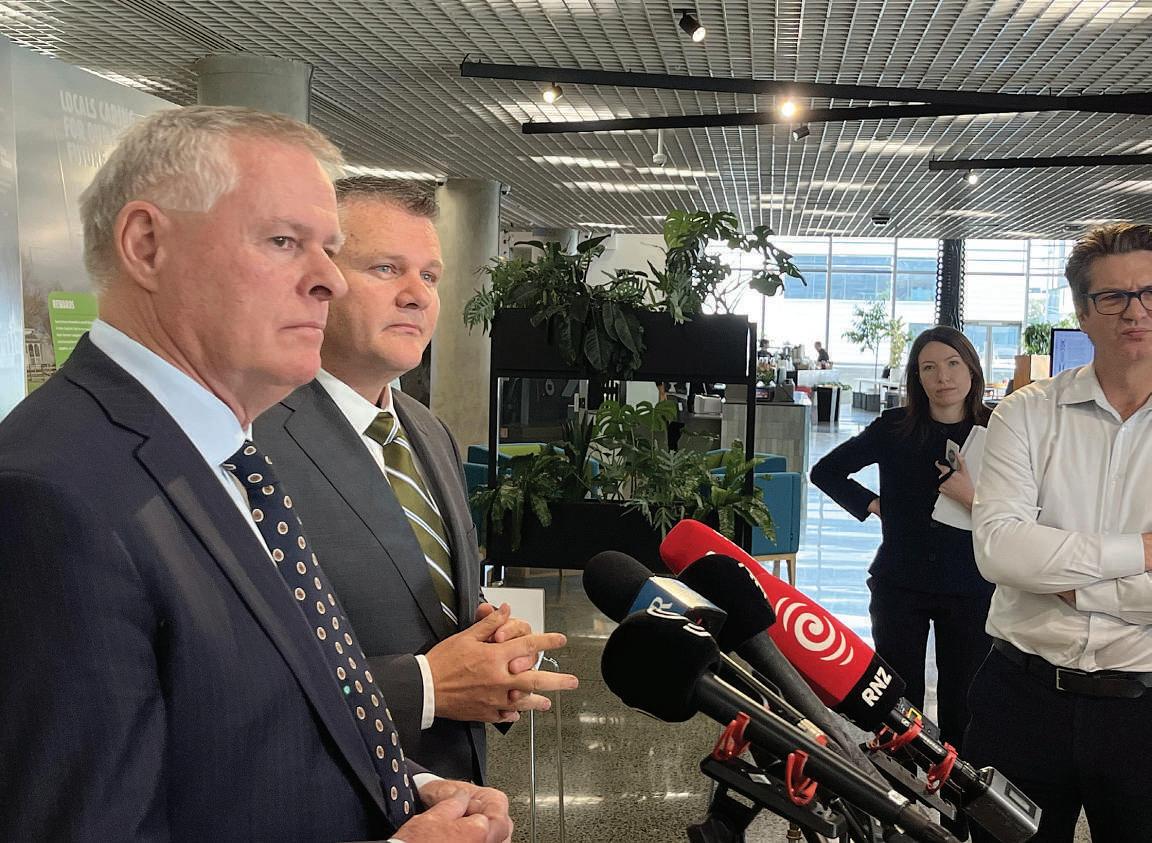
China, and consumer brands including Anchor and Mainland in New Zealand, Western Star, Perfect Italiano in Australia, and Asian and Middle East brands Anlene, Fernleaf and Raththi. The sale might also include Bega-licensed brands which are currently under dispute in Australia.
If the ongoing dispute was cleared, the sale would come to a headline value of $4.22b with the inclusion of Australian Bega Cheese licences.
Hurrell did not confirm any details Bega dispute, but said the likely would further benefit farmershareholders.
The sale needs regulatory clearance and the separation of its consumer brands, foodservice and ingredients businesses that are sharing operations at Fonterra. Shareholders also needed to vote in support of the deal.
Why Fonterra is selling
“ Don’t underestimate how big a deal this is. Peter McBride
The sale came after the company spent 18 months looking to divest its consumer brands, and followed a 15-month review.
Hurrell said divesting consumer brands would sharpen Fonterra’s focus on higher-margin, globally competitive ingredients and foodservice operations, while benefiting from Lactalis’ scale.
“As the world’s largest dairy company, Lactalis has the scale required to take these brands to the next level.”
Farmer-owners would vote on the sale in late October or early November. The co-op had deferred its annual meeting until December to give members time to consider the transaction.
If approved, the return to farmershareholders would come through after
the first half of next year once proceeds from the sale were received.
The company would hold a separate vote confirming the payout. Fonterra’s full-year 2025 earnings guidance of 65 to 75 cents per share remained unchanged.
Background
The sale marks the co-op’s strategic retreat from consumer brands in favour of business-to-business exports, which it believed would work better for its massive-scale milk processing and ingredient manufacturing.
Early this year, Fonterra launched a dual-track process, deciding between an IPO and a trade sale for its consumer and ingredients operations.
This “dual-track” strategy was designed to maximise “value and flexibility” of the business. The auction drew global interest from players like Meiji, Saputo and Warburg Pincus.
The Australian Competition and Consumer Commission (ACCC) signalled in July that it would not oppose the sale, noting minimal competitive impact between Fonterra and Lactalis.
Lactalis is owned by the wealthy Besnier family.
On its website, Lactalis says it is the ninth largest food group in the world, and the world’s largest dairy company with more than 85,000 employees worldwide.
The company sells dairy products in 150 countries under brands including Kraft in America, President in France, Parmalat in Italy, Seriously in Scotland and Penguin in the Middle East. It says it is the world’s biggest cheesemaker.
Lactalis was founded in 1933 by Camembert cheesemaker Andre Besnier, but has grown through a series of acquisitions around the world.
Fonterra chairperson Peter McBride and chief executive Miles Hurrell at a briefing last month on the sale of its consumer brands ROB STOCK/STUFF
Fonterra has agreed to sell its consumer brands in Australia, New Zealand, Asia and the Middle East after a 15-month review.
A2 boosts capacity to meet demand
The company has sold its loss-making Mataura factory and acquired a Pōkeno plant, cementing its push into Asia even as China’s infant formula market shrinks.
By Alka Prasad
The a2 Milk Company has swapped a loss-making manufacturing plant for more capacity in a new plant in Pōkeno, bought from Chinese dairy giant China Mengniu Dairy.
In the full year ending June 2025, the company sold its Mataura Valley Milk (MVM) to Open Country Dairy and acquired all shares of Yashili New Zealand’s Pōkeno plant. It was a “strategic step-change” designed to improve margins and strengthen a2’s foothold in Asia.
The board flagged plans for a $300 million special dividend from the sale of the Mataura plant, if it gets the green light from Chinese regulators. After the result, company shares were up 1.26% at $8.83 a share, from $8.72 previously.
“We’ve been working on the sale of MVM for many years and this is without doubt the preferred strategic and operational outcome,” a2 chief executive David Bortolussi told investors. “The Pōkeno plant is a world-class asset, with a state-of-the-art, high-speed canning line and a team with deep experience in producing base powder and packaging to scale.”

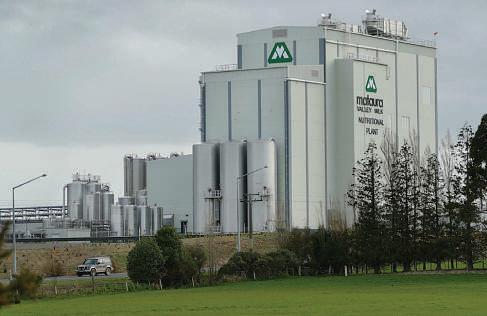
Unlike MVM, which had been consistently loss-making, the Pōkeno plant already held two Chinese-label product registrations.
The limit for Chinese registrations for a facility was three products, and the company was waiting until it could add a third, which would likely be in 2027.
A2 retained the right to unwind the deal if approvals did not come through, but Bortolussi stressed that outcome was “very unlikely”.
He said the move would eventually let the company shift production of a2 Platinum formula from Synlait’s North Island plant to the Pōkeno facility.
“We’re swapping one loss-making asset for another, but one that is much more likely to provide bigger returns over time.”
The purchase allowed for a supply chain “transformation” that would “enable better growth and allow us to expand our portfolio and global market opportunities. It’s a multi-year journey, not a big bang,” he said.
Financials
The company’s revenue grew 13.5% to
Left:A2’sMatauraValleyMilk factoryhasbeensoldtoOpen CountryDairy.
JOHN HAWKINS/ THE SOUTHLAND TIMES
Right:A2Milkchiefexecutive DavidBortolussisaysgrowth inChinaandtherestof Asiahasboostedthe company’smarket share.
$1.9 billion in the year. Posttax profits from continuing operations rose 21.1% to $202.9m, up 21.1% on the previous year. The figure excluded its noncontrolling interest in MVM, which made a $10.8m loss.
Infant formula
The “Year of the Dragon” birth bump had given an uplift to early-stage formula sales in China, but the long-term demographic outlook remained a headwind.
Infant formula sales had dropped overall in China by 3.2% during the year, even while a2’s market share had grown.

Bortolussi said the company took a bigger market share in China during the year, becoming the country’s fourth biggest infant milk formula brand.
Growth in the United States was up 22.5% while sales at MVM were up 42.7%, despite the arm making a loss in the period.
The company also added to its first-ever dividend declared at its half-year result in February. A2 declared a final full-year dividend of 11.5c per share, for a full-year dividend of 20cps.
Bortolussi said it was a “significant milestone for our shareholders”.
Total infant milk formula sales were up 9.9%. Within this, English-language label sales were up 17.2%, driven by sales through cross-border ecommerce and offline-to-online channels.
Bortolussi said there were some potential bright spots in a2’s largest market: “The Chinese central government is introducing subsidies to help offset the cost of childcare, which is encouraging, but it’s too early to assess the impact.”
He acknowledged the group’s English-label infant formula, sold globally, was not keeping pace with its competitors
“Our English-label share data from Kantar and Smartpath doesn’t fully align with our own performance,” the chief executive said.
“We’ve probably lost a little share in the category, especially as competitors like Nestle have been ahead in innovation.”
Outlook
For the full 2026 year, the company expected net profit to stay consistent with 2025’s result of about $203m.
Revenue was expected to see high single-digit revenue growth in the next year MVM would be treated as discontinued operations, with a likely $130m loss on sale.
The board reaffirmed its dividend policy of paying out 60-80% of normalised profit back to shareholders
Bortolussi said that further shareholder returns would be considered once the MVM sale and Yashili plant transactions were completed.




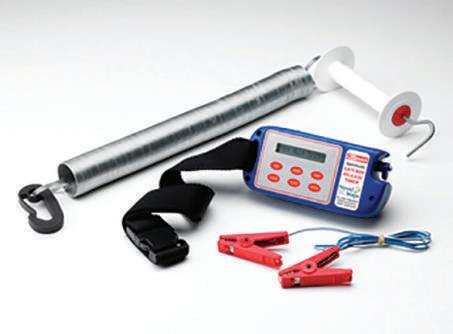


















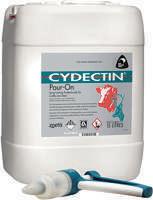
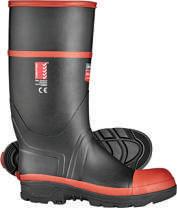






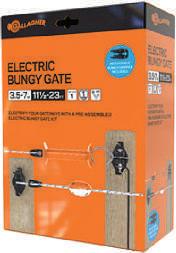


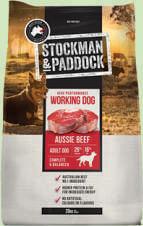
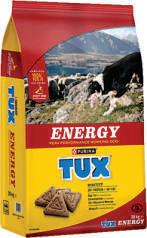


















When youspend $500 or more with us between1 June and30 November 2025,you have theoptiontospreadyourpaymentsacross 4,5 or 6months. Or deferyourpaymentsfor 6months-interestfree.*** Ask instoretoday formoreinformation.
Red meat sector hails visas
Two new work visas will help address the labour shortage in agriculture during peak season.
By Sonita Chandar
New Zealand’s red meat processing and exporting sector has welcomed the new work visas announced by the Government.
Two new visa options will be introduced under the Accredited Employer Work Visa framework: the Global Workforce Seasonal Visa and the Peak Seasonal Visa to help address labour shortages during peak seasons.
They are designed to help accredited employers bring in workers for short-term roles driven by seasonal environmental peaks, while maintaining fair and consistent immigration settings.
Meat Industry Association chief executive Sirma Karapeeva said migrant workers were essential to keeping more Kiwis employed in meat-processing plants.
“While the sector aims to employ New Zealanders first and foremost, the reality is that during the peak months of the processing season the demand for these roles exceeds the available workforce in New Zealand.
“Improving the ability to employ migrant workers on a seasonal visa means meat processors can ensure shifts run at maximum capacity on a regular basis.”
Karapeeva said this would result in more sustainable employment and income for New Zealanders employed by the sector.
“When meat-processing plants have enough people to run at full capacity, companies can process every part of the carcass to capture maximum value, ensuring higher returns on exports, which flows back to farmers, regional New Zealand and the economy.”
The Global Workforce Seasonal Visa is for highly skilled and experience seasonal

workers in roles such as rural contracting, sheep scanning, wine-making and snow instruction. It’s valid for up to three years, and visa holders can transition to other visa types.
“These visas are designed to reflect the realities of seasonal work and the diverse range of skill levels involved,” Immigration Minister Erica Stanford said.
“They’ll help fill critical roles in industries where employers struggle to find enough New Zealand workers at peak times From ski instructors guiding first-timers down the slopes to winemakers helping create next year’s vintage, these visas are designed to keep seasonal industries humming.
“These changes are part of our plan to deliver immigration solutions to help grow our economy.”
Employers need to get a job check for a seasonal role, then a worker applies for the seasonal visa. Visa holders must spend at least three months outside New Zealand each year.
before reapplying. Applicants need at least one season of relevant experience from the past three years, and must hold comprehensive health insurance.
There is no English language requirement, but employers have to engage with or be endorsed by Work and Income.
Karapeeva said the sector was also committed to providing appropriate pastoral care and wraparound support to migrant workers.
“Companies help them to participate in their communities and enjoy the Kiwi lifestyle while they are in New Zealand.
“The red meat industry is a cornerstone of New Zealand’s economic and social wellbeing, earning almost $10 billion in export value in 2023-24
“It supports over 92,000 jobs and generates approximately $4.6 billion in household income for Kiwis.

Applicants need to have worked in a relevant seasonal role for at least three seasons over the previous six years.
There will not be a Labour Market Test and applicants do not need an English language requirement
The Peak Seasonal Visa is for entry-level, short-term seasonal roles such as meat and seafood processing, calf-rearing and wool handling; it’s valid for up to seven months.
After reaching the seven-month limit, visa holders must take a four-month break
“At the regional level, especially in New Zealand, its importance even more pronounced. We thank Minister Stanford and government officials for their positive engagement with the sector.”
Stanford added: “We know the success of our seasonal industries is critical to growing the economy.
“These new visas will make it easier for employers to bring back experienced seasonal workers and to fill short-term roles that are hard to fully staff locally.
“We are making sure businesses can access the right people at the right time, while also protecting opportunities for Kiwis.”
Employers will be required to advertise these roles, as well as engage with the Ministry of Social Development (MSD) to ensure New Zealand workers continue to be prioritised.
The Global Workforce Seasonal Visa and Peak Seasonal Visa will be available from December 8, 2025 under the Accredited Employer Work Visa framework.
Workshop highlights young farmers’ promise
Education
Lucy Cooper
Atwo-day workshop for up-and-coming beef farmers has left older hands in the industry feeling “really heartened”.
The Beefing It Up youth workshop, hosted by Angus Australia and Generation Angus NZ, immersed 17 prospective farmers in commercial breeding and trading production systems at two Wairarapa stations.
Nancy Crawshaw, from Angus Australia, said the event was a resounding success, with the “passion and enthusiasm” of the group making her eager to ensure more young people could participate in future.
“This workshop was about giving young people the confidence, tools and connections to lead in agriculture,” Crawshaw said. “It’s just the beginning.”
The workshop began by introducing participants to estimated breeding values (EBVs), accuracy measures and percentile bands, setting the tone for two days of intensive and practical learning.
Attendees examined how genetics and environment interact to shape the animals seen on sale day and in the trade market. It was followed by a visit to Homewood’s Matariki Terraces, hosted by George and Sarah Tatham, to observe breeding decisions in a
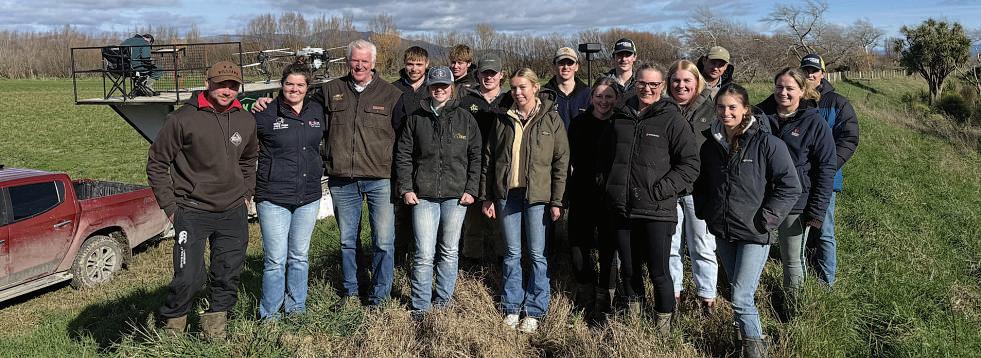
commercial hill-country herd. Day two at Shane and Lynnette McManaway’s Ongaha Station shifted the focus to systems thinking to learn how irrigation, pasture management and stock decisions are interconnected.
Participants explored how “knowing their numbers” – whether tracking pasture growth or analysing weight gains – could significantly improve decision-making and profitability.
Crawshaw said the two-day intensive workshop was not only a chance to “upskill young people on the beef industry and agriculture, but to also make them aware of the career opportunities that are available”. Technology, including the increasing
use of AI across the primary sector, made it “a really exciting time to be in agriculture”, Crawshaw said.
“There is so much technology coming so that farmers can make more informed decisions.”
While the growing use of technology was attracting young people into the primary sector, Crawshaw believed “back-to-basics” messaging might play an even greater role.
“It’s actually about teaching people where their food comes from, teaching them about how food gets onto our plates,” she said. “Ideally, we need to be getting education around agriculture back in schools.”
Ensuring young people had the social
skills to build effective relationships was also critical, Crawshaw added.
“One of the most important things you have in business is relationships, and I think it’s knowing how to build those relationships. Regardless of what industry you’re in, that’s so important.”
For McManaway, the two days was a positive and affirming experience.
“To have such magnificent people on the farm asking really in-depth questions about some of the more intricate parts of farming was really heartening,” he said.
“We get a lot of enjoyment out of helping young people looking for a bit of leadership and a little bit of direction, so any time that happens I’m always pretty pleased.”
The Beefing It Up youth workshop saw 17 prospective farmers immersed in production systems in Wairarapa.
The Government has annnounced two new visas for seasonal workers. Meat Industry Association chief executive Sirma Karapeeva, right, says improving the ability to employ migrant workers on a seasonal visa means meat processors can run at maximum capacity
VANUATU TOURISM
Collaboration is crucial for creating a future-fit industry
Opinion
The red meat sector needs to be bold when co-operating to ensure common goals are aligned and met, says Beef + Lamb New Zealand chairperson Kate Acland.
There’s something motivating about being in a room full of people who care deeply about the future of our sector.
In July, I joined more than 300 others in Christchurch for the Red Meat Sector Conference, and the mood was positive.
It’s been a good year for farmers, and that was much needed. Farm-gate returns are back in positive territory, confidence is lifting, and farmer sentiment is recovering.
But while we welcome the gains, we need to be looking firmly to the future
We cannot afford to take the current momentum for granted. There are potential challenges around every corner.
The United States’ decision to increase tariff rates imposed on New Zealand to 15% is a case in point.
There are very real challenges ahead and navigating those will require a shift in mindset.
If we want a future-fit industry, we need to be bold about how we collaborate –farmers, industry and government.
Over the years, Beef + Lamb New Zealand (B+LNZ) and the Meat Industry Association (MIA) have forged a strong working relationship. In particular, we are working together in the trade space
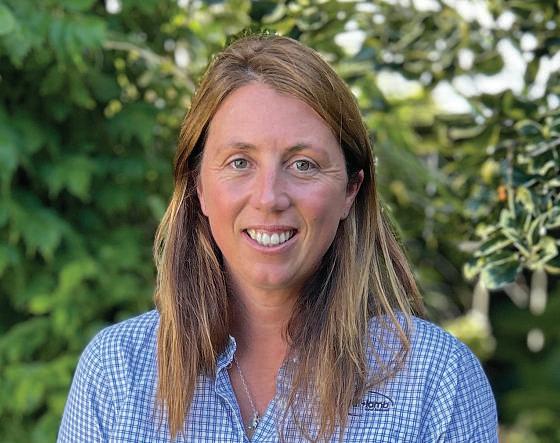
At the conference, we released our latest joint report on the non-tariff trade barriers facing our red meat exports, as well as our joint strategy for how we can double exports.
We’re also collaborating on the renewed Taste Pure Nature Country of Origin programme, which was announced during Prime Minister Christopher Luxon’s visit to China. This shows what is possible when we align around common goals.
One of the major challenges the sector is facing is significant over-capacity in the red meat-processing industry There are more plants and processing lines than there are livestock to sustain them efficiently, and this could get worse
The significant fall in livestock numbers in the past few years – from land-use change driven by Emissions Trading Scheme (ETS) settings and exacerbated by drought last year – has caused a significant reduction in stock for processing this year This has meant that, despite strong demand globally and high export prices, processors have


also need to take responsibility together to build profitability so we have a strong, prosperous future.
I hear repeatedly from farmers that they want a sector with streamlined operations, strong market signals and collaborative partnerships that create value across the entire supply chain.
A strong, future-focused red meat sector requires ongoing investment in core science and research. B+LNZ is committed to continuing to lift the productivity and profitability of our farmers and, in partnership with government, we are investing heavily in research that supports that.
The sector also needs a farmer-facing extension service that translates science into on-farm tools. B+LNZ is focused on providing the resources that farmers need to meet these expectations.
not been able to capitalise on this.
New Zealand’s red meat exports increased by over $1.2 billion in the past year, despite volume being down by more than 6%, but exports would have been hundreds of millions higher if the supply had been there.
Structural inefficiencies are a drag on the entire sector, but most importantly, the drop in stock numbers represents a lost opportunity for New Zealand.
For farmers to thrive, they need a processing sector that is functional, profitable, competitive and efficient.
We need to ensure our best breeding land isn’t planted in pines. We welcome the Government’s steps to introduce restrictions on whole farms being converted into forestry to enter into the ETS, but our recent analysis suggests the proposed restrictions will not go far enough.
New Zealand needs to get those regulatory settings right, but that alone will not be the silver bullet. As an industry, farmers and the wider red meat sector, we
It must also be supported by world-class data and insights to inform smart decisions, like the 70 years of information housed in the B+LNZ Economic Service.
These are the foundations of a resilient sector, and to achieve and build on it, a whole-of-supply-chain view is essential.
We need to keep pushing the sector forward as a progressive, resilient and high-performing contributor to New Zealand’s economy. Ultimately, that means farmers and processors alike being realistic about the challenges, open to change and focused on opportunities to create value – together.
We have every reason to be optimistic, but optimism alone won’t secure our future. It will take clear-eyed leadership, collaboration across the supply chain, and a shared commitment to doing things better.
If we stay focused on the fundamentals – profitability, efficiency, innovation and people – we can help shape a red meat sector that is resilient, competitive and a source of pride for all New Zealanders.
SWEET in

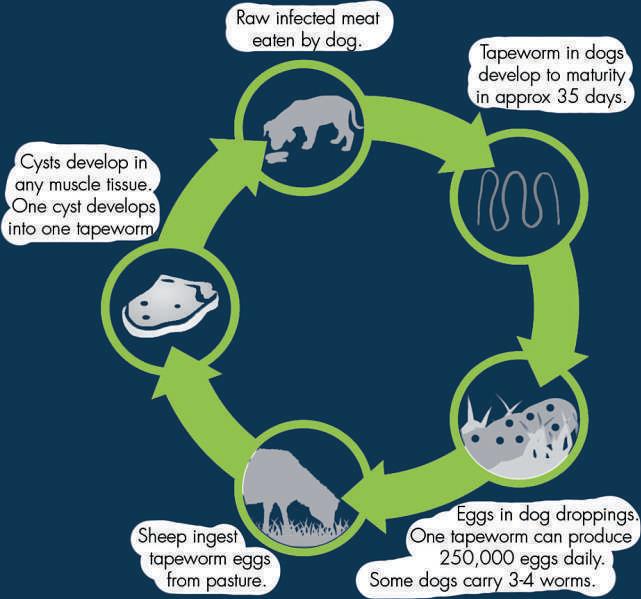
Beef + Lamb New Zealand chairperson Kate Acland says that while there is positivity in the sector, challenges remain.
Seven young growers to battle it out
Seven young horticultural workers from across New Zealand have been named as finalists in the national Young Grower of the Year competition for 2025.
They will pitch their knowledge and skills against one another over two days of challenging modules, including a leadership question-and-answer panel at the national final to be held at Lincoln University and the Air Force Museum of New Zealand in Christchurch’s Wigram from September 10-11.
The competition celebrates the success of young people in the industry, as well as encouraging others to consider a career in horticulture.
HortNZ chief executive Kate Scott says the annual event plays an important role in highlighting the wide variety of different career opportunities in the industry
“Our seven finalists, along with the many other young growers who competed in the regional competitions, epitomise the skill, passion and commitment of the talented people working across the sector.
“What has really stood out is how much all the contestants enjoy their work, the training and career progression that has been provided to them, through on and off-the-job training, and their enthusiasm for raising awareness to other young people of the many great career opportunities the industry offers.
“Thank you to the organisers and to all the regional Young Grower organisers countrywide.
“The regional competitions and the national Young Grower of the Year final could not happen without the commitment of so many industry professionals across the country who give up their time to help organise them. Good luck to all of our finalists.”

The Young Grower of the Year 2025 finalists are:
Phoebe Scherer: Bay of Plenty
Phoebe Scherer, 29, from Tauranga, is a technical lab manager for Apata.
She gained a degree in biology and evolution and did her OE before taking a seasonal job with Fruition Horticulture.
The company offered her a fulltime role as an assistant consultant, where she “plunged
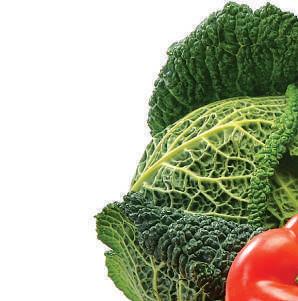
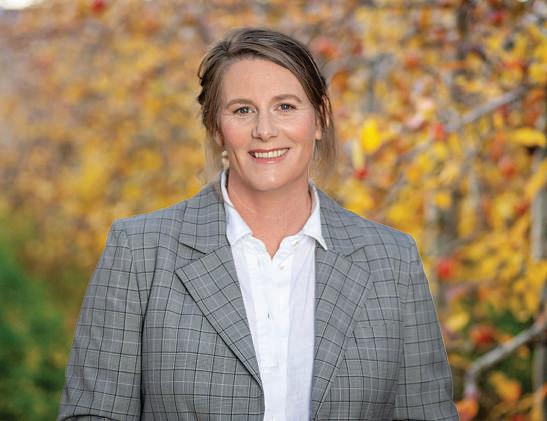
straight into the deep end and loved it”.
Last year, she joined Apata, a postharvest service provider for New Zealand kiwifruit and avocado growers.
“I really enjoy being able to collect data about what is going on in orchards and give growers information,” she says.
“I particularly like that you can make improvements in an orchard in such a short time period, just in a season, that helps growers to grow even better fruit.
“The Young Grower competition is so important for the development of the next generation of horticulturists and to get people inspired.”
Steven Rink: Canterbury
Steven Rink, 30, a production manager for Oakley’s Premium Fresh Vegetables in Southbridge, grew up in South Africa.
He gained a degree in conservation and ecology before heading to New Zealand in 2019 for a year of backpacking Once here, he fell in love with the sector through a holiday job.
At Oakley’s, Steven has progressed from an assistant to manager role, and says he’s had exceptional support to develop his skills.

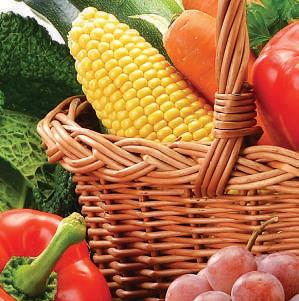

Horticuture New Zealand chief executive Kate Scott says this year’s finalists in the Young Grower of the Year competition epitomise the skill, passion and commitment of the talented people working across the sector
“It’s just great. There is no better feeling than harvest day when there are bins full of produce ready to be sent to the packhouse and then all over New Zealand, to feed people.
“The Young Grower competition plays an important role in highlighting the young talented growers coming through the sector.”
Lydia Goodman: Central Otago Lydia Goodman, 26, from Cromwell, assistant orchard manager at Central Orchard Management and packing manager at CentralPac, was raised on a farm in England.
After moving to New Zealand, she transitioned from cattle and crops to cherries.
“I literally fell into it when I was a backpacker. I just loved it, the outdoor work and the passion and leadership in the industry. I have been here ever since.
“One of the best things is teaching the team how to do their job, and seeing the passion develop as they learn and understand things like the physiology of a tree. That really fuels me
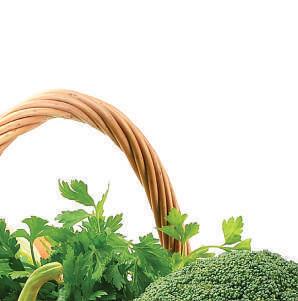
“The Young Grower competition develops technical skills and builds connections with like-minded professionals.”
Horticulture (Fruit Production) Level 4.
“My job involves a lot of data collection and metrics to help make informed decisions about the trees,” she says. “It’s the nitty gritty stuff and I really enjoy that there is something new every day
“I would really like to see more high school students coming along to support the Young Grower competitions to find out about the sector and all the different career options that are available.”
Sam Carter: Hawke’s Bay
Sam Carter, 29, from Hastings, assistant manager for T&G’s Pakowhai sector, gained a degree in law and geography while doing holiday stints with the Johnny Appleseed company in Hawke’s Bay.
“I went back after finishing at university, did a full season and just fell in love with the industry,” he says.
It’s his first time entering the Young Grower competition and he has thoroughly enjoyed it.
“It’s an important competition because it really tests and stretches you, promotes the industry to others and promotes leadership and growth within the industry. I’m looking forward to the final.”
Amelia Marsden: Nelson
Amelia Marsden, 29, is a kiwifruit manager at Willisbrook Orchards in Brightwater. She grew up on a dairy farm on the West Coast of the South Island, gained a Bachelor of Agriculture and began her career in the dairy sector.
However, a wrist injury due to a cow kick saw her switch to horticulture and she hasn’t looked back.
“I really enjoyed working in dairy farming but I noticed a lot of differences in horticulture,” she says.
“Agriculture has come a long way in terms of accessibility for females, but I went from being the only female in my dairy job to working with a lot more. There is less brute strength required, which makes horticulture very accessible for everyone.

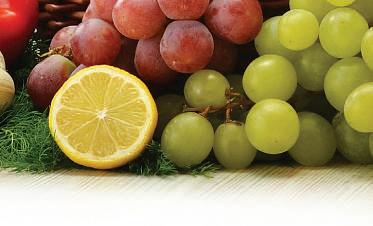

Rhiannon Morrell: Gisborne Rhiannon Morrell, 25, is a member of the technical team for apples with Craigmore Sustainables.
She was planning to go to university, but took on a job in vegetable growing in the interim and enjoyed it so much that she decided to make horticulture her career.
She is now studying for the New Zealand Certificate in
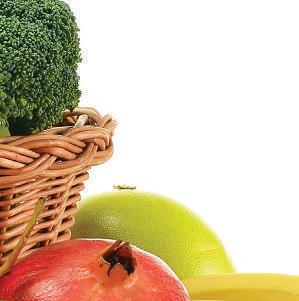


“The Young Grower competition is valuable for both personal development and promoting the industry to others.”
Jack Haddon: Pukekohe Crop manager Jack Haddon became interested in horticulture after getting a school holiday job with Sutherland Produce in Bombay when he was 15 He joined the company fulltime at 17 and moved to Balle Bros in 2022.
Now aged 22, he oversees the cauliflower and cabbage operation for the company.
“There’s a lot to it,” he says. “I like being outdoors a lot of the day, but also the variety – no day is ever the same – and the problem-solving involved.
“I’m operating large machinery and the complex systems and computers that run those. I’m using maths skills, managing information and data, working with spreadsheets, and you have to know all about health and safety and risk management.
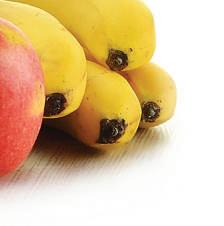
“There is a lot of on-the-job and external training available. I have had so much input offered to get me to where I am.”
To find out more about the Young Grower of the Year national final and to secure tickets to the awards dinner, go to younggrower.co.nz.
Desperate plea from struggling grain sector
‘Buy New Zealand made’ is the cry from an arable sector struggling with being undercut by foreign grain. By Monique Steele of RNZ.
Low product prices for arable farmers have prompted desperate calls from the often overlooked sector for New Zealand farmers, mills and shoppers to take up local grain.
Farmers of cereals like wheat, barley and oats have faced unstable prices and markets in recent years, competing with cheaper imports from Australia or European Union countries.
Farmer confidence soared to its highest level in more than a decade in July but not for the arable sector, according to lobby group Federated Farmers.
While it found 81% of dairy farmers were making a profit, 29% of arable farmers were making a loss. Nearly half the arable farming respondents said their mental health had been affected.
Harvest volumes in the year to July were down 2% on last year across milling, malting and feed to 97,500 tonnes, according to the latest Arable Industry Marketing Initiative (AIMI) survey of 110 farms. However supply was matching demand, with the volumes of unsold stocks up to 187,600 tonnes. As farmers considered plantings for the 2026 harvest, volumes were expected to fall 7% to about 90,500 hectares, the survey showed.
Margins squeezed Foundation for Arable Research (FAR) general manager of business operations Ivan Lawrie said farmers’ margins were “squeezed” as commodity prices had not kept up with the rising cost of production.
“It hasn’t been a brilliant year and obviously that affects the mood. We’ve had some issues around a very wet harvest for most crops that affected yield and quality in some cases, and really the issue of profitability lingers on.”
He said historically, profitable times in dairy correlated to good prices in arable, but that was not currently happening.
“There’s certainly been an increase and/ or maintenance of some of these feed products imported into the dairy industry Obviously [Palm Kernel Expeller] being the leading one.
“And while not all arable products are direct replacements for that there are


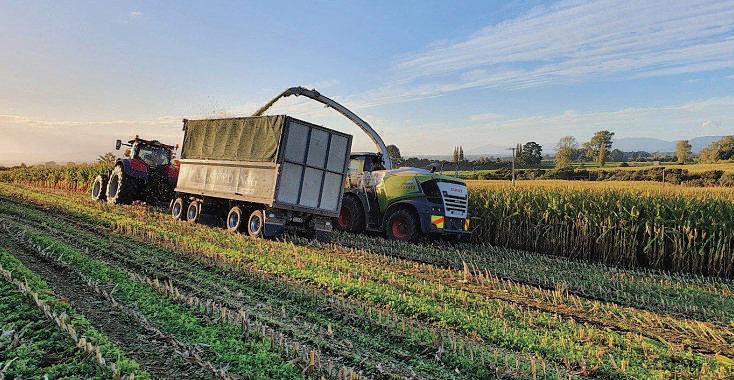
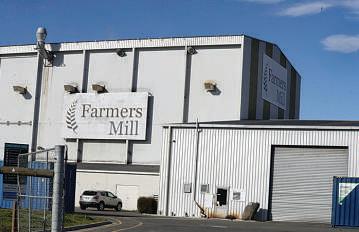
certainly things we could produce in New Zealand both on the dairy platforms and on arable platforms to let’s say, reduce the reliance on imports.”
Lawrie said buying local grain would support farmers and rural communities, but there was more transparency too around traceability to New Zealand’s highly efficient arable farms.
“When we import product, we actually do not have the same level of information as to where the crops were grown and how they were grown.”
Lawrie said milling wheat particularly was under a lot of pressure, and levels of 100,000-120,000 tonnes was “not sustainable in the long-term.”
“So we need to increase probably at least double that volume of milling wheat grown and used by end users in New Zealand.
“We are under a great danger of losing it if we don’t have critical mass.”

He said FAR was developing a trademark to recognise when mills use 100% New Zealand grains in flour and bread making, set to launch later this year.
South to North solution needed to boost local production
Lawrie said most North Island flour mills predominantly used imported grain for

“This becomes an issue that transcends just the pure transactions.
“It really does become, in turbulent times globally, a potential issue for our food security.
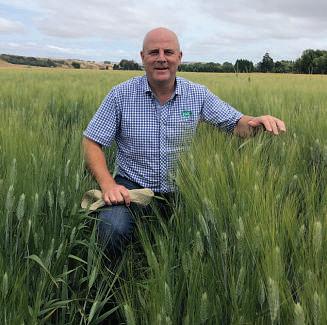
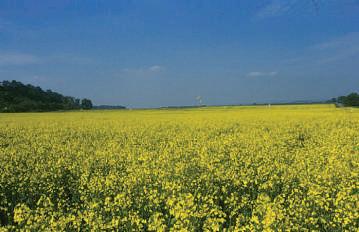
making loaved bread. He said they chose to import rather than getting southern grain sent up via the “not fully reliable” ferry across the “very expensive” Cook Strait.
But he said a solution to reduce the cost of freight could unlock the use of southern grain at northern flour mills.
“We’re looking at other options like can we boost coastal shipping in New Zealand to make more sensible bulk movement of grain.
“Can the rail and ferry combinations be upgraded to improve movement of grain from the South Island to the North, and also can we create infrastructure for storage consolidation, grain drying and improvement of facilities on port to be able to load grain onto ships, etcetera.
“All of that is still to be done, and unfortunately we probably had better infrastructure for that 70 years ago than what we have on now.”
Lawrie said it was in talks with the government in the hopes of a collaborative approach between public and private sectors, but appreciated there was “not a lot of surplus”.
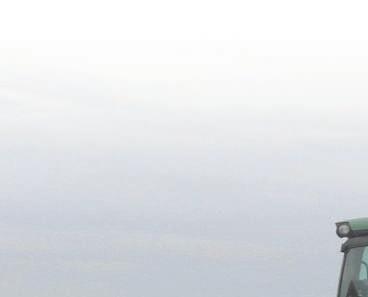
He said the world has seen in the past five years alone how cargo shipping routes and operations could be disrupted by conflicts or pandemics.

“Ensuring that New Zealand a backbone of producing its own staples for the ability to feed its own people is actually quite important.”
In July, the Commerce Commission granted clearance for food manufacturing giant George Weston Foods NZ, trading as Mauri New Zealand, to buy South Canterbury’s Farmers Mill. It was considered one of the few remaining mills using exclusively New Zealand grain, but the commission said it was satisfied the acquisition was unlikely to substantially lessen competition in the New Zealand market.
The arable sector employed about 11,300 people, earning $800 million domestically and $260m through exports.
Will farmers pivot towards more profitable crops?
Bevan Lill, a Mid-Canterbury arable farmer who was also part of Federated Farmers’ arable industry group, said prices for contracted milling wheat had not changed in 15 years, falling behind the cost of production.
He said these days, there was huge diversity among arable farms, as farmers looked to other crops or activities to generate revenue, and warned there would likely be some loss of arable.
The forage seed industry was also considering the impact of low profitability in the arable sector.
Dr Derek Woodfield, who had just retired as general manager of PGG Wrightson Seeds, spoke at the Plant Breeders Forum in Ōtautahi Christchurch
He said since farmers farmed for either capital gains or profit, challenges in arable were expected to flow down to the seed sector.
“Where I see a real risk for us is actually the viability of the arable sector in New Zealand,” Woodfield said at the industry event.
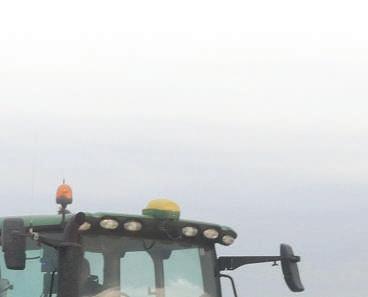
“There have been close to zero capital gain on those properties per hectare in the last 10-15 years. That is a risk for arable farmers.
“So as the moratorium or whatever on dairy conversions comes off are we going to see a lot of our arable industry transition into dairy?” – RNZ
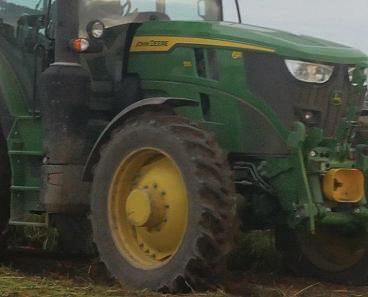

Above: Arable farmers expect production to increase. Below left: The Commer Commission granted clearance for George Weston Foods NZ, trading as Mauri New Zealand, to buy South Canterbury’s Farmers Mill. Below right: Harvest volumes are down and almost a third of the sector is making a loss. Inset: Commodity prices for grain have not kept up with the cost of production, says Arable Research’s Ivan Lawrie.
The arable sector generates just over a billion dollars in export and domestic sales EVE HYSLOP

The right note




Cellist, composer and teacher Caitlin Morris, along with her husband, Andrew Atkins, a pianist, conductor and teacher, found Kahutara in South Wairarapa to be the perfect place to call home. Now, as co-founders of the Wairarapa Youth Orchestra, they are nurturing a new generation of musicians.


By Felicity Connell.



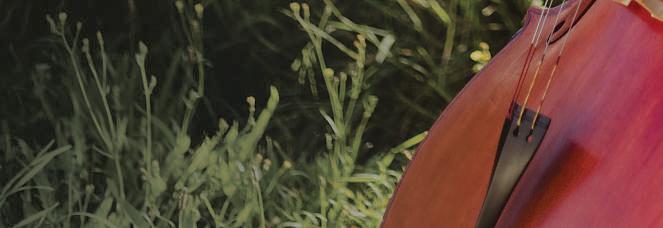
Walk past St David’s Church in Carterton on a Monday afternoon and you’ll hear a joyful sound – percussion, strings, woodwinds and brass. It might be the dramatic Star Wars theme or a catchy ABBA tune and, while the notes aren’t always perfect, the energy and enthusiasm are unmistakable – it’s the sound of the Wairarapa Youth Orchestra.
Co-founding the orchestra in 2021 was Caitlin Morris’ way of giving back.
“When I lived in Blenheim, there was this tiny, little youth orchestra. It was the best day of my week as a teenager. I just wanted to give that experience to students in Wairarapa,” the 30-year-old says. Growing up, she learned piano and dabbled with guitar, but at 15, fell in love with the cello. That passion came with its own challenges teaching her perseverance early on.
“When I did my first cello lessons, I had to walk from one side of town to the other with my cello, because my parents were always very busy. So I got to know the struggles of being a cellist – it’s a big instrument – carrying it around from a young age.”
Her talent and dedication led her to study at Te Kōkī Victoria University of Wellington New Zealand School of Music, where she completed a Master of Fine Arts in Music. It was also where she met her now-husband, Andrew, 32, a fellow student.
After music school, an overseas experience working in London as a live-in nanny saw Caitlin take a temporary break from music, wanting to do something completely different.




But music had a way of finding her.
“The girls I looked after played Suzuki violin, and I got to observe all these amazing violin lessons and workshops by this incredible Suzuki violin teacher. It inspired me, just seeing how she commanded the room of students – all these tiny little tots – it was just amazing what she got them to do.”
While she enjoyed her time in London, love lured her home. “We were doing long distance, but we just couldn’t live apart any longer.
“Andrew actually came over and proposed to me. So I said, ‘Oh well, that’s



growing vegetables and living off the land. We are very happy in the garden together, as that is a bit of an outlet for us as well.
“We try and grow a bit of everything. We do a lot of preserving – just anything we have in the garden, we always just try and utilise it.”
In Wellington, Caitlin and Andrew had both worked with Te Paemanu Korihi Virtuoso Strings, a charitable trust based in Porirua – Andrew as a conductor and Caitlin as a tutor.
Inspired by the programme’s vision of making string instruments more accessible to young people, they drew on that experience when establishing the Wairarapa Youth Orchestra.
“I always knew I wanted to work with music. I’ve always wanted to work with children and to use music to help the community. We had seen a bit how a non-profit organisation worked, and we thought, ‘Well, if we’ve seen them do it, we may as well try it ourselves’,” she says.
it. I’ve got to go back to New Zealand now’.”
After a short stint in Te Upoko o te Ika a Māui Wellington, they moved to Wairarapa ki te Tonga South Wairarapa.
“We were looking for a place to rent, and Andrew’s second cousin had a place in Kahutara. We went over there, and we just ended up really loving the rural lifestyle.”
Here, alongside their musical pursuits, they can indulge their shared passion for gardening and preserving.
“Because both Andrew and I grew up in rural areas, we really love gardening and
However, it wasn’t a matter of replicating what Virtuoso Strings had done in Porirua. Caitlin knows from her own experience that living rurally presents unique difficulties.
“I think one of the biggest challenges in Wairarapa is travel. The travel times between towns are huge, especially for families who are working and doing all these other things after school. So since we started the orchestra, we’ve been helping with transport.
“As a teenager, I got to the stage where I had to travel from Blenheim to Nelson, which is about 120 kilometres each way, every fortnight for cello lessons.
“And I was very lucky that my parents were able to do that for me. But there are
Above: Caitlin Morris and husband Andrew moved to Wairarapa, where they are enjoying rural life and running the youth orchestra.
Left: The cottage Caitlin and her husband live in is an old farmhouse surrounded by a farmland where stock are often grazing. They have planted vegetables, which along with fruit trees, complete the rural outlook
PHOTOS: SARA TANSY/ SHEPHERDESS


so many families now with this different financial climate, both parents working all the time, and I guess we just wanted to do something to help.”
The 50-strong orchestra and an accompanying scholarship lesson programme are supported by the local councils, Creative New Zealand, and Lions and Rotary Clubs around Wairarapa “It just makes learning more affordable for the children. We’ve also been very lucky; we’ve been gifted instruments by community members and orchestras in Wairarapa, Wellington and Palmerston North, and funding to buy others. It’s meant we can have instruments that perhaps aren’t as common, like French
Caitlin Morris says the youth orchestra is having a positive impact in the wider community. She is now also studying towards a Master’s in Cello Performance part-time by distance through Ōtākou Whakaihu Waka Otago University, under Heleen du Plessis
with a lot of tuakana teina relationships, with the older students mentoring the younger ones. So it’s become that kind of community feel now.”
The impact of the orchestra isn’t just visible in performances – Caitlin gets direct feedback from the children, offering glimpses into what the orchestra experience means to them.
“We’ve had some gorgeous letters written to us from the kids. They say things like, ‘When you join the orchestra, you are friends with everyone, so it’s that safe space’, and ‘I love orchestra because there’s no bullies here’.
“They’ve also loved how the orchestra has helped them grow confidence in their own playing, and that they have more confidence as a performer getting up in front of others, and how it’s changed their lives, and they’ve made lifelong friends.”
Knowing that her work with the orchestra is making a difference is motivation for her to keep going.
“I do get a lot out of it because, as a teacher, me doing something for them gives my life more enjoyment. I feel like doing something meaningful – seeing come into their own and their personalities develop – they become brighter and more open.
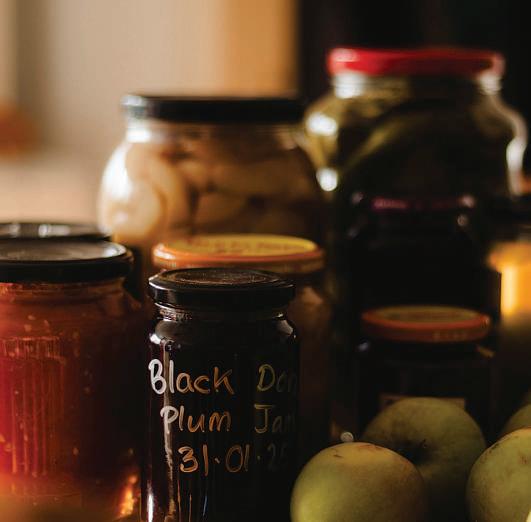
horn and trombone, alongside clarinet, flute, violin, cello and double bass. As a result, we currently have eight students who probably, without that funding, wouldn’t have picked up an instrument –and we aim to introduce more students.”
For Caitlin, the benefits of not only learning an instrument but playing together in an orchestra are clear.
“It’s very special, because not only do they develop their skills on their instruments but they learn how to play together as a team and work together to craft a large ensemble sound, which is actually quite difficult to do. I think the biggest thing that the students are actually getting out of it is the social aspect,
developing new friendships.
“We’ve seen children who have been quite isolated at school because they don’t fit into the norm stereotype that many New Zealand schools have, which is ‘I must be really great at sports to be a cool kid’.”
The crucial role music plays in fostering well-being is something she has experienced herself.
“I know that as a young person, learning music definitely helped my mental health struggles, and has been a part of my life getting through difficult times. Also, that social part of it, as well as assisting with their well-being, is important. Our orchestra’s become more of a whānau
“I’ve heard feedback from parents like, ‘When my child goes to orchestra, they come home happy.’ I think that’s why I keep doing it. It’s a lot of work – wrangling children, sorting out the music, the venue, the this and that.
There are always challenges to work out and overcome. Luckily now we’ve got an administrator, along with a great committee. When we first started, we were quite tiny, with only a couple of parents, so now that support network is growing as well.”
Caitlin is determined that kids growing up rurally should have access same opportunities as their urban counterparts.
the end of the day, it’s about participation in the arts – giving students that opportunity to participate and see what it’s like to play an instrument, to work as a team, to lead and help others, and share music with the community
“Our biggest goal is that the youth orchestra remains a sustainable organisation. A lot of what we are doing is trying to find ways to fund it, make it accessible for the students, and to have it be sustainable, always, for the community. Because there are so many kids for whom music is their thing and that’s their safe place.”
This story appears in the Takurua Winter edition 2025 of Shepherdess magazine, out now. Find the edition in supermarkets, dairies, and specialty book and design stores across the motu. Subscribe or order your copy online at www.shepherdess.co.nz.

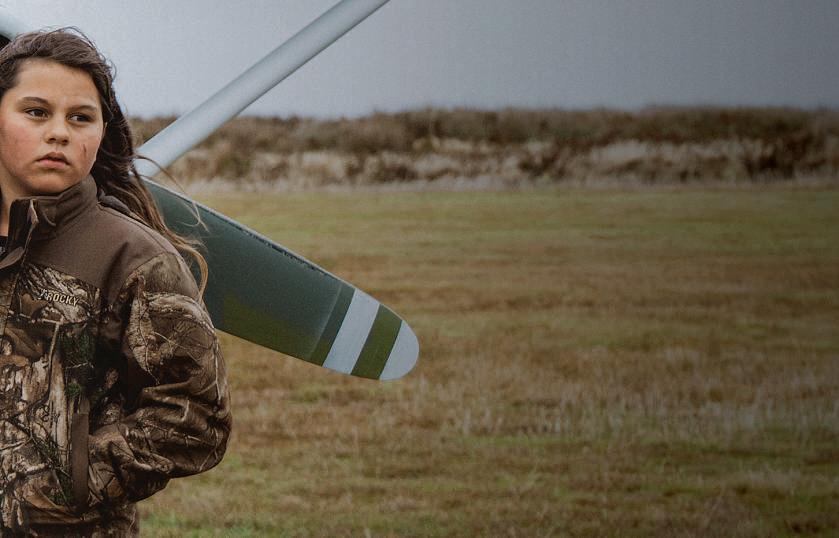
Between her work with the youth orchestra, mentoring and teaching youth, Caitlin is often stretched for time to enjoy gardening but tries to get out as often as she can to pick fresh fruit and vegetables.
“Our most successful preserving adventure has been our gherkins because they’ve lasted us for so long ...”
Complacency a risk when job seems simple
The risks of complacency when undertaking a seemingly ‘simple’ job are the subject of the latest safety alert from Safer Farms.
Safety alerts document real-life incidents, distilling key lessons from farmers into concise, one-page handouts for managers to use in safety discussions with their teams.
In this case, a fencer working to clear away deadfall under a shelterbelt was knocked unconscious by a falling loose branch and needed to be taken by helicopter to hospital
The incident highlights the importance of having a second worker on site for all chainsaw operations.
A colleague would have been able to help monitor hazards and clear the work area to address the risk – and seek prompt medical support and provide first aid following the incident.
The deadfall had been caused by a snowstorm the previous winter.
The fencer had done similar tasks many times before and assessed it as a “simple 15 to 20-minute job”.
He placed cones to mark the area and put on the correct PPE (personal protective equipment), including a helmet. He was
working alone, but about 250 metres from other people in the stockyard.
After making an initial cut, he went back to the start of the belt to begin a second run, but looked up to see a branch that had been hung up dislodge and fall towards him.
Because he had not cleared away the debris from the first cut, he had no escape route or freedom of movement.
His helmet took most of the impact –had he not been wearing it, the blow could have been fatal – but he was still knocked out None of his colleagues were aware of the incident
When he regained consciousness, he should have immediately notified his manager, but instead he continued working and soon began experiencing symptoms of concussion.
Having finished the job and returned to the yard, he collapsed. This was the first time his co-workers knew he had been injured.
They followed the farm’s emergency plans and called 111, but were unsure whether to activate the fencer’s personal locator beacon (PLB) as well.
The fencer was flown to hospital for a CT scan and observation
This alert can be used to discuss
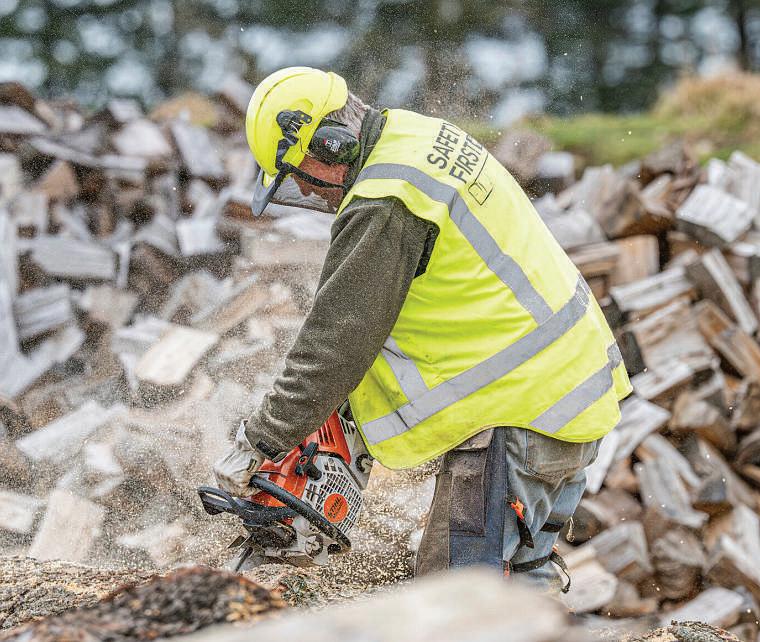
moment’s inattention
with staff the importance of:
■ Never being complacent. The fencer has said he was being complacent because the job was simple. This led to him not having a second worker on hand and not clearing away debris after the first cut.
■ Working in pairs. A second worker should be on site for all chainsaw operations.
■ Freedom of movement and identifying an escape route – these are fundamental to safe chainsaw operations.
■ Immediate reporting. Any incident involving an injury should be reported
immediately, and you should not continue working. Being injured puts yourself and others at more risk.
■ PLB activation. The employee’s PLB could have been used as a backup to the 111 call.
To view the safety alerts, visit. farmwithoutharm.org.nz/safety-alerts. Alerts can be printed out for use in training and discussions and there is an option to be emailed when new safety alerts are added.





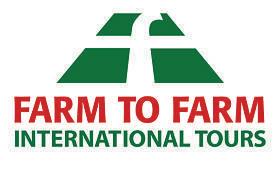












Reducing the risk of manual handling
According to the New Zealand Accident Compensation Corporation (ACC), it received two million claims in the 2024 calendar year (January to December). Of these, 18,925 claims came from the agriculture industry.
Working in agriculture is physically demanding. Inexperienced or unfit workers are more likely to be injured through poor manual-handling techniques. Manual handling is a leading cause of injury in the agricultural sector.
Pulling, pushing and incorrectly lifting and carrying heavy tools, equipment, bags of feed or fertiliser can lead to severe muscle strain. As can repetitive tasks such as bending, twisting and stretching to pick harvests or manually loading and unloading vehicles and trailers.
Providing new and inexperienced employees with instructional training on safe lifting techniques is not enough to prevent injuries occurring. But with the right policies in place, most injuries are preventable.
It’s also important to look at how tasks are being completed and assess whether alternative methods could be safer. Sometimes employees who are undertaking tasks can have really good
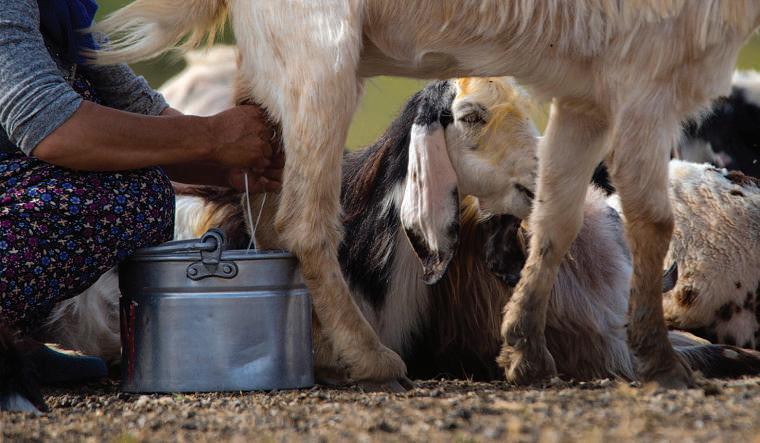
ideas about how a job may be completed more safely.
Consider what is a safe working load and how many people are needed for a task to be completed without risk. Can the task be automated or aided by machinery?
Muscle and ligament strains are common among farmers and farm employees. Many of these strains result from attempting to lift objects that are too heavy, or twisting and bending while carrying a heavy load.
During calving, foaling and lambing, or shearing season, manually lifting stock can be strenuous. Installing drafting and drop gates, as well as mechanical lifting aids or hoists, can reduce the
amount of manual lifting required. Injuries to joints, especially the shoulders, neck, back and knees, can have a severe impact on your own health or that of an employee, affecting the day-to-day operations of your farm.
Promoting a healthy and safe working culture can make employees more aware of injuries caused by manual handling and influence how they complete assigned tasks.
Ensure employees are trained correctly on the use of equipment and know how to safely complete manual tasks.
As a farm owner and employer, it’s your responsibility to ensure workers are only given tasks when you are sure
they can be done correctly and safely. When possible, employees should use a wheelbarrow, trolley, conveyor or other equipment designed to move or lift heavy loads.
It’s important to remember that not all farming injuries are a result of manually lifting heavy objects
While it might not seem like physical labour, sitting for a long time on a tractor, harvester or driving a truck over uneven ground can cause lower back and muscle strain from constant jolts and bouncing movement.
It’s best to step out of the cab every 30 minutes to stretch and walk around for at least a few minutes before continuing.
If an injury does occur, it’s important to create and maintain accurate records. Include a clear timeline, get an accurate account of the incident from any witnesses, and document the injury. Also make a note of follow-up actions to enhance safety and minimise the potential of future incidents.
Creating an incident alert allows you or your farm manager to be notified immediately when an incident occurs.
This ensures you’re aware of the injury and lets you take instant and appropriate action and if required notify the correct authorities.
Undertaking a thorough risk assessment for all manual tasks enables you to assess the potential risk of injury.
Talking with employees can help identify potential unknown hazards in their work.
This allows you to implement changes to minimise the risk of injury and keep your farm running smoothly and your employees healthy.

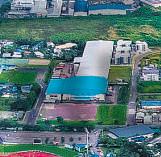


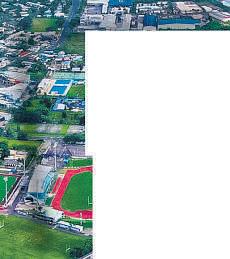









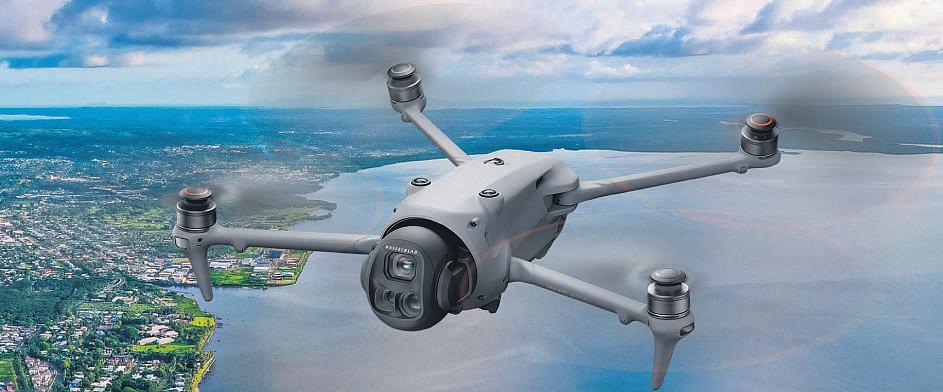













Repetitive tasks, such as milking, or incorrectly lifting and carrying heavy tools, equipment, bags of feed or fertiliser can lead to severe muscle strain.

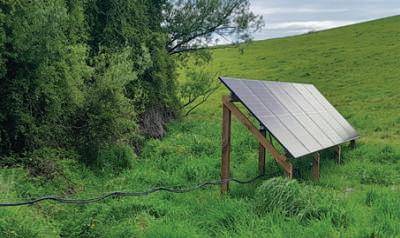
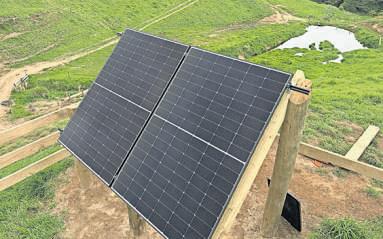
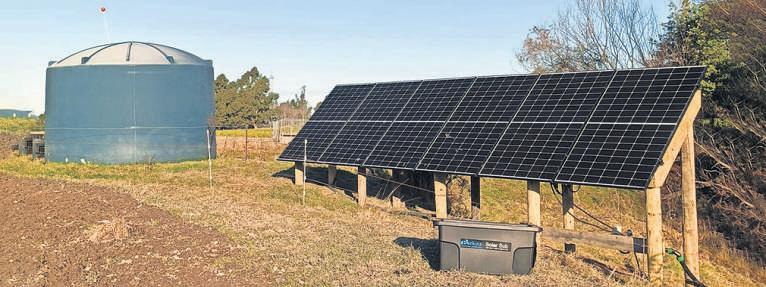
Solar WaterPumps
Solarwater pumping hasalwaysmadeenvironmental sense, nowitalsomakes financialsense!
We specialiseinsolar waterpumping solutions for livestock on remote areasoffarms.
We stock surface pumps,borepumps a pumps.Wecan pump up to 200,000 lit 300metresinheight.
For more information, contactSteve...
p. 03 471 4776
m. 021 02773762
e. steve@perkinz.co.nz

LowInput High Profit Genetics
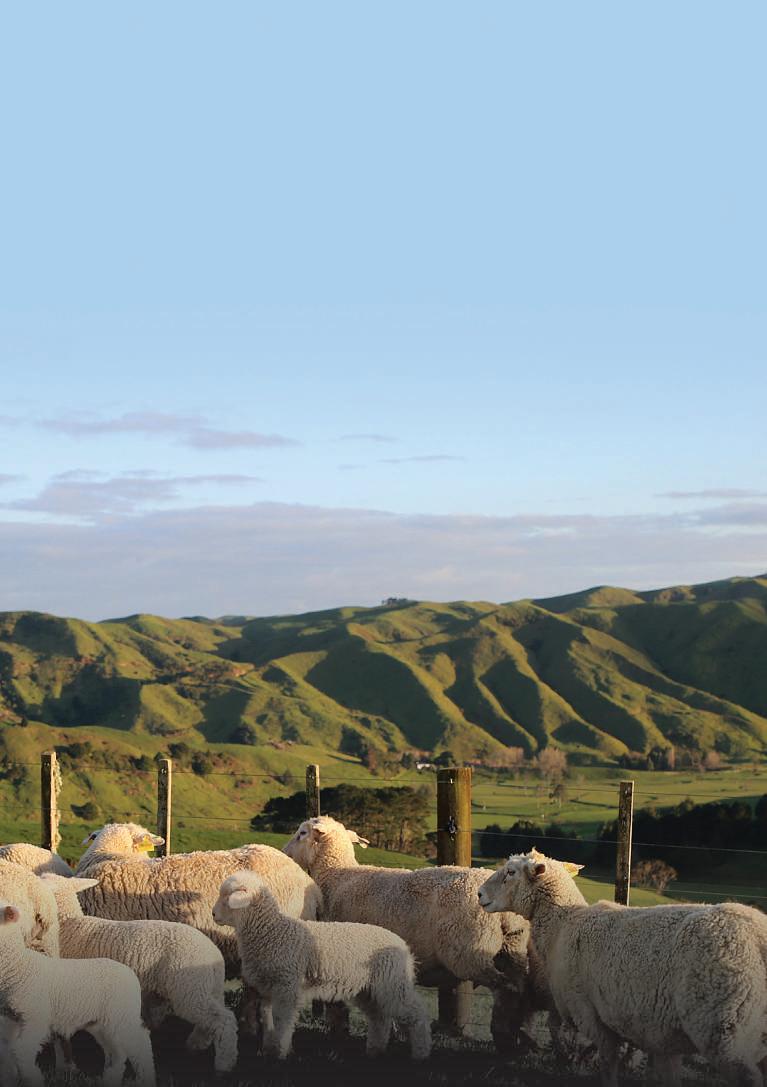
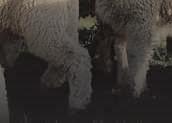

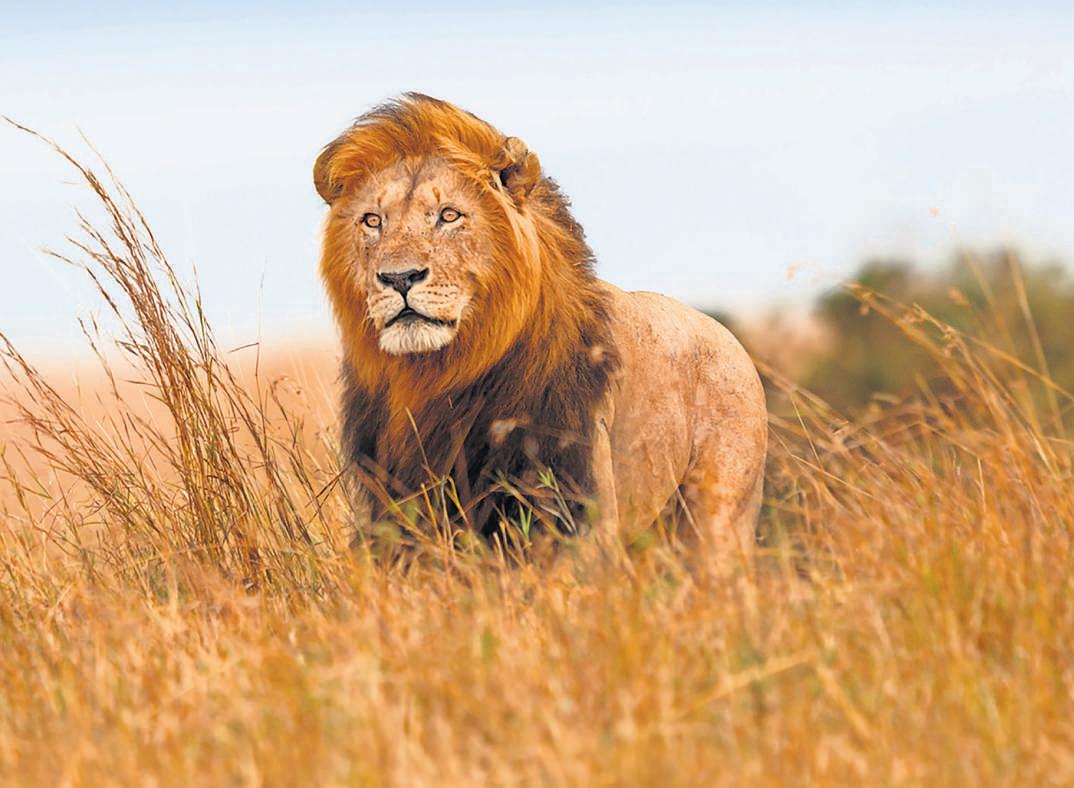




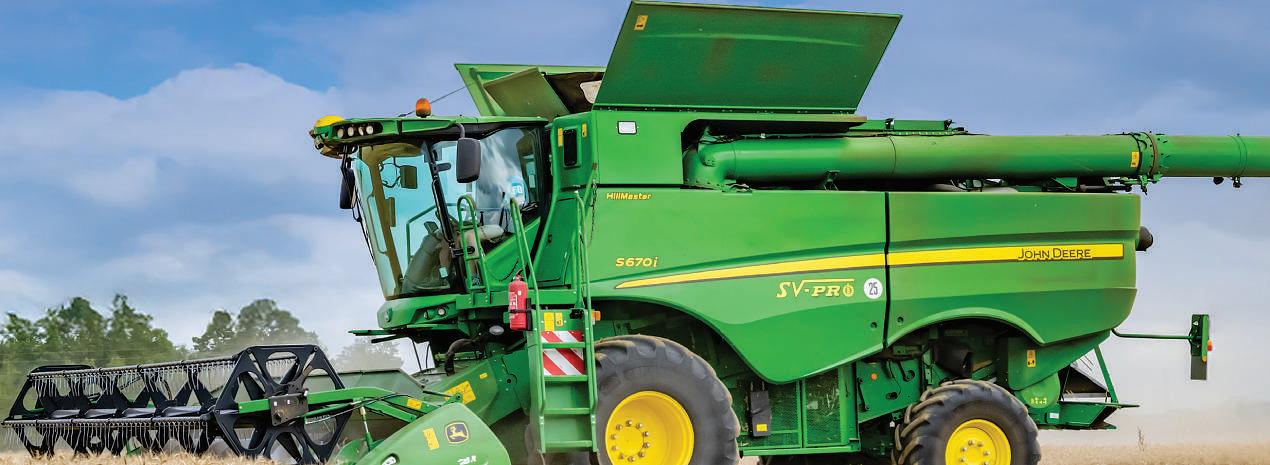
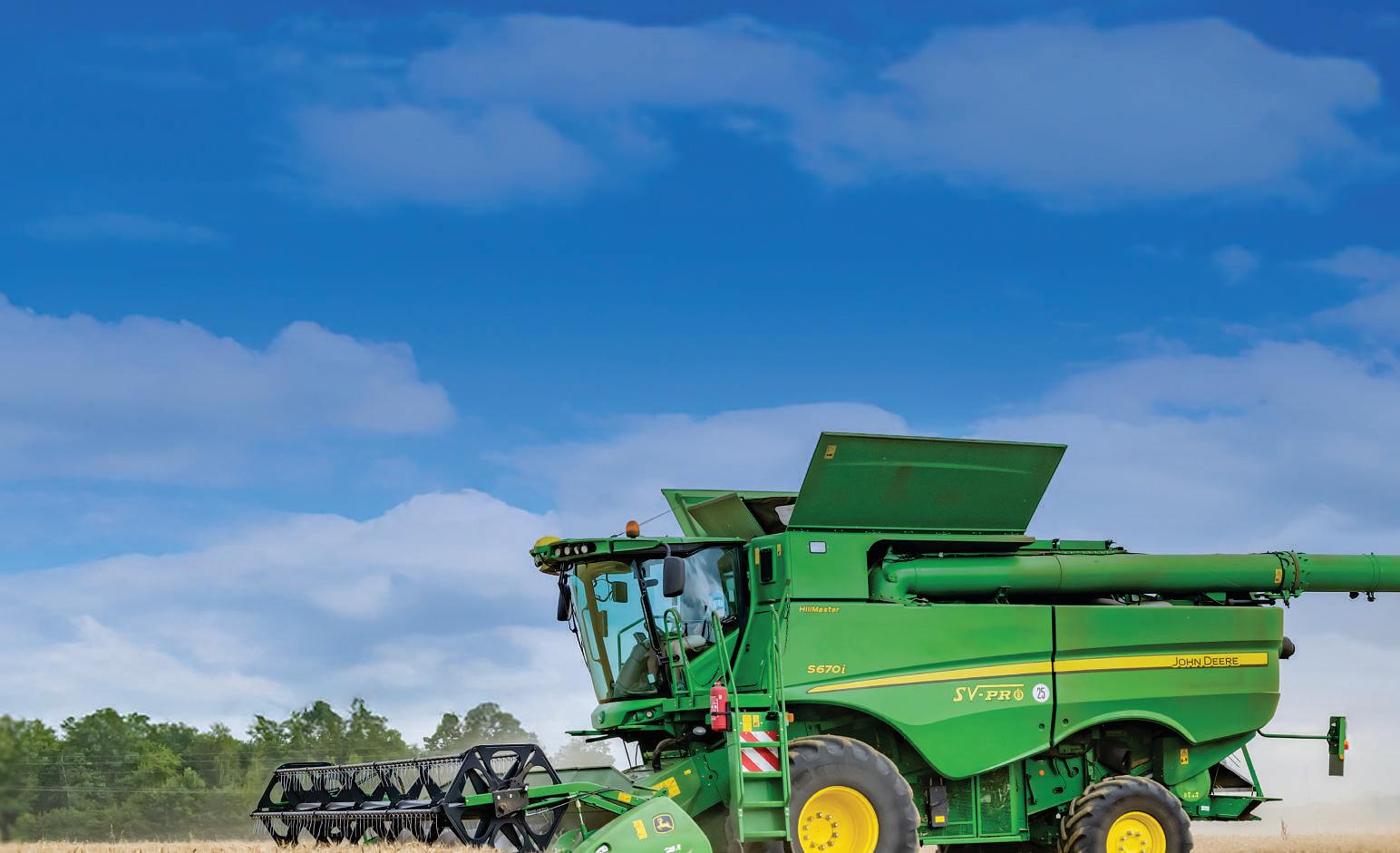



From poached to protected
A rugged journey into Zimbabwe’s Hwange Community Rhino Sanctuary reveals how villagers and rangers are changing their lives and that of the wildlife, writes Jennifer Parkes.
Idon’t think I’ve ever been so happy to see headlights. In the remote communal lands of Zimbabwe, where a cellphone signal and road signs don’t exist and roads are nothing more than a few tyre tracks, the bright headlights flashed in our eyes.
Now 7.45pm, two hours into darkness, after seven hours of travelling down obscure sandy tracks of our mere 160-kilometre road trip, I wasn’t sure we were going to make it.
We’d crossed rivers with undefined paths, local villagers had jumped in our vehicle to direct us, and then suddenly a friendly face knocked on our window and said, “Hey, I’m Pete, I’m so glad we found you.”
I’m proud to say we weren’t exactly lost, but navigating using a Google Earth screen recording, the little blue Google map dot and some handwritten directions meant I wasn’t 100% certain we would actually find our destination in the dark.
We were heading to the Hwange Community Rhino Sanctuary, just over the game fence in the southeast corner of Zimbabwe’s largest national park, to have the personal experience of walking with the only rhino in the Hwange region
Seeing the rhino is incredible, but it’s the groundbreaking community shift that has led to local villagers championing conservation that is the real takeaway for me.
The human-wildlife conflict is rife in many African countries, including Zimbabwe. While visitors on safari sit in awe of the magnificent African wildlife, local farmers see only predators who destroy their crops, hunt their cattle and ruin their livelihood.
Conservation is a hard concept to push when animals are literally taking food away from your family.
Driven by the community, in partnership with Imvelo Safari Lodges, a big employer of local villagers, the Hwange Community Rhino project was created.
It is a way to provide jobs and resources to the region, but, more importantly, the sanctuary has become a literal barrier between the national park, where animals jump the poorly maintained fences, and the villages.
The fully electrified sanctuary fence has meant that in the last two years, no villagers have lost animals or crops to safari wildlife. Success like this has meant the local people are changing their minds on the value of conservation and tourism
In fact, the villagers now call the head of Cobra security if they see unknown vehicles enter the area at night, just in case they are poachers after their rhino.
Ngamo head village elder Johnson Ncube has great plans for how the initiatives funds can benefit the community. Forty per cent of the visitation fee goes directly to the villages that have donated the land for the sanctuary, and funding distributions are decided on by a local committee.
Projects have included building a health clinic, a sports academy and funding water projects, with plans to create scholarships for further education, constructing a trades academy and bringing pumped water to every household Rhinos were nearly made extinct


The Hwange rhino project provides jobs and resources to the region, and its fencing protects local villagers from having their crops destroyed by predators. JENNIFER PARKES




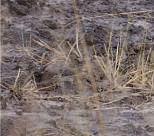


Fact file
Getting there:

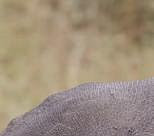





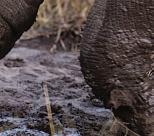


Emirates and Qatar Airways fly from Auckland to Victoria Falls, Zimbabwe, with stops and connecting flights. From Victoria Falls, Hwange National Park is a three-hour drive.
See:hwangecommunityrhino.com
Carbon footprint:
Flying generates carbon emissions. To reduce your impact, consider other ways of travelling, amalgamate your trips, and when you need to fly, consider offsetting emissions.
The writer’s trip was supported by Imvelo Safari Lodges.
by poachers in the early 2000s so a visit to the rhino sanctuary provides an opportunity to see all of the big five in Hwange National Park It’s a two- to three-hour journey from the tar-sealed main road, but the adventure is part of the charm and it’s a chance to see what is still quite uncharted territory.
A walk with the rhinos and Cobra anti-poaching unit is the highlight, where you can keep a safe but surprisingly close distance to these magnificent creatures.
You’ll meet Thuza and Kusasa, the inseparable male besties found playfighting and often snoozing near the Cobra camp like a pair of oversized puppies.
Cobras patrol the rhinos 24/7, with six-hour day shifts and three-hour night shifts. Their training, designed by an ex-army officer, is brutal; from their recent recruitment drive of hundreds of men and women, about 20 will transition to Cobra Patrol. As part of your visit, you will explore their headquarters, chat to the local Cobras and see head dog trainer Smile show off the agility and attack skills of their poaching dog.
There is still a lot to do to ensure the longevity of the project and help create self-sustaining villages that are thriving. So if you are up for a different type of holiday, then the newly coined voluntourism project is an incredible way to not only share your skills and help the local villagers, but also gain an authentic understanding of a culture so proud of its tourism project, beyond the crass village tours that are merely a photo stop.
Volunteer groups of four or more will stay at Mlevu Camp, inside the rhino

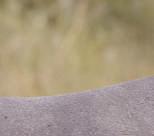




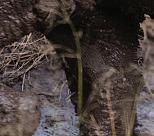






















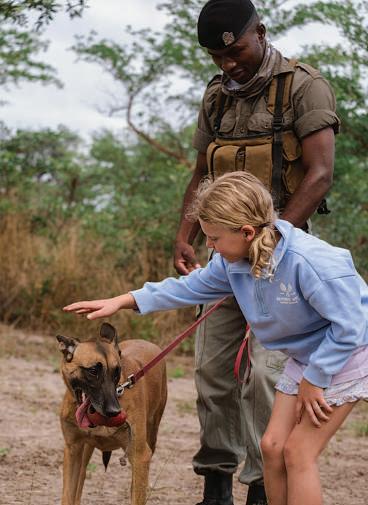
sanctuary, and I can assure that you will be well looked after. If you can request the lamb stew, you’re in for a treat.
Community and conservation projects manager Hannah Tranter has a number of groups volunteering this season, from intern vets to school groups raising funds for the local school.
Daniel Terblanche, security manager, envisions bringing tradies to share their skills – for example, building school desks – teaching the locals as apprentices, which not only provides essential supplies, but also creates a bank of local knowledge.


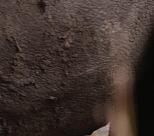






a













It’s not all work and no play as a volunteer, with opportunities to visit Hwange National Park and go on game drives with more than 45,000 elephants and, of course, the complete range of safari animals. We followed tracks to find a pride of 16 lions and cubs, sleeping in the trees Elephants and their babies, pyjama donkeys (aka zebras), wildebeest, impala and hippos were all in abundance, just over the game fence from the villages. If you meet Pete, he makes a mean cheeseburger off the back of his truck too.
Six-year-old Emilia with an anti-poaching dog.
Smile, the Cobra’s head dog trainer
Expect to see
complete range of safari animals at the sanctuary.


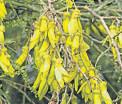




















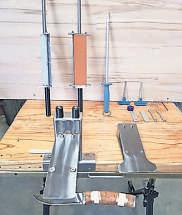
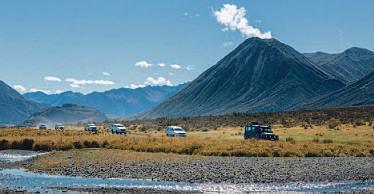




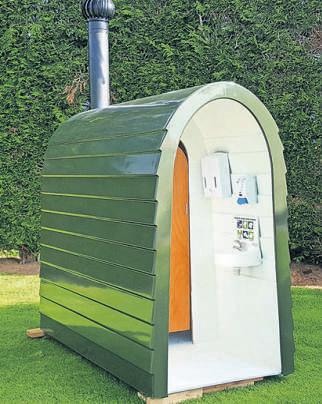


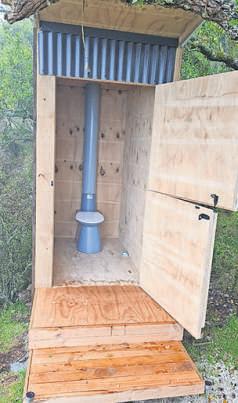


The EU10i’s fantastic portability,quietness and high-quality power makesitideal for awide range of home,recreational and professional uses.With amaximum output of 1000W,the EU10i is quiet andlightweight at only 13kg.
EU10i GENERATOR $1,899

Honda’s EU70iS has amaximumoutput of7000W.Itisthe perfect back up power solution forthe home or worksite.With an advanced electronic fuel injection system and large fuel tank it has an exceptionally long run time.Itfeatures Honda’s sine-wave inverter technologyfor smooth, highquality power flow
EU70iS GENERATOR $8,199
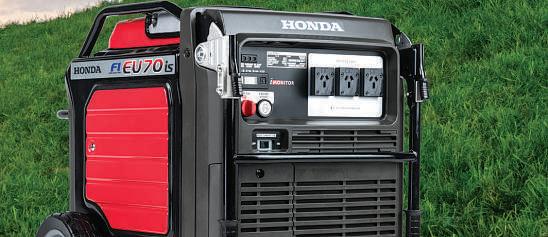






One of the worldsbest selling generators, the portable EU22i is perfect for awhole range of taskstohelp you get the jobdone Used for leisure,back-up power and on the job site,itpacksapunch with its GXR120 engine that is quiet and delivers 2200W maximum output.
EU22i GENERATOR $2,799

The Honda GX120 engine that powers the WB20 ensures easy starting,easy usage,outstanding fuel economy,low emissions and long-lasting durability. This 2” water pump has the capacity to deliver up to 600 litres per minute
WB20 WATER PUMP $1,099



Perfect for the motorhome,worksite, or just the occasional emergency use. The HondaEU32i is aclass leader with a newly developed enginedesigned for high performance andexcellent cooling, it deliversuptoamaximum of 3200W.
EU32i GENERATOR $5,099
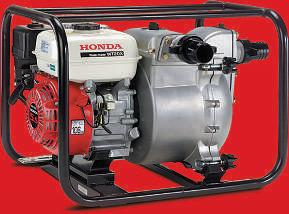
The WT20 is an environmentally-friendly trash pump withlow emissions, less noise than many competitor pumps andlow fuel consumption. Able to pump water withsolids up to 24mm, it’salso easy to open the pump housing if ablockage occurs. It’sideal for construction sites or on the farm.
WT20 TRASHPUMP $2,099
